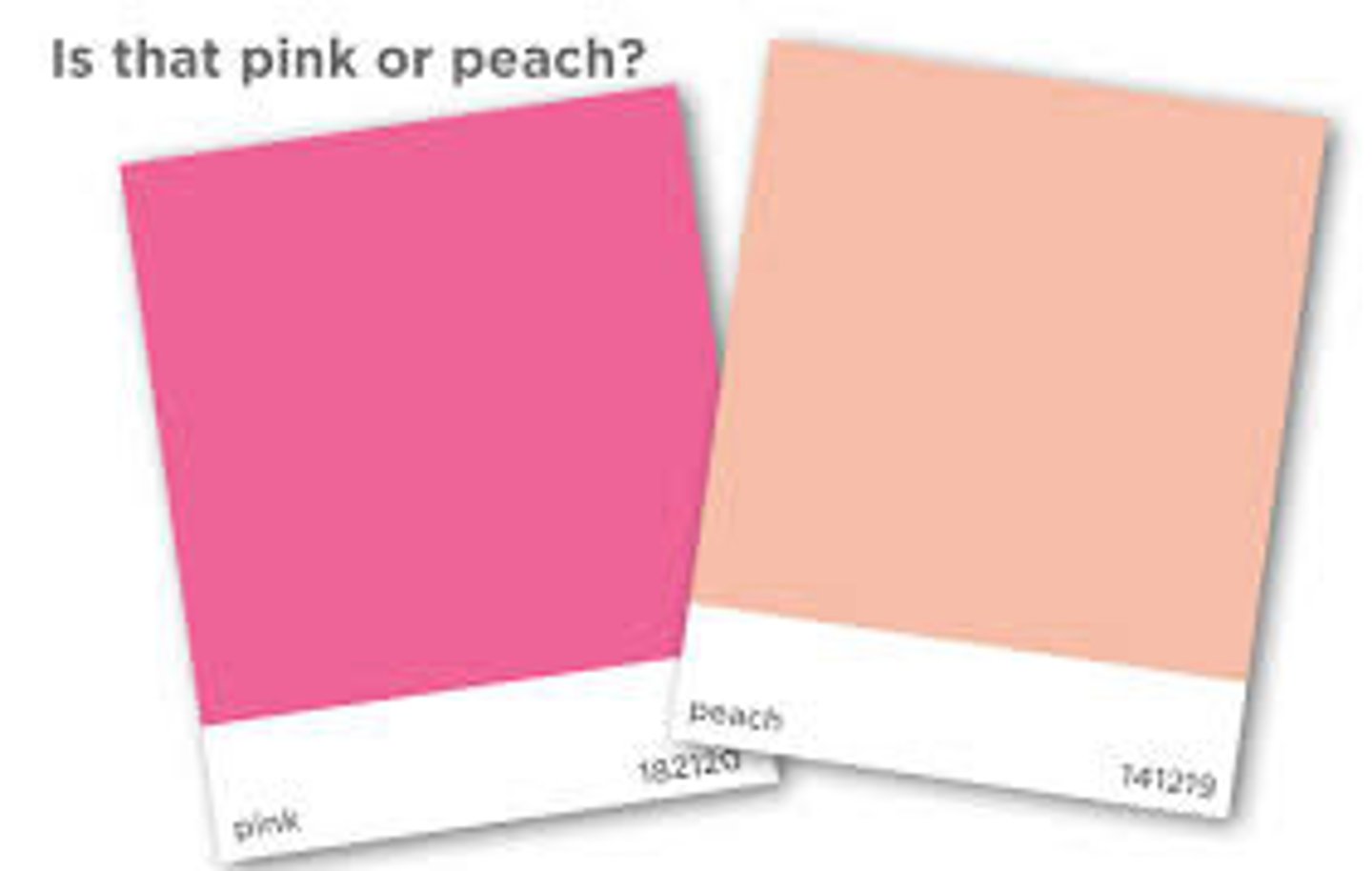AP Psych Berliner Unit 4
1/91
There's no tags or description
Looks like no tags are added yet.
Name | Mastery | Learn | Test | Matching | Spaced |
|---|
No study sessions yet.
92 Terms
Sensation
the process by which our sensory receptors and nervous system receive and represent stimulus energies from our environment
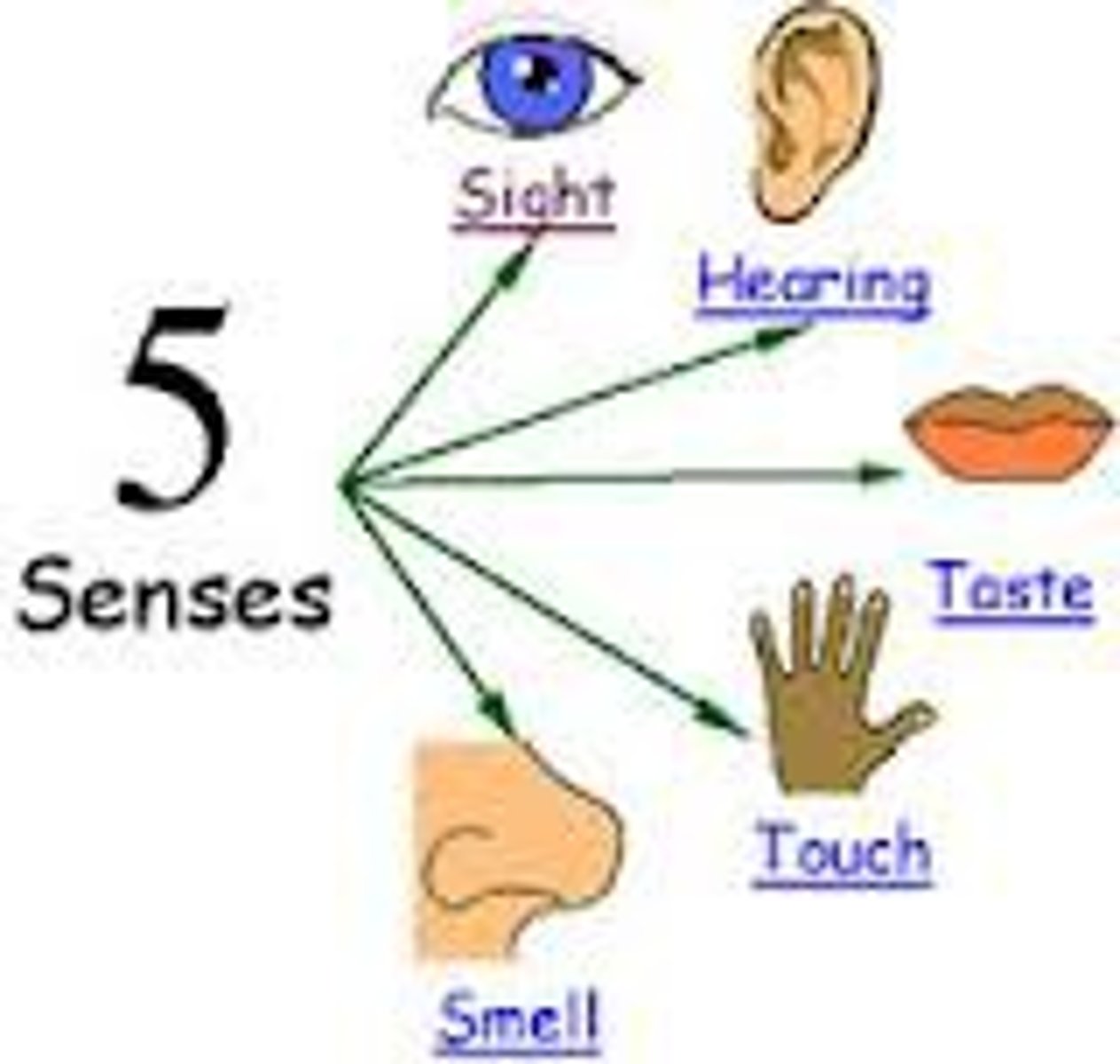
Perception
the process of organizing and interpreting sensory information
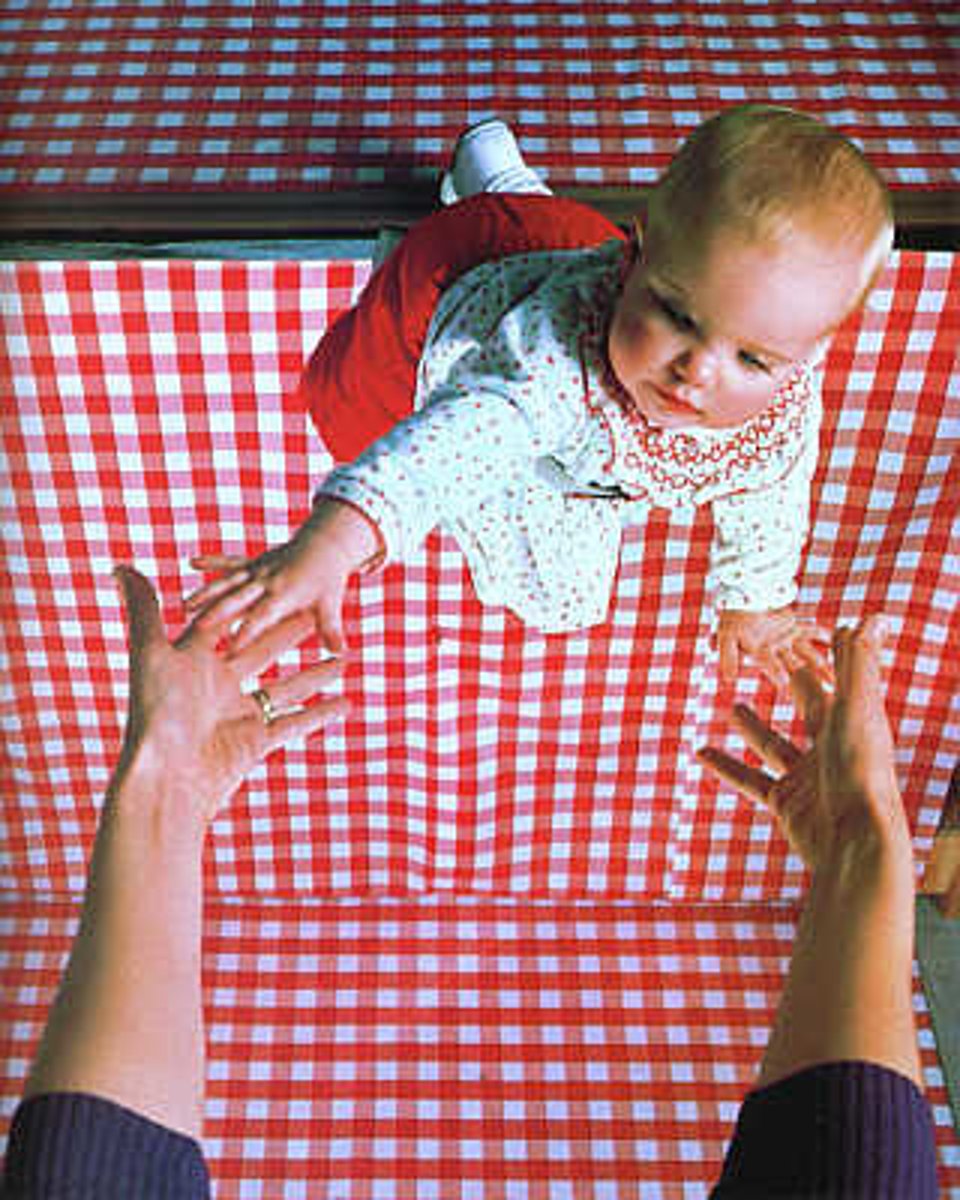
Bottom-Up Processing
a way our brain makes sense of information by starting with the small details and then building up to a complete perception.
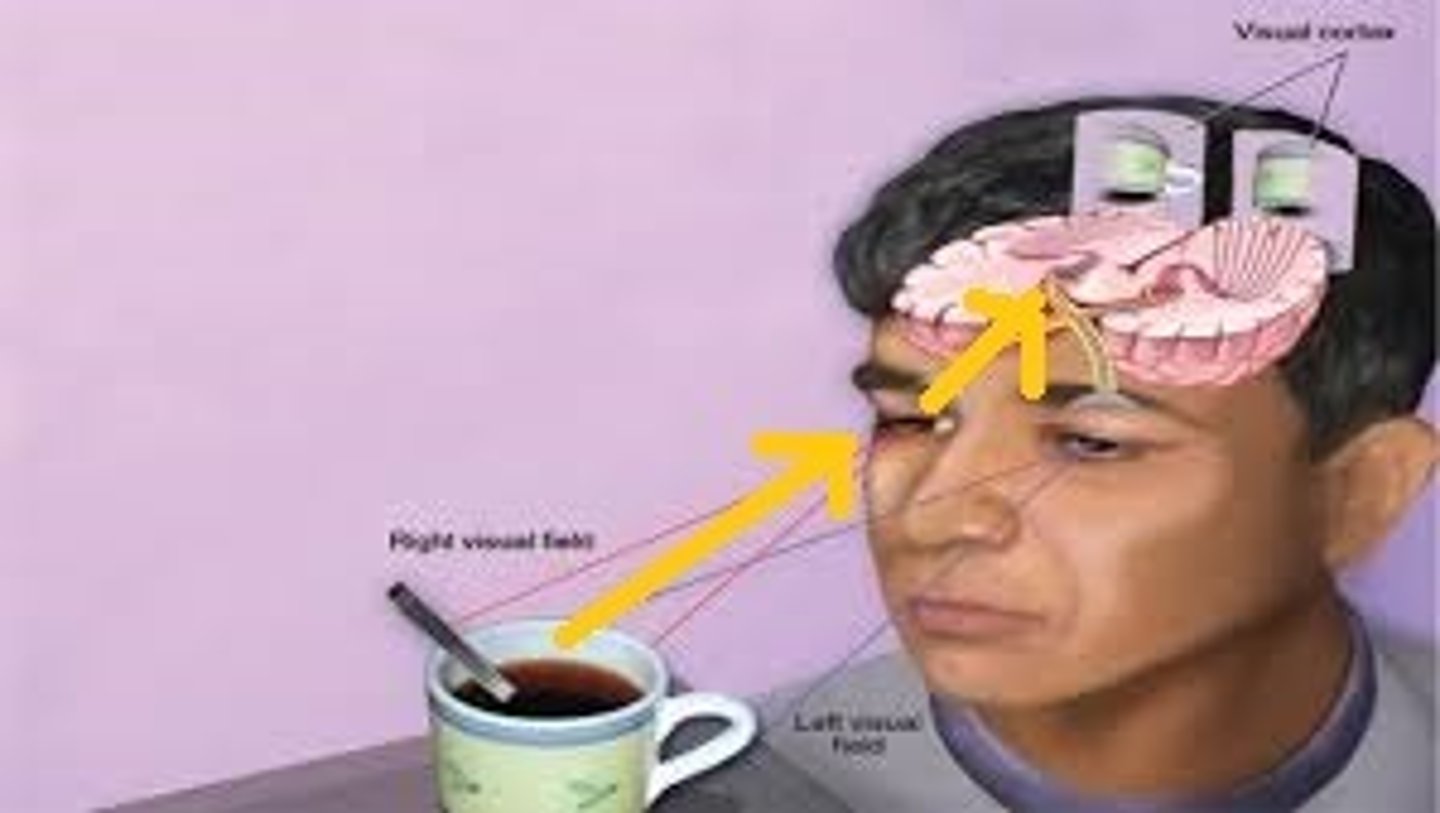
Top-Down Processing
information processing guided by higher-level mental processes, involves interpreting sensory information based on the larger context, prior knowledge, and expectations.
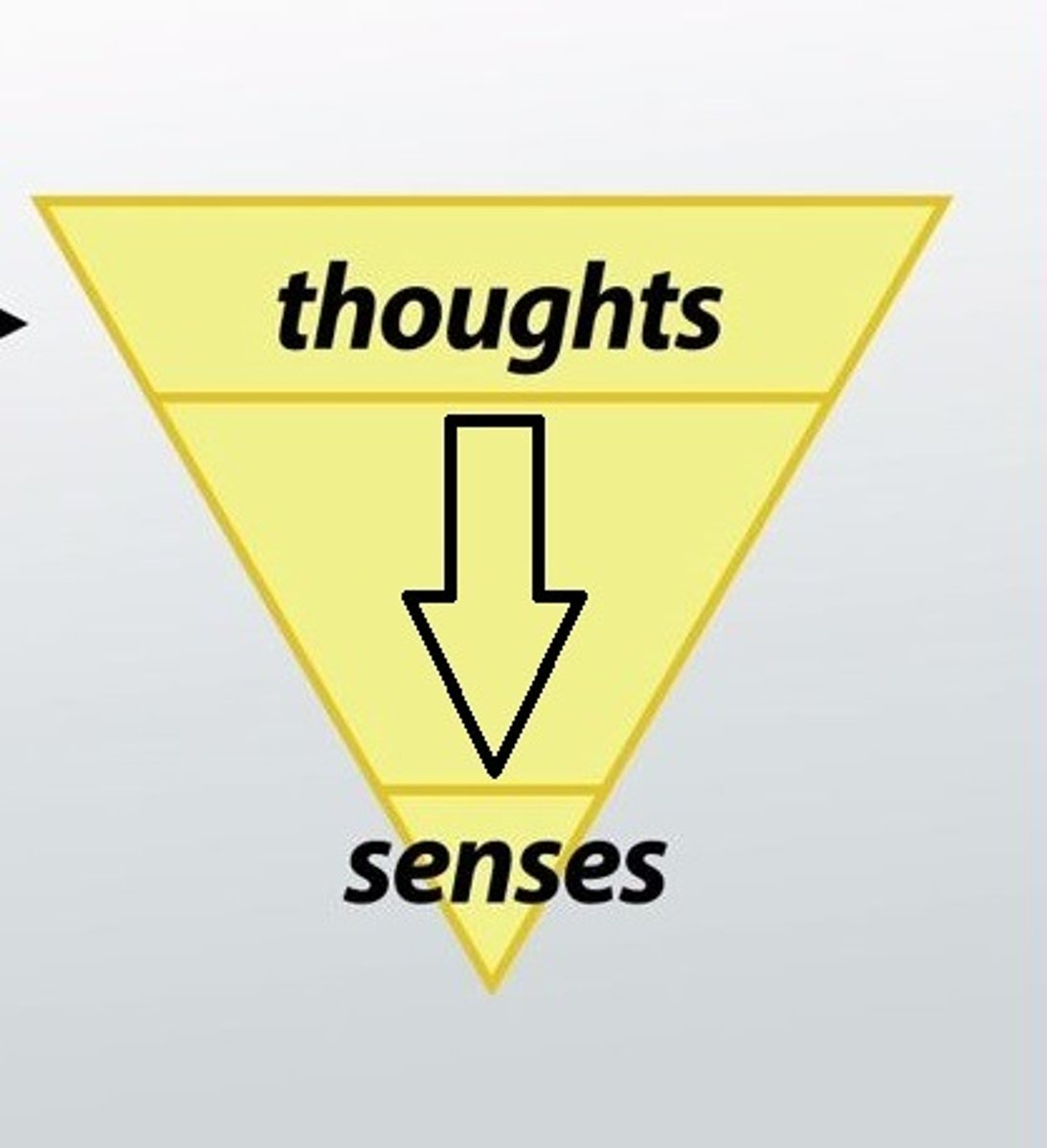
Selective Attention
the process of focusing on a specific aspect of information while ignoring others.
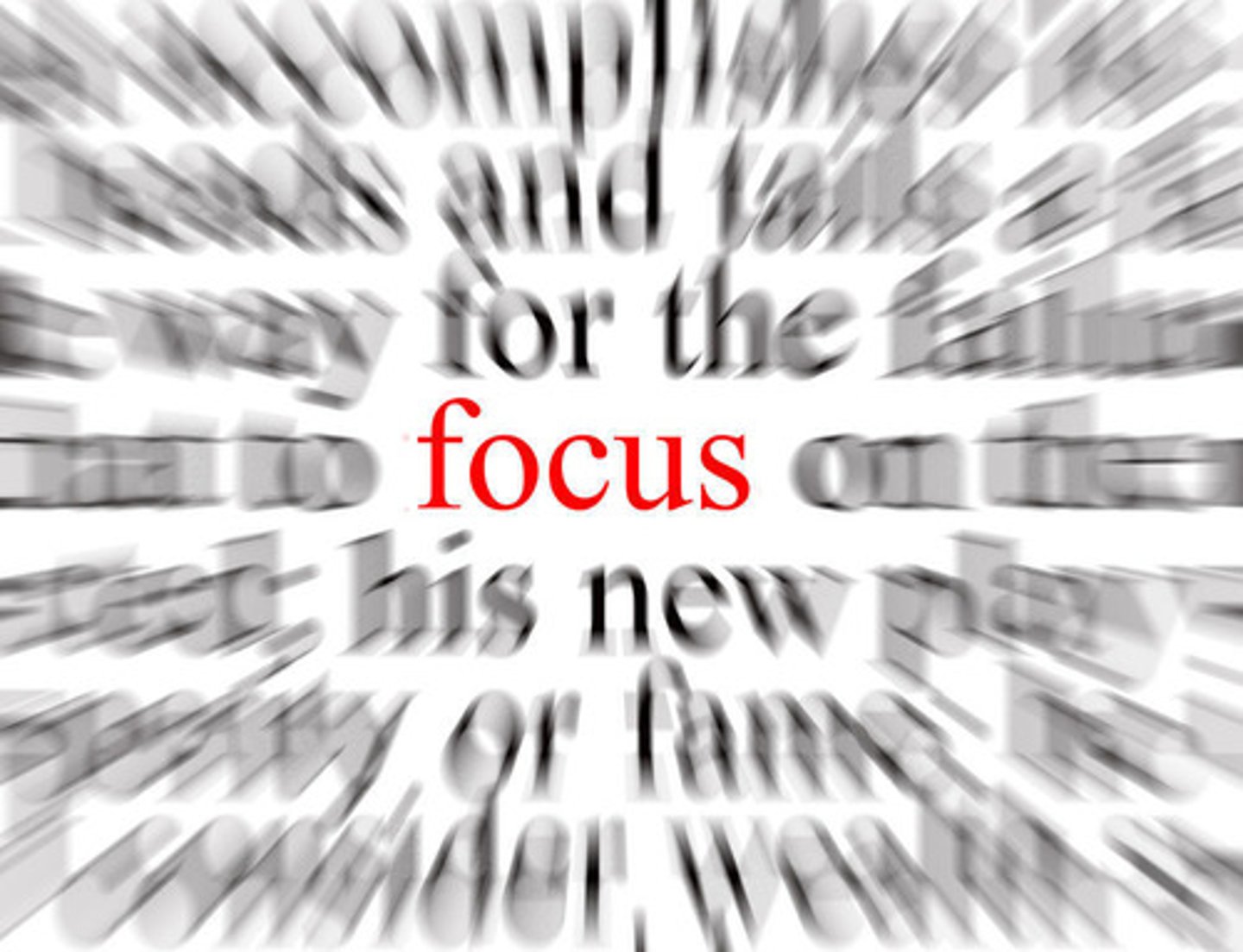
Inattentional Blindness
Failure to notice an unexpected stimulus in the visual field when attention is focused on something else; highlights the limits of our perceptual and cognitive processing, demonstrating that we can miss significant information in our environment when we are not directly paying attention to it..
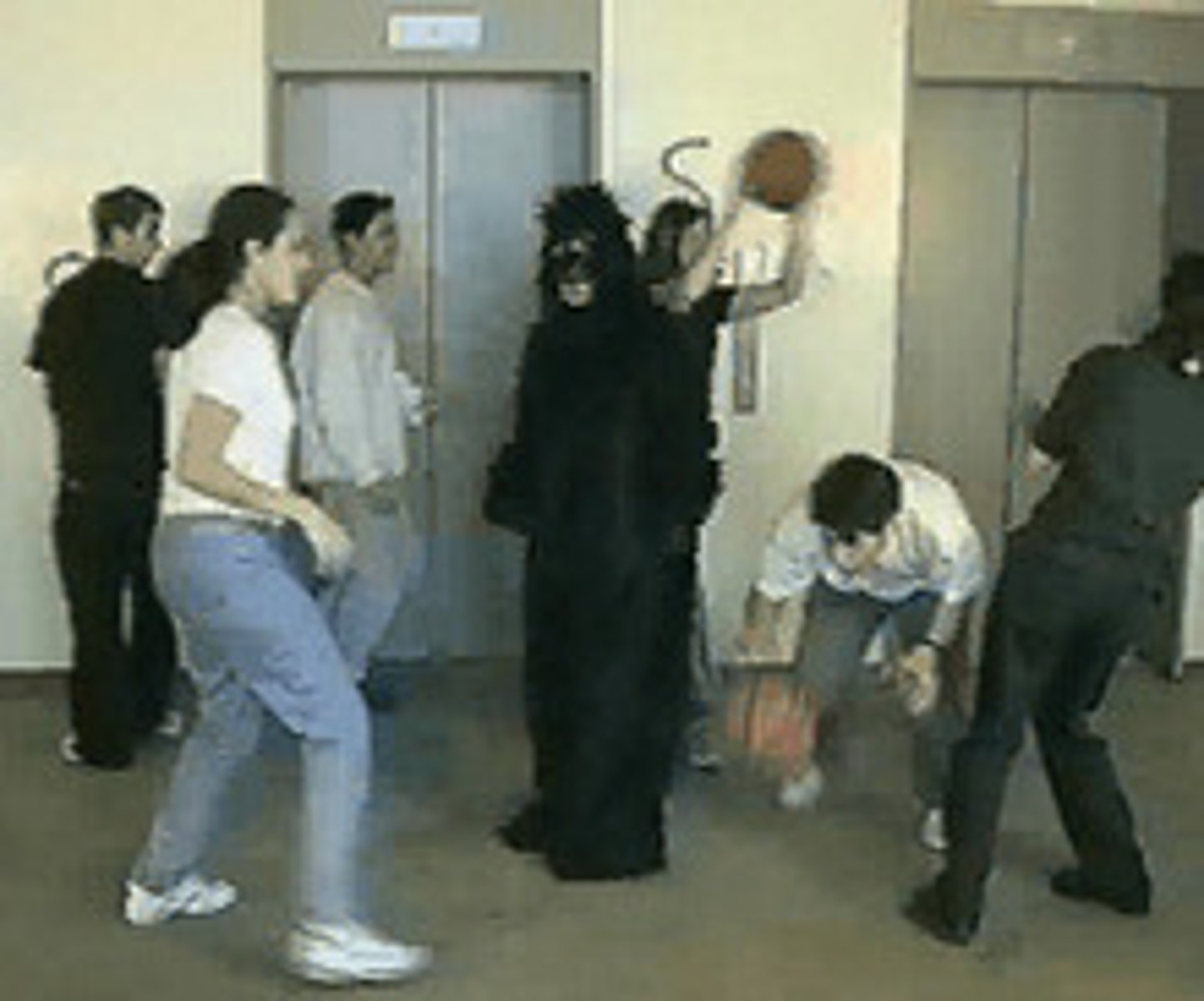
Cocktail Party Effect
our ability to focus on a single conversation in a noisy environment, like a crowded party, while tuning out other stimuli.

Change Blindness
the failure to notice large changes in one's environment when the change occurs simultaneously with a visual disruption.

Transduction
The conversion of sensory stimuli into neural impulses that can be understood by the brain.
The transformation of physical energy into electrochemical signals, enabling the brain to interpret and perceive sensory information.
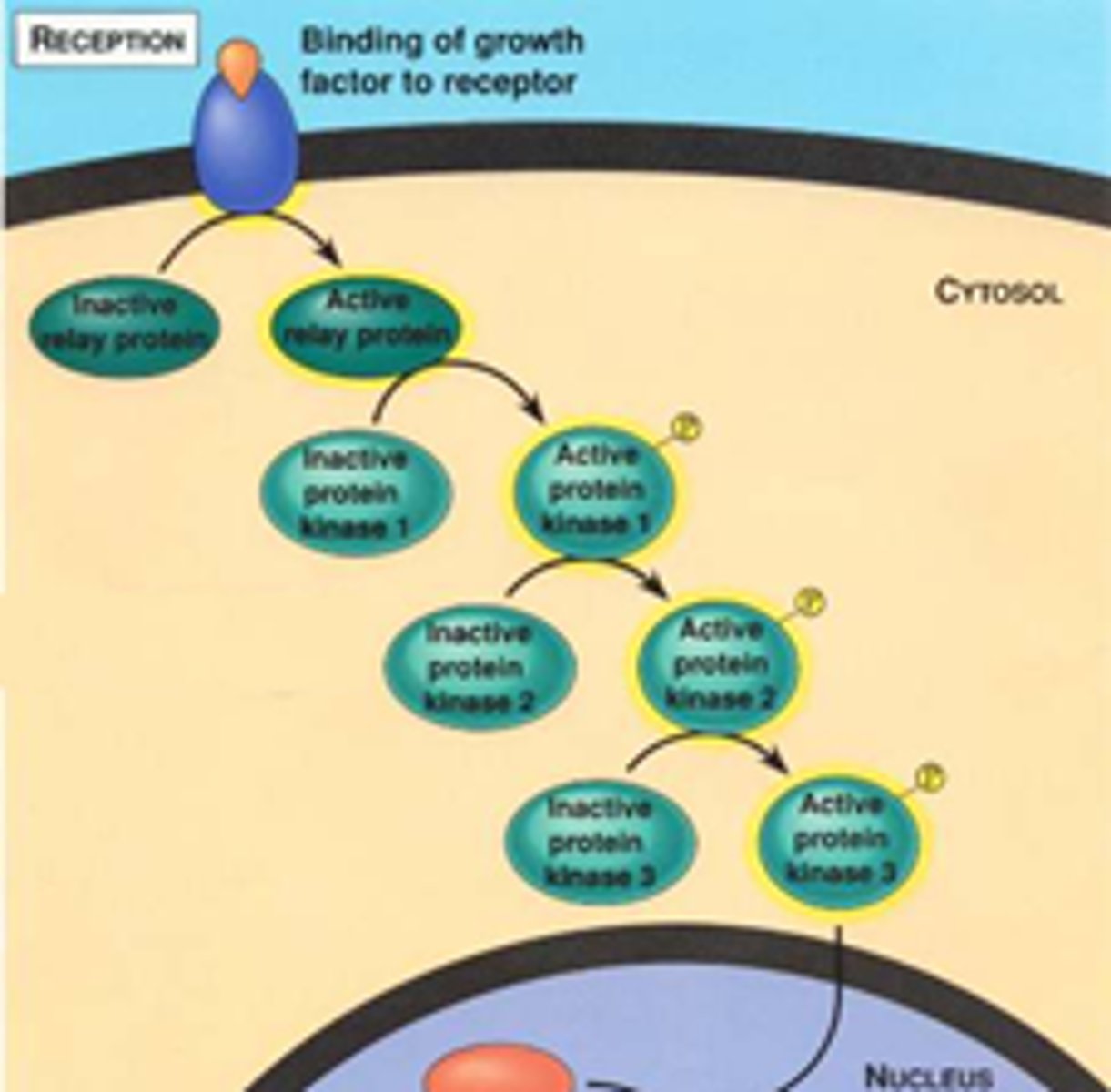
Absolute Threshold
The minimum amount of stimulation required for a stimulus to be detected by a sensory system. It represents the point at which a stimulus becomes noticeable to an individual at least 50% of the time.

Just-Noticeable Difference (JND)
The smallest change in a stimulus that can be detected by an individual. It's the minimal difference needed for a person to perceive that a change has occurred.

Weber's Law
The perceived difference in a stimulus must be proportional to the original intensity of the stimulus
Ex: The bigger something is, the more you need to change it to notice a difference.
Signal Detection Theory
A theory predicting how and when we detect the presence of a faint stimulus amid background noise.
Assumes there is no single absolute threshold and that detection depends partly on a person's experiences, expectations, motivation and alertness.
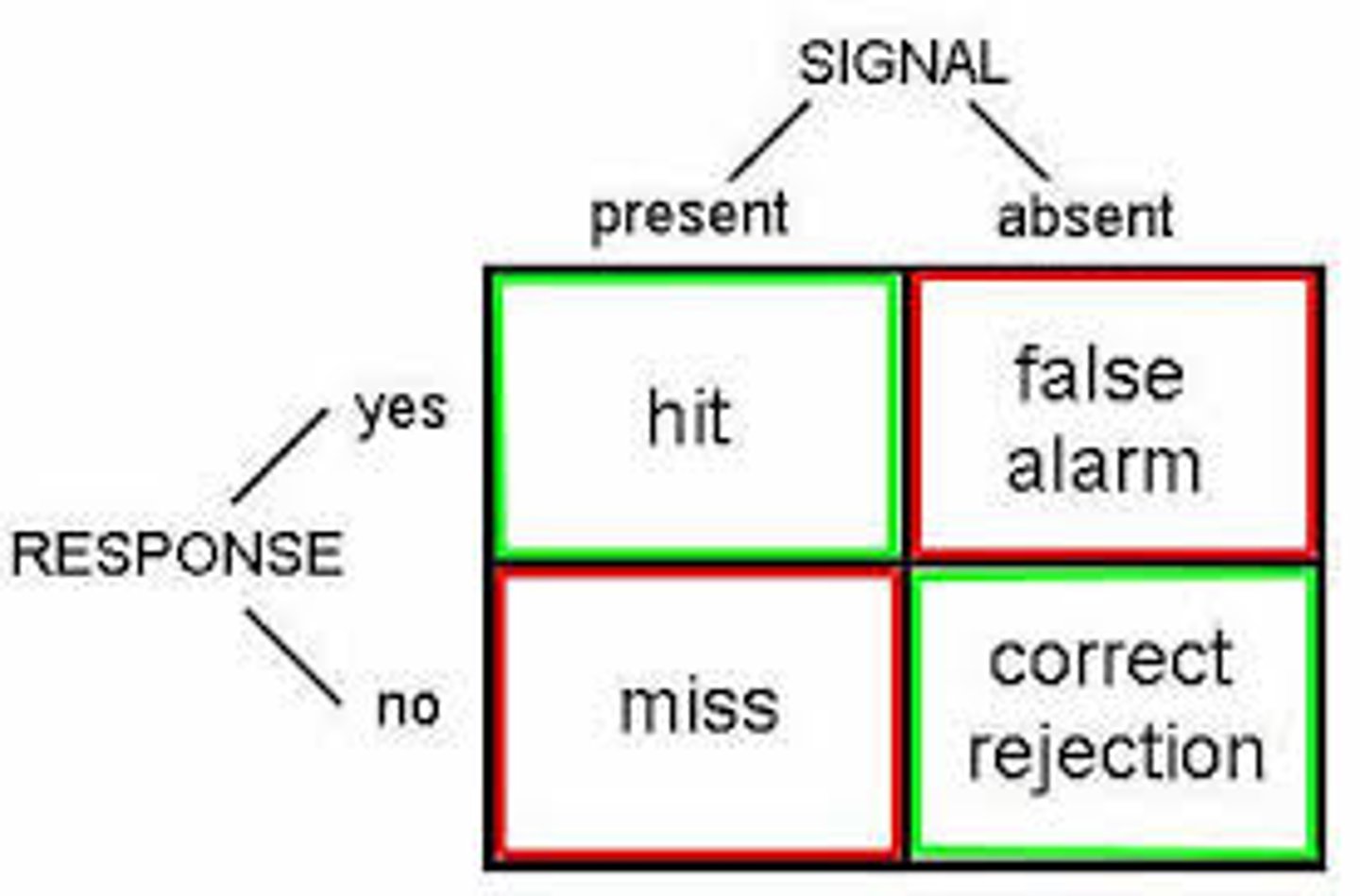
Sensory Adaptation
The process by which sensory receptors become less responsive to constant stimuli over time.

Path of vision
Rods/cones --> Bipolar cells --> Ganglion cells --> Optic nerve --> Thalamus --> Visual Cortex in frontal lobe
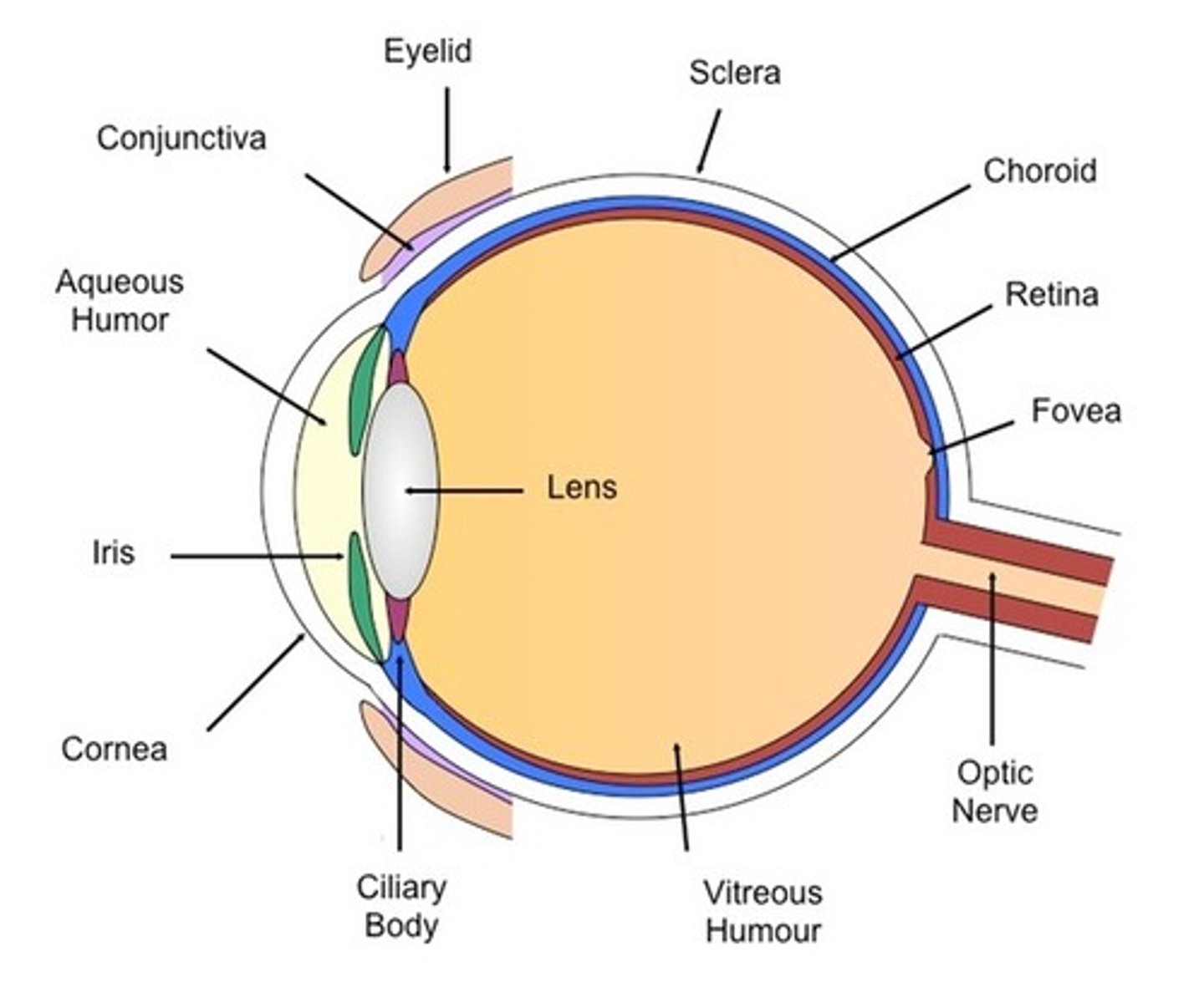
Visual Transduction
occurs in the retina, where photoreceptor cells (rods and cones) convert light into electrical signals that can be processed by the brain.
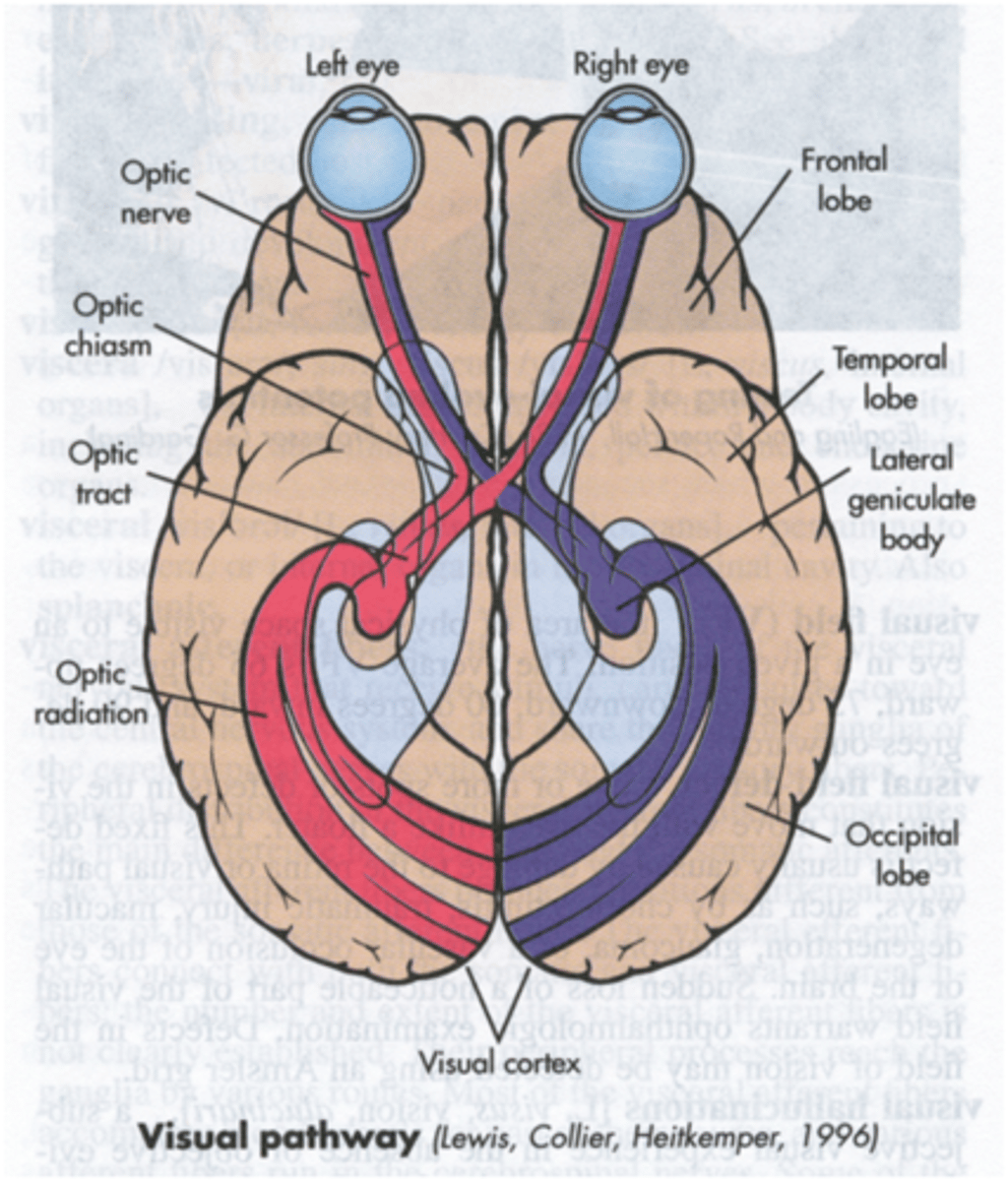
Light intensity
amount of energy the light contains→ how bright the object appears
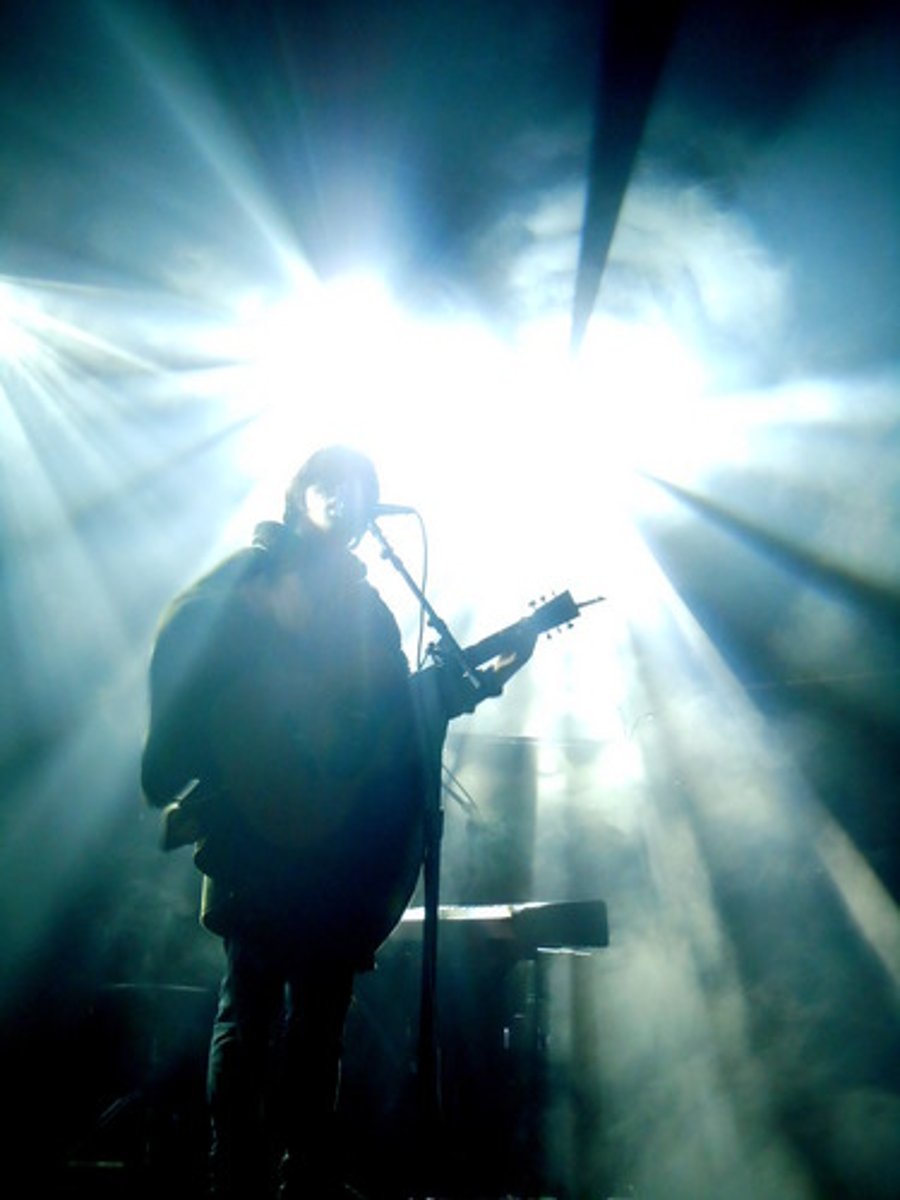
Wavelength
The distance between sound wave peaks. Shorter wavelengths mean higher-pitched sounds, while longer wavelengths mean lower-pitched sounds.
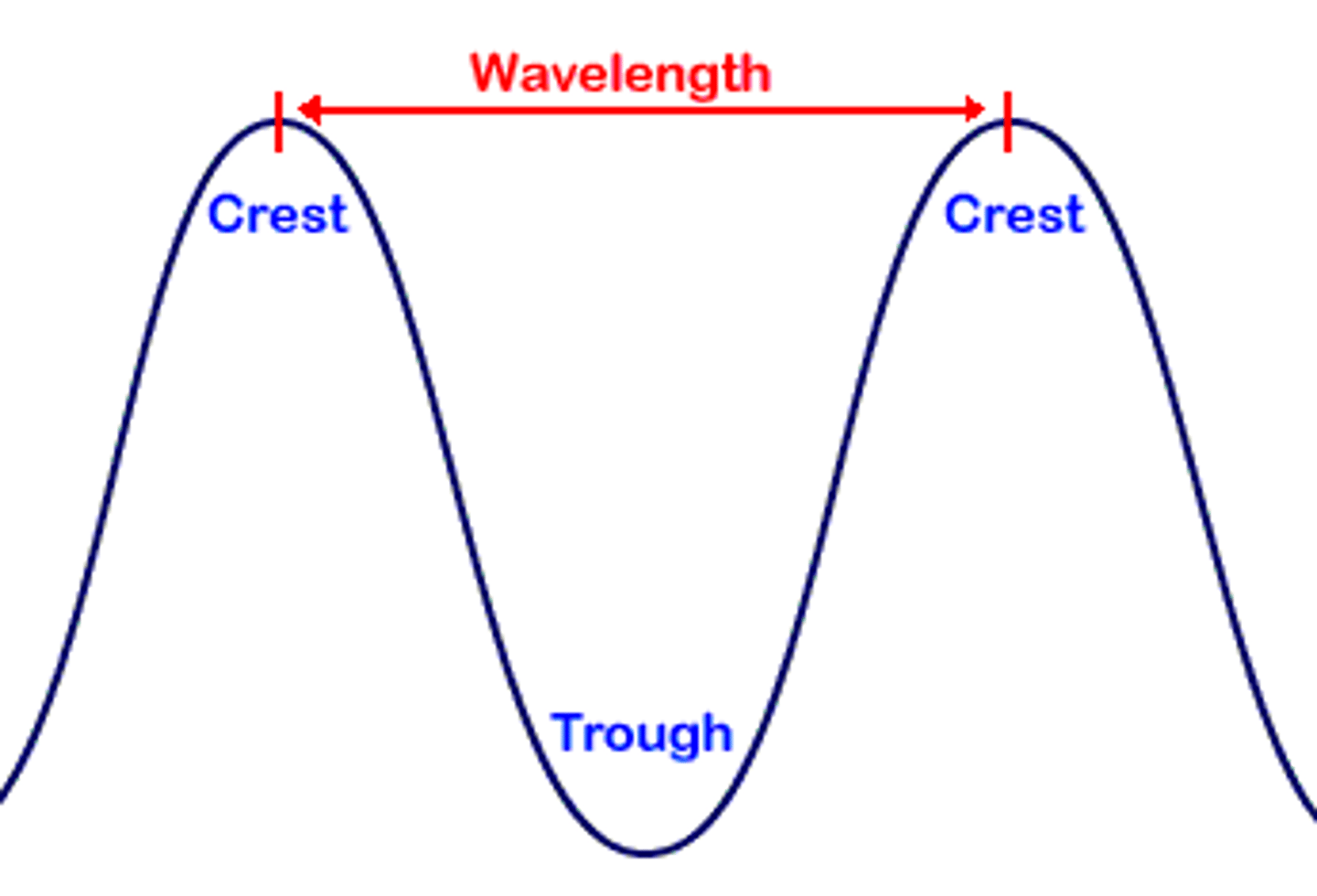
Retina
the light-sensitive inner surface of the eye containing photoreceptor cells that convert light into neural signals.
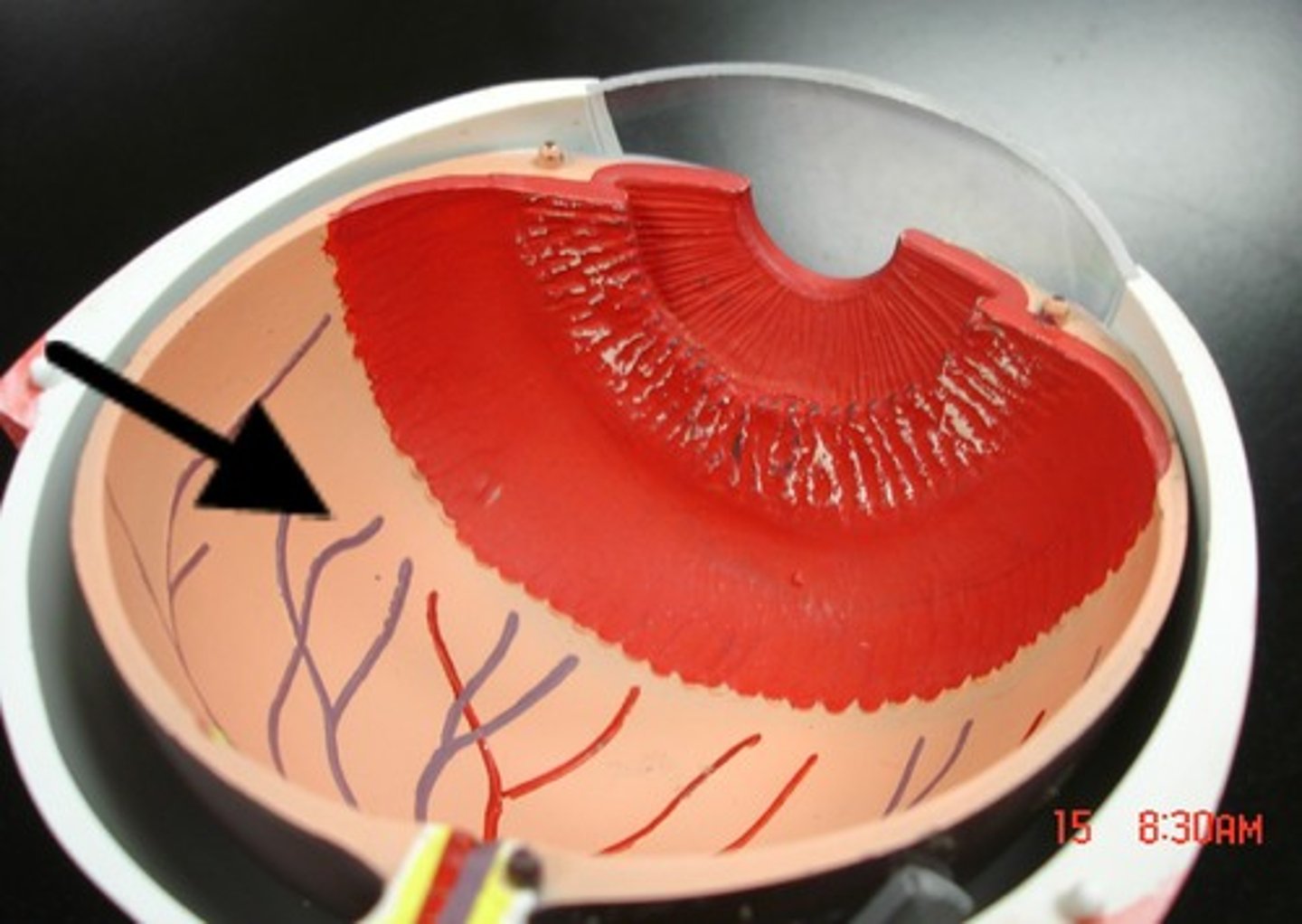
Lens
Transparent structure in the eye that focuses light onto the retina. It adjusts its shape to help the eye properly refract light, enabling clear vision at different distances.
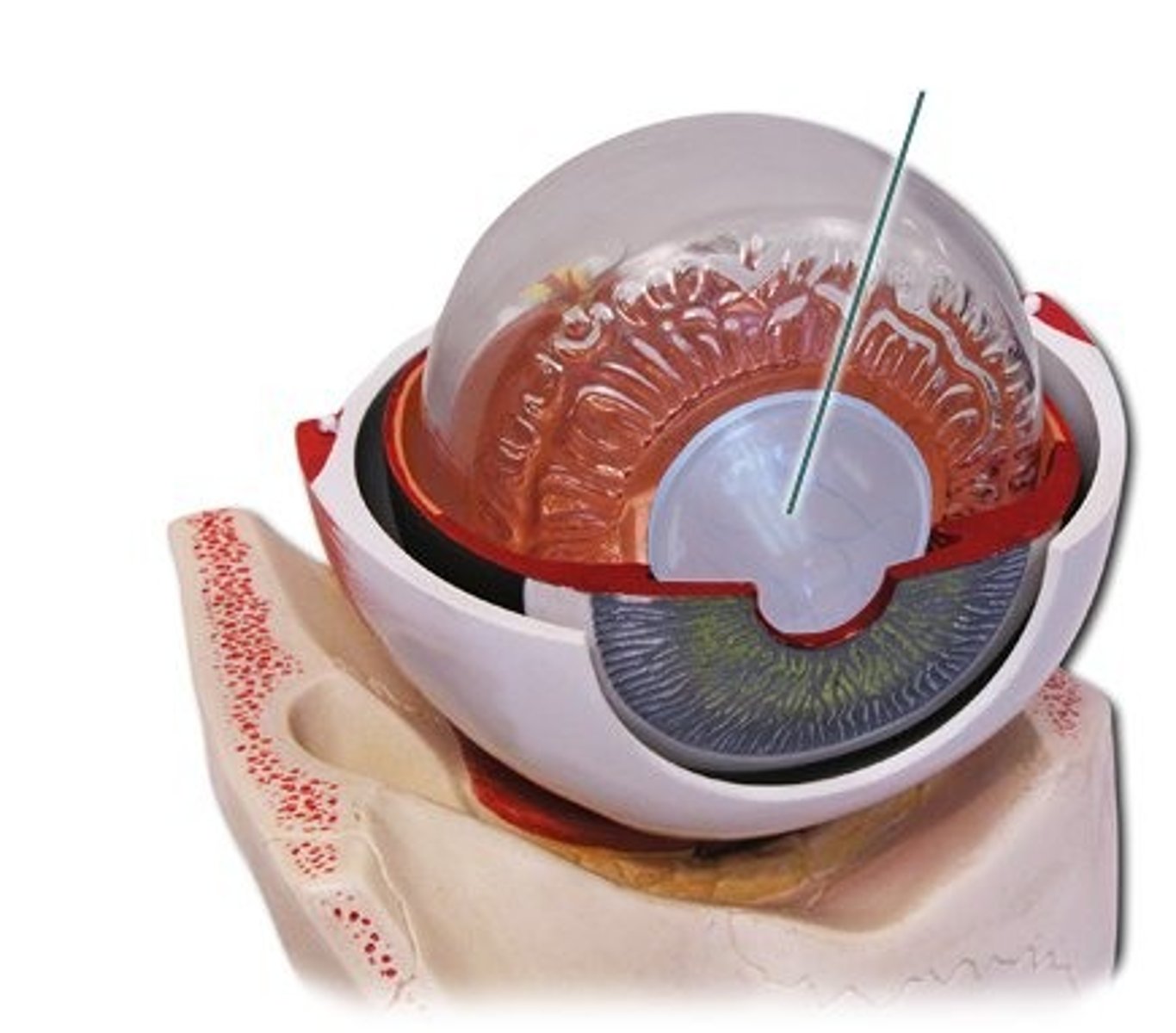
Accommodation
The process by which the lens of the eye changes its shape to focus on objects at different distances. It allows for clear vision of both nearby and distant objects by adjusting the curvature of the lens.
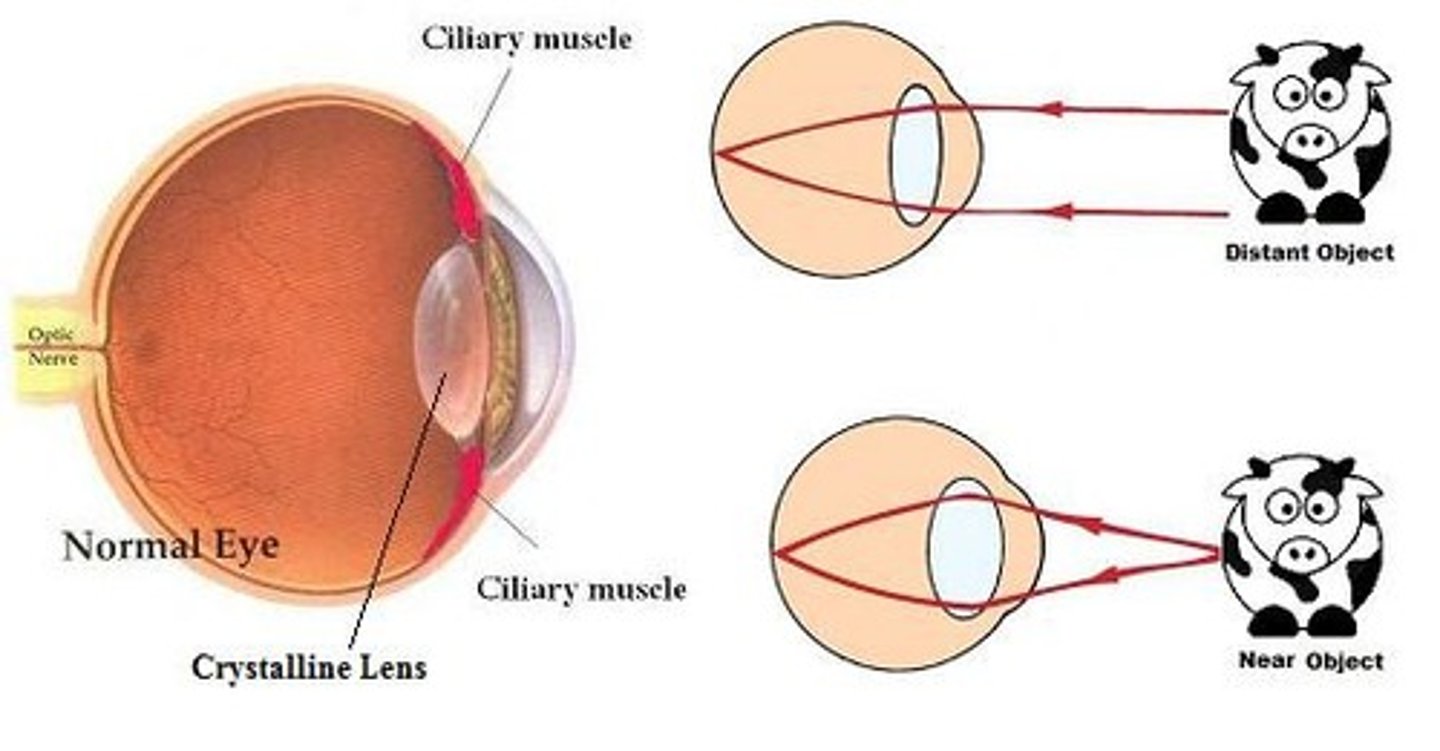
Rods
Photoreceptor cells in the retina responsible for vision in low light conditions and detecting motion. They provide black-and-white vision and are highly sensitive to light, allowing us to see in dim environments.

Cones
Photoreceptor cells in the retina responsible for color vision and detail in bright light. They enable us to perceive colors and fine visual details, such as reading text or distinguishing between different hues.
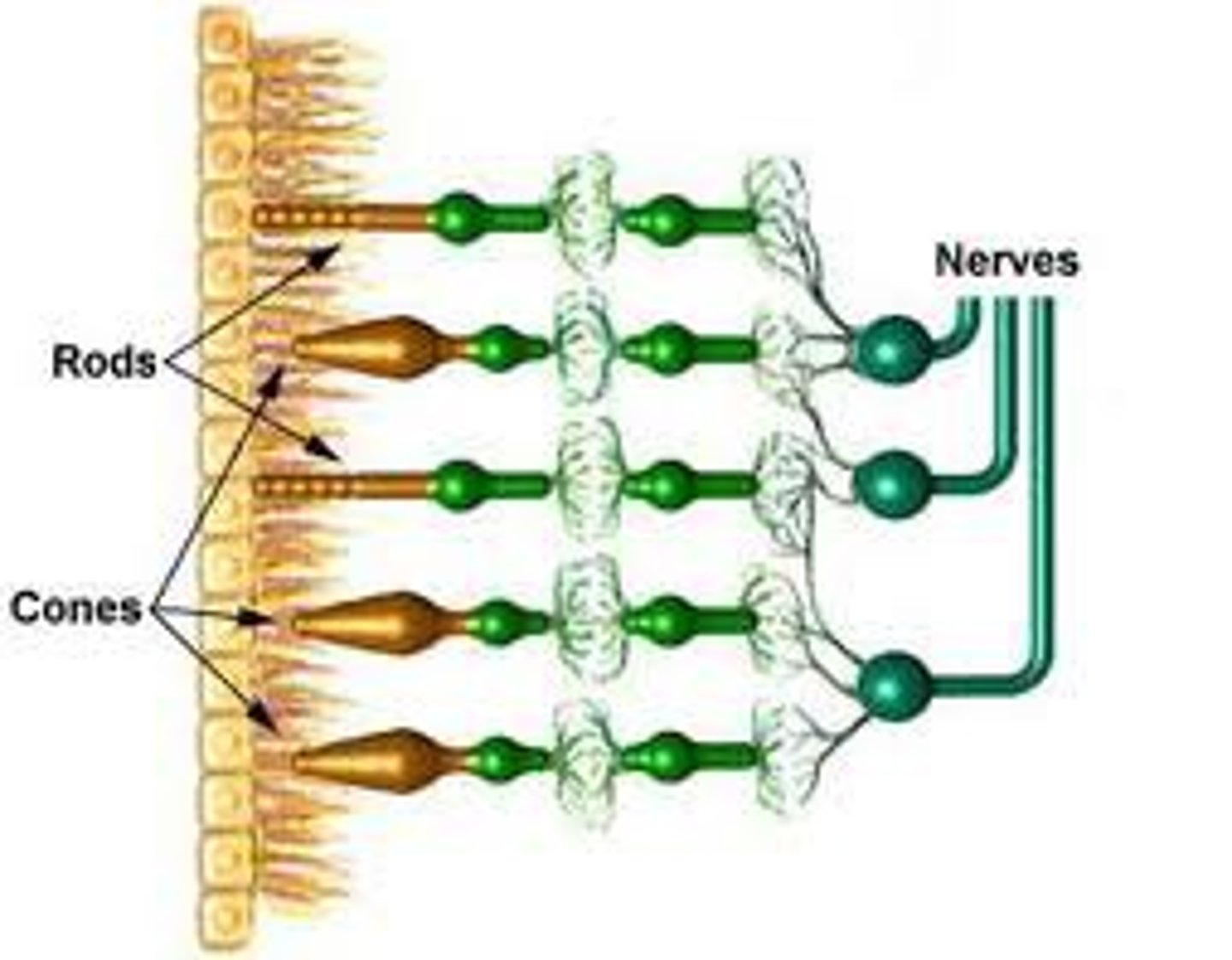
Fovea
Central area of the retina responsible for sharp central vision. It contains a high concentration of cone cells (no rods), enabling detailed and color vision.
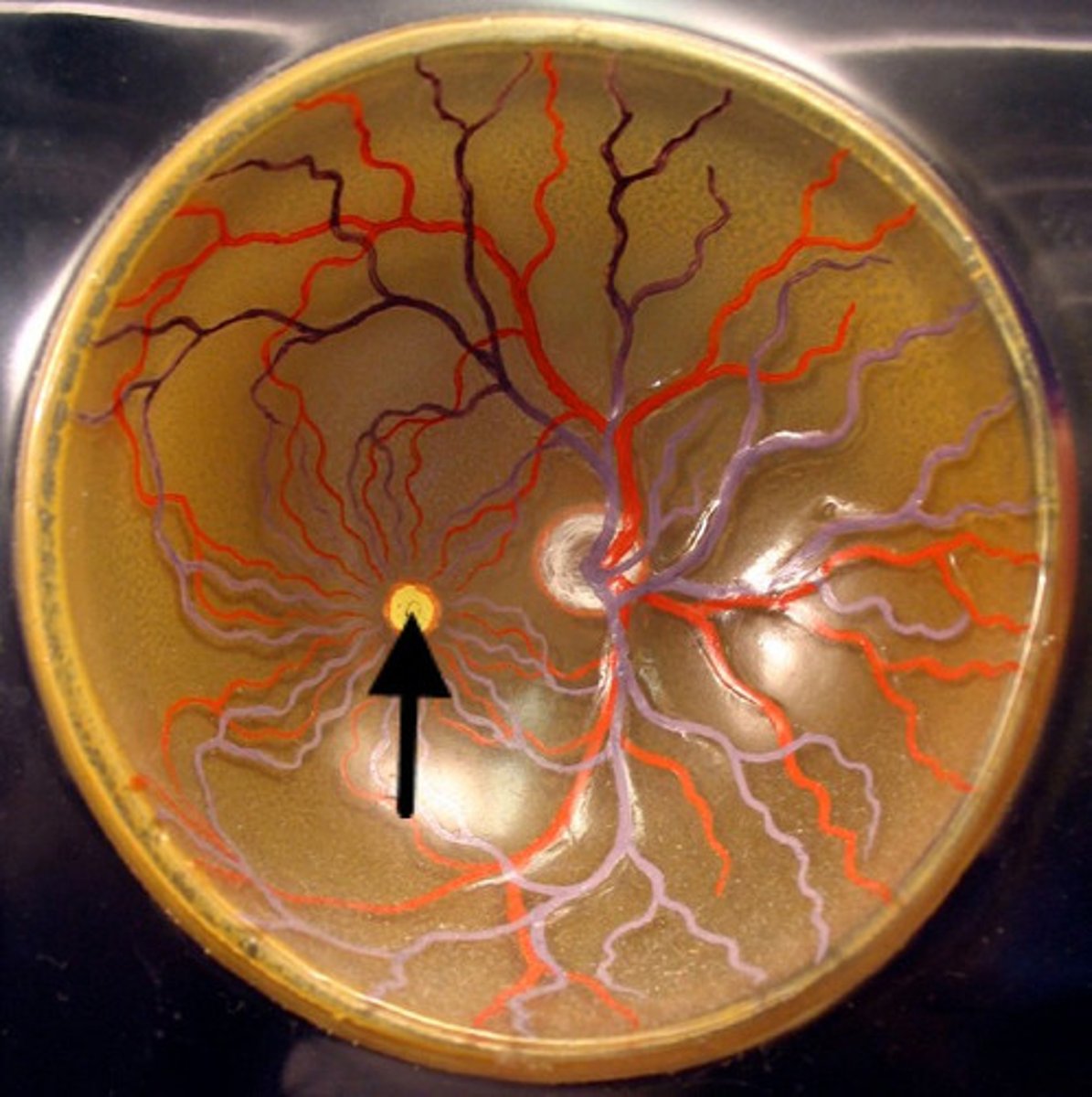
Blind Spot
Area on the retina where the optic nerve exits the eye, lacking photoreceptor cells. It's a spot where vision is absent, as there are no light-sensitive cells to detect visual stimuli.
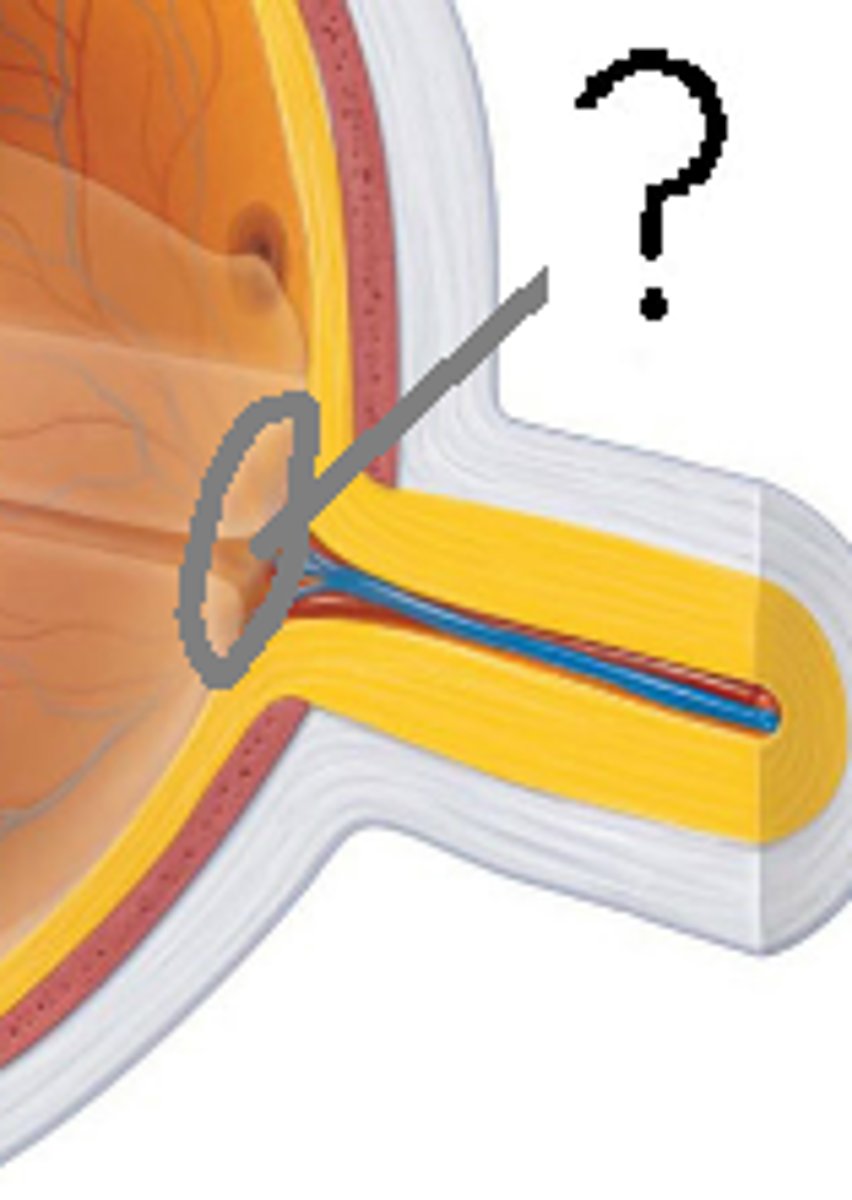
Ganglion Cells
Neurons in the retina that receive visual information from bipolar cells and transmit it to the brain via the optic nerve. They play a crucial role in processing visual signals and relaying them to the brain for further interpretation.
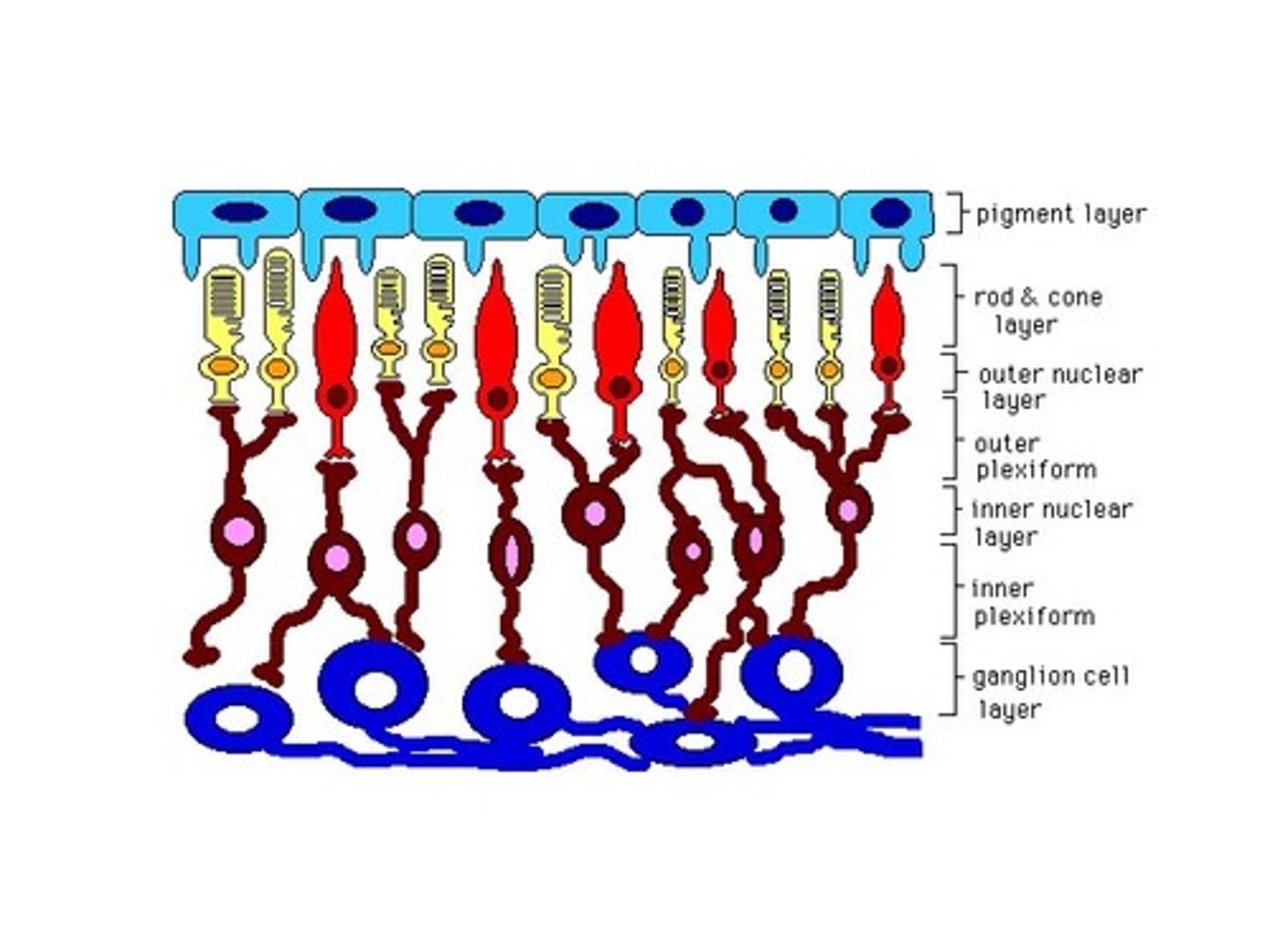
Myopia (nearsightedness)
A common vision condition where close objects appear clear, but distant objects appear blurry.
It occurs when the eyeball is too long or the cornea is too curved, causing light to focus in front of the retina instead of on it.
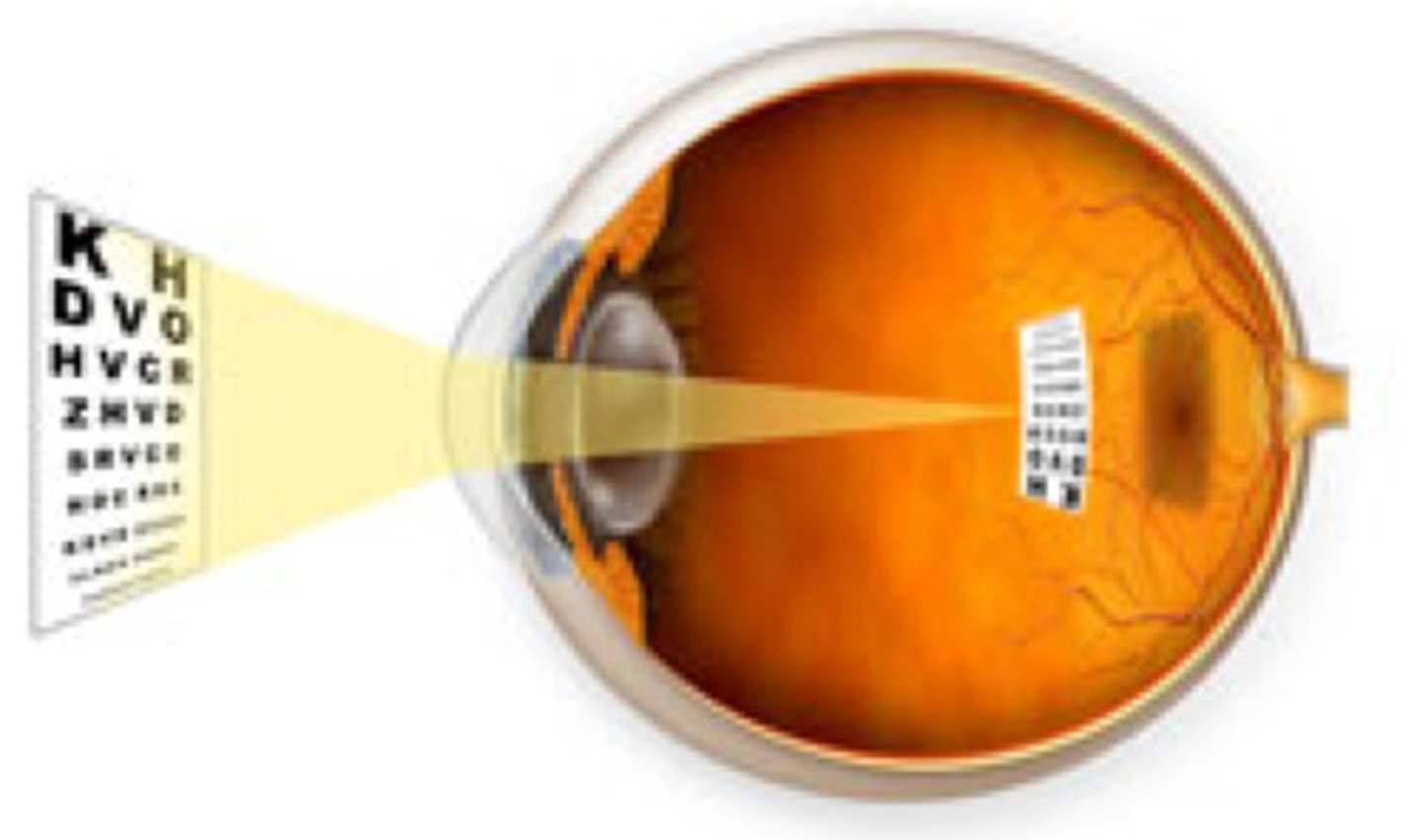
Farsightedness
A vision condition where distant objects are seen more clearly than close ones. It happens when the eyeball is too short or the cornea is too flat, causing light to focus behind the retina rather than directly on it.
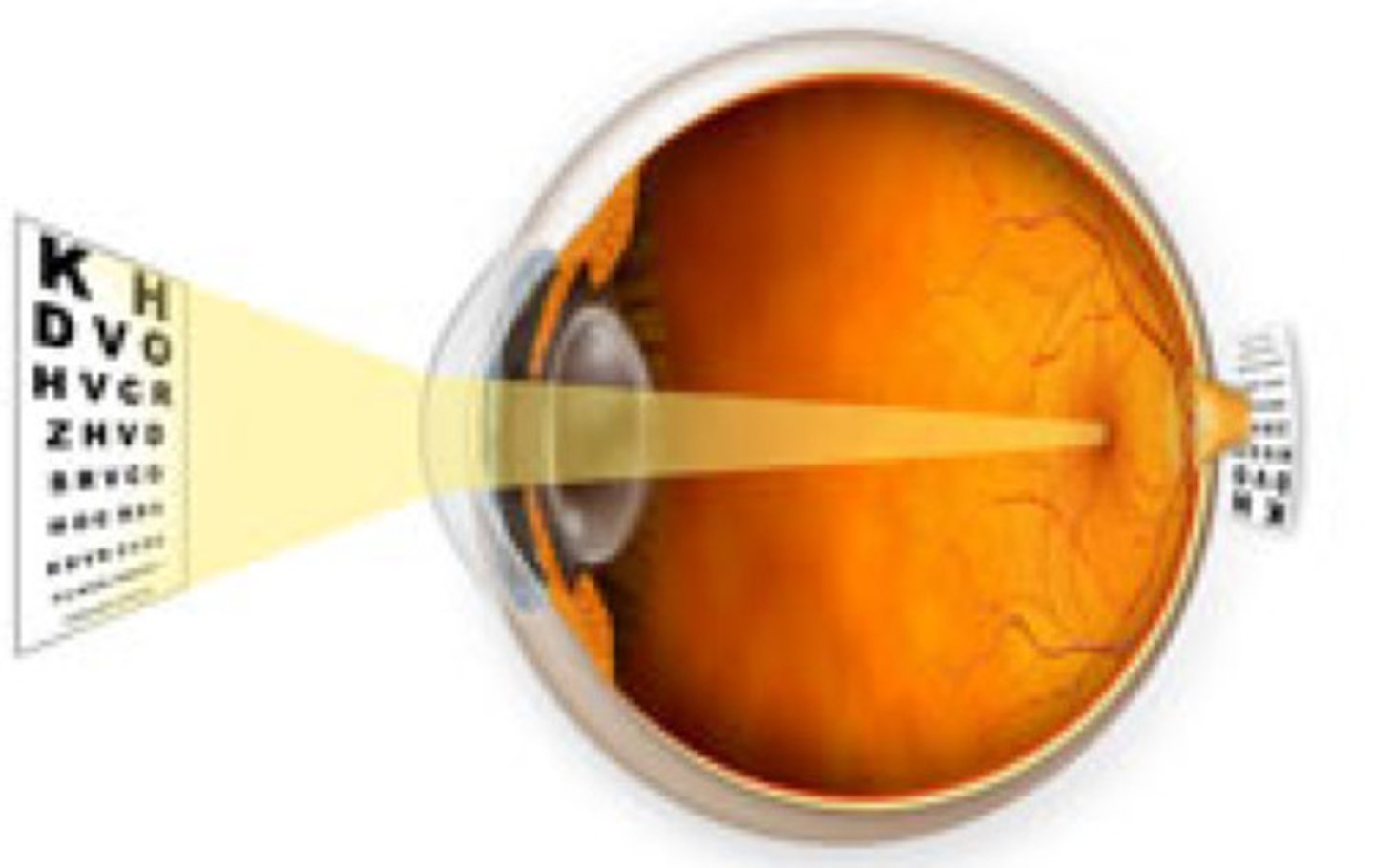
Trichromatic Theory
A theory proposing that color vision is based on three types of cone receptors, each sensitive to different wavelengths of light (red, green, and blue). The brain combines signals from these cones to create the perception of a wide range of colors.
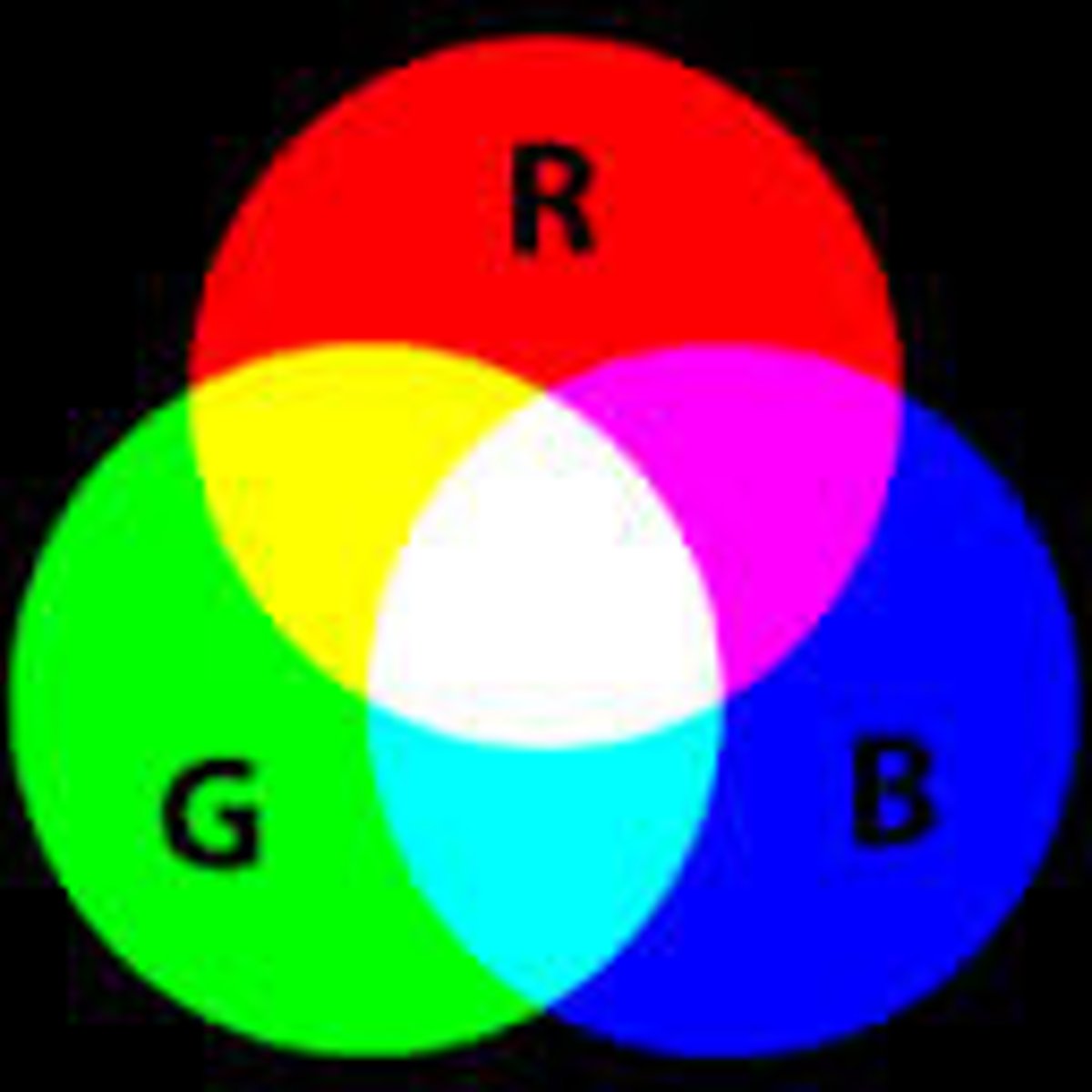
Opponent-Process Theory
A theory proposing that color vision is based on pairs of opposing color processes (red-green, blue-yellow, and black-white).
Activation of one color in the pair inhibits the other, leading to the perception of color afterimages and explaining certain aspects of color vision.

Afterimages
Visual sensations that persist after a stimulus is removed. They occur due to temporary overstimulation of cone cells in the retina, resulting in a brief perception of an inverted or complementary image.
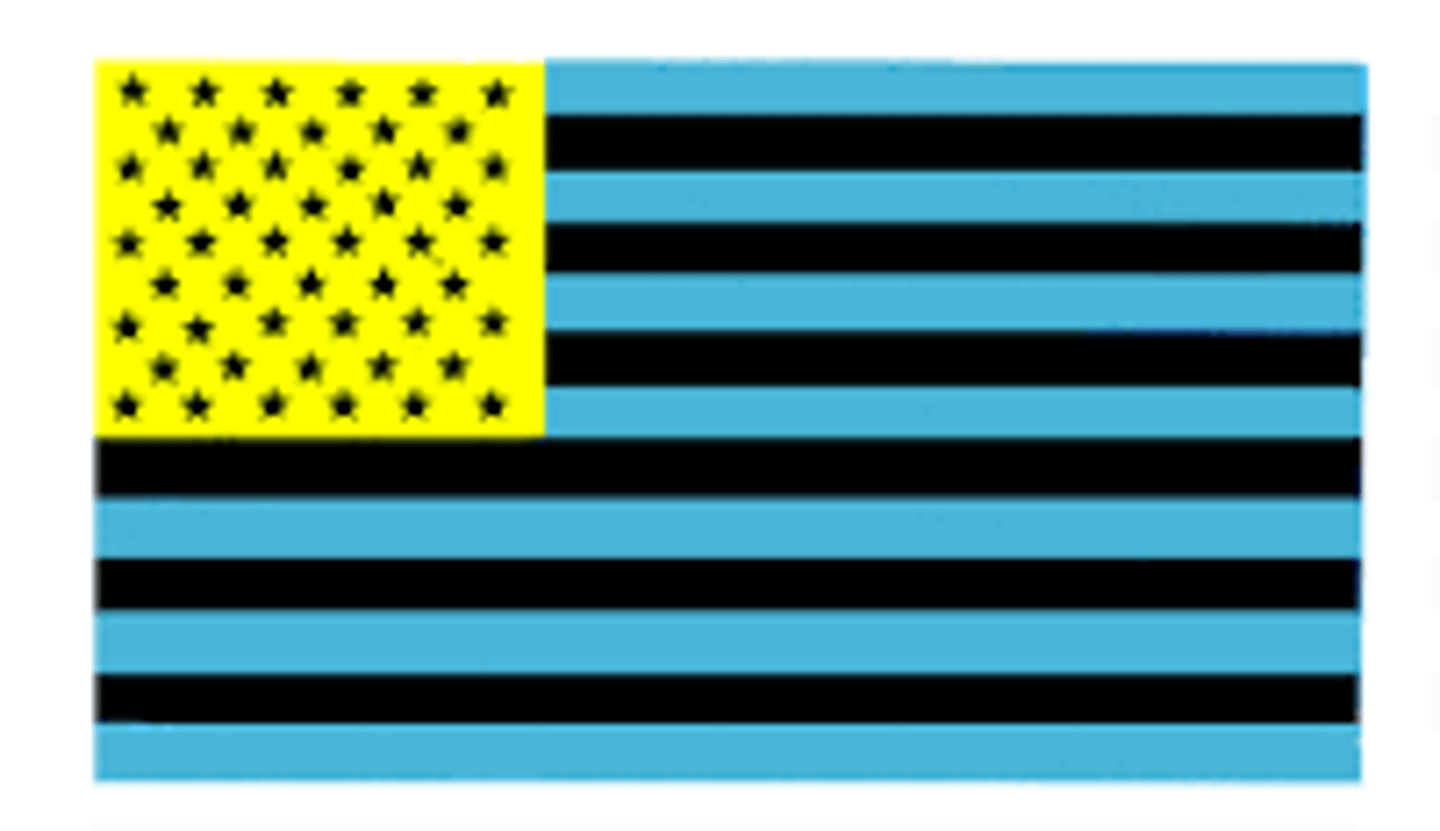
Dichromatism
A type of color vision deficiency where an individual has only two types of functioning cone cells instead of the normal three. This condition typically results in difficulty distinguishing between certain colors, especially reds and greens.

Monochromatism
A rare form of color blindness where an individual has only one type of functioning cone cell, or none at all. This results in the inability to perceive colors, seeing the world in shades of gray.

Blindsight
A phenomenon where individuals with damage to their visual cortex can respond to visual stimuli without consciously perceiving them. It suggests that some visual processing can occur unconsciously, bypassing traditional pathways in the brain.
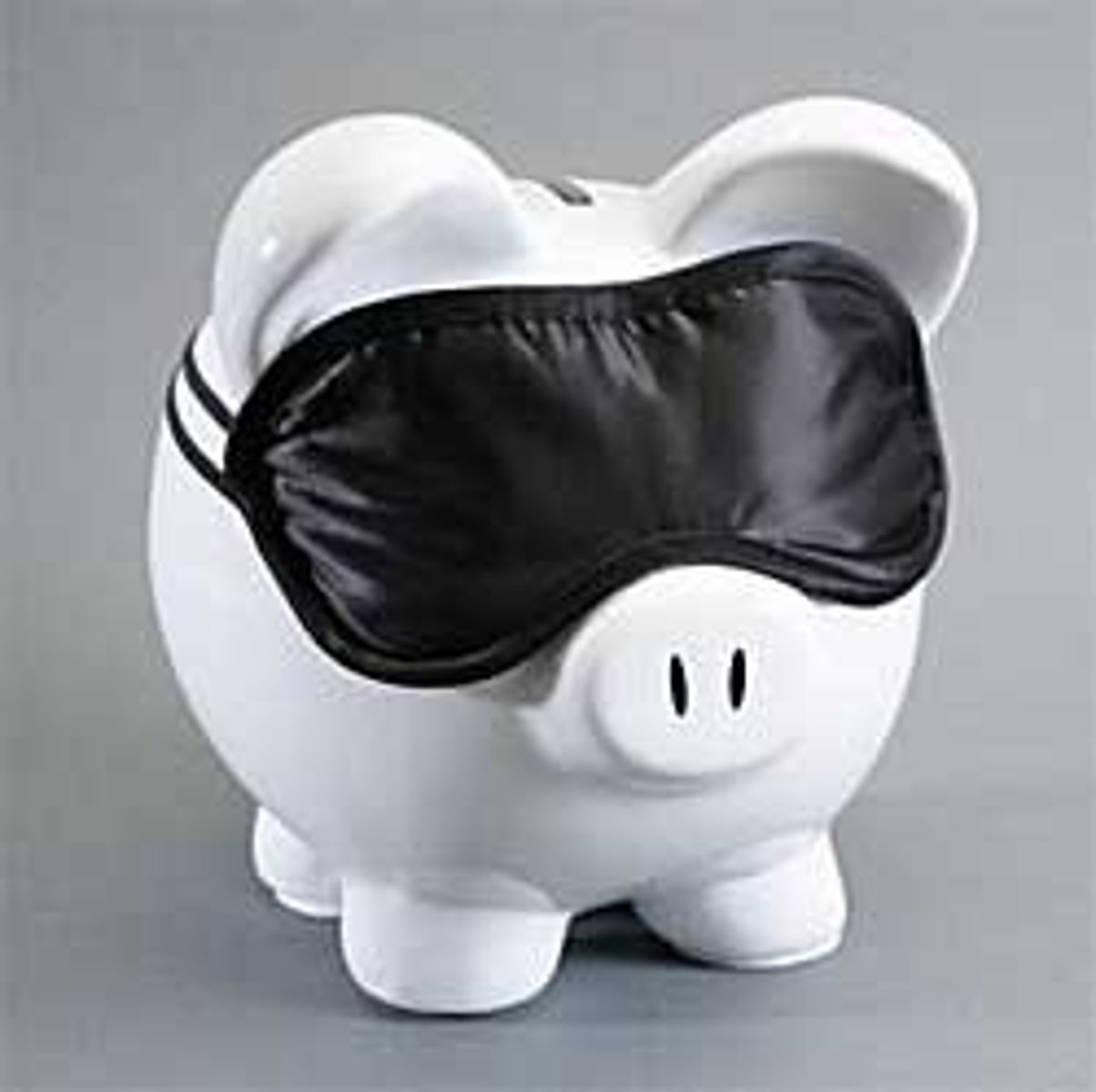
Prosopagnosia
A neurological condition characterized by the inability to recognize familiar faces, including one's own face, despite intact vision and intellect. It's often referred to as face blindness.
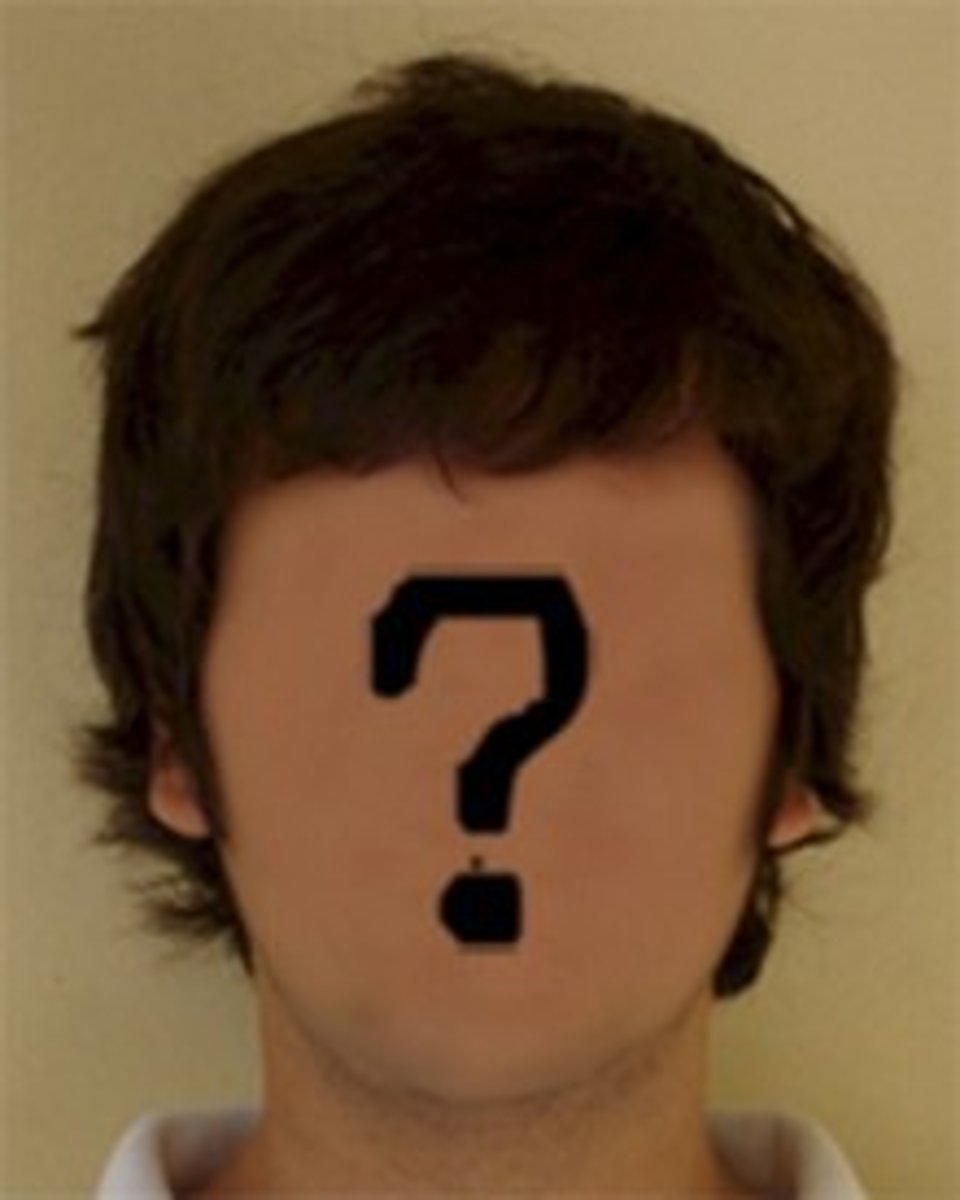
Ear Transduction
sound --> eardrum --> middle ear bones --> cochlea --> auditory nerve
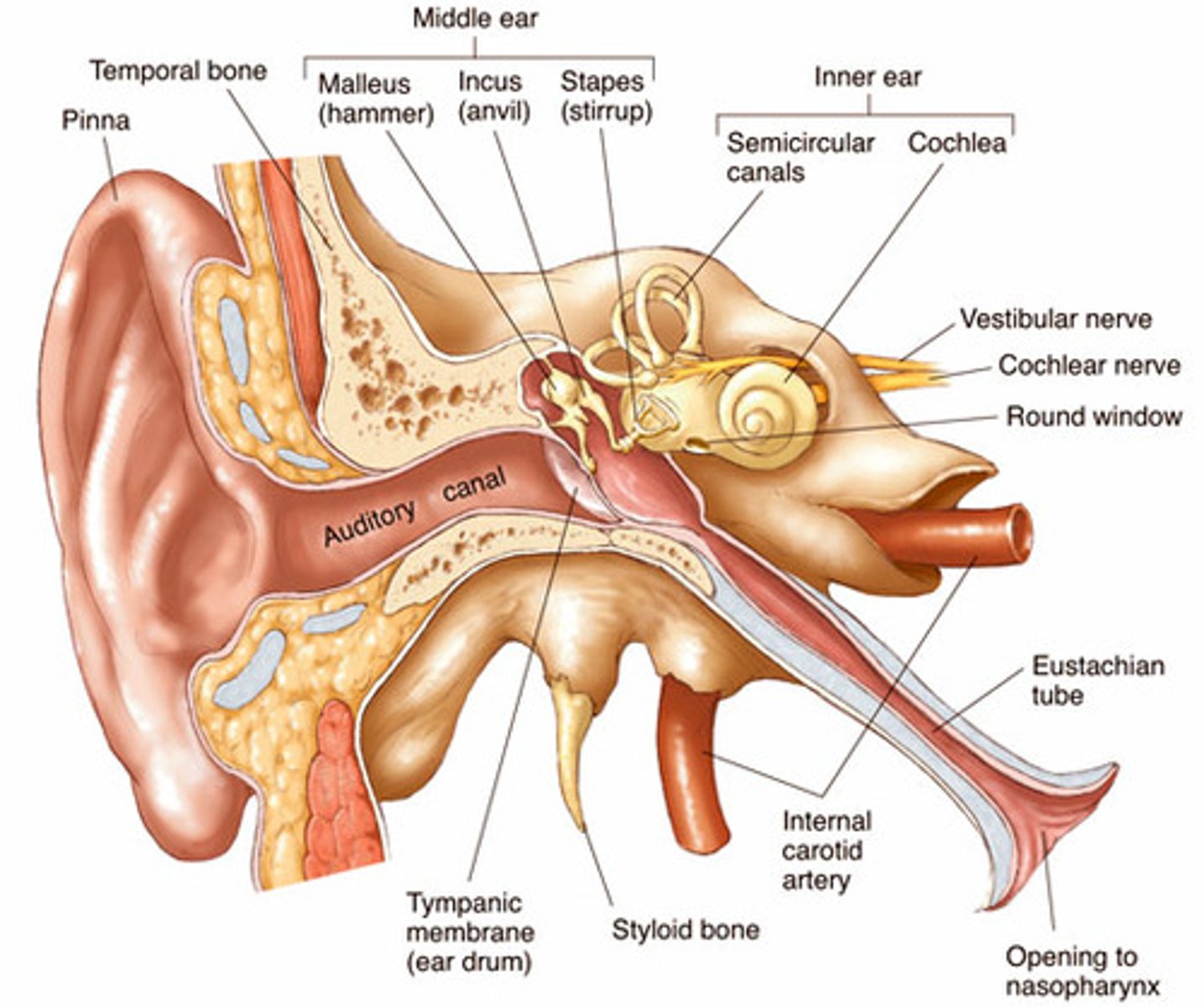
Amplitude
The measure of the intensity or loudness of a sound wave, represented by the height of its peaks.
Greater amplitude corresponds to louder sounds, while lower amplitude indicates softer sounds.

Pitch Perception
The brain's interpretation of the frequency of sound waves, determining whether a sound is high or low in tone. Higher frequencies are perceived as higher pitches, while lower frequencies are perceived as lower pitches
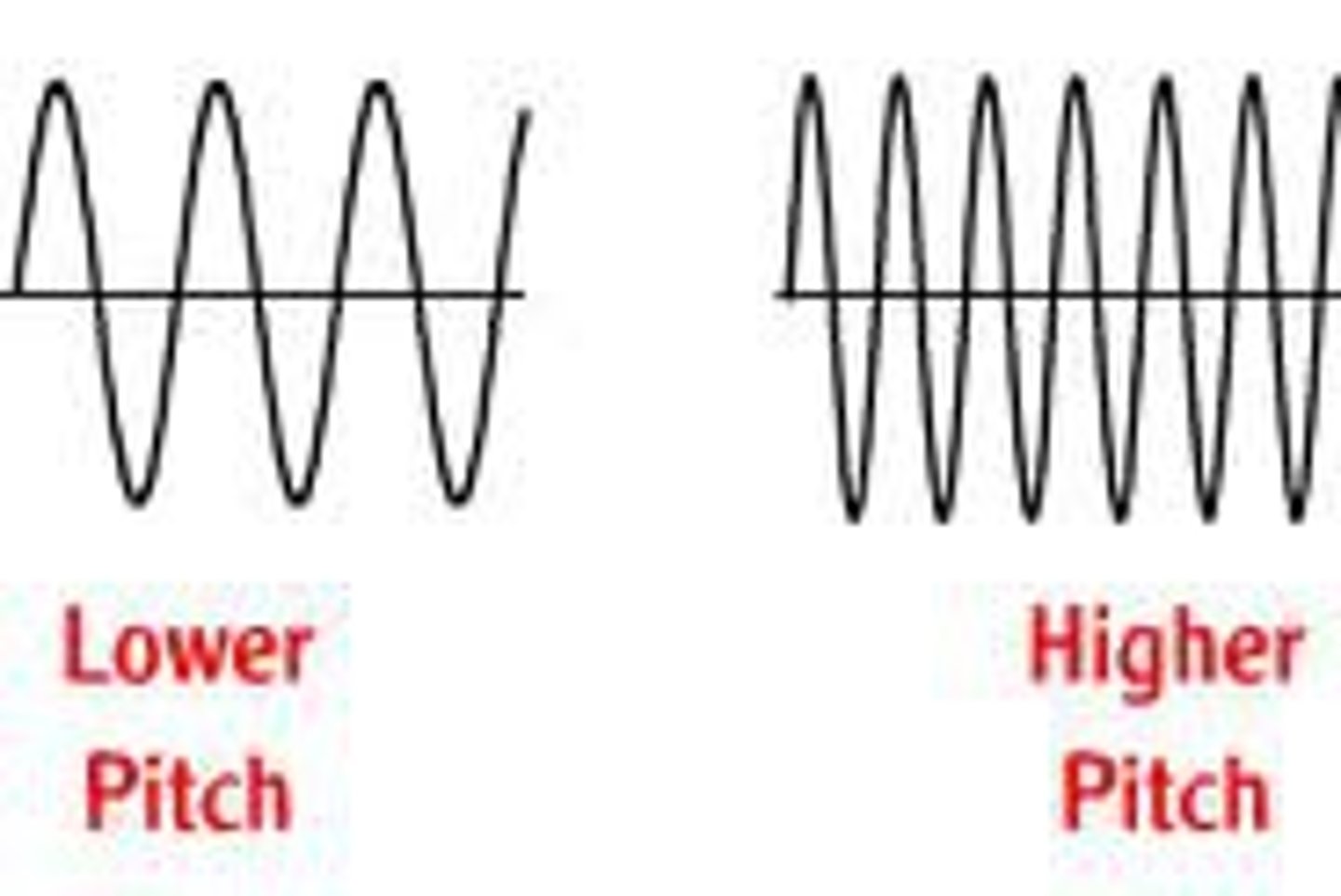
Place Theory
Idea that different parts of the inner ear detect different sound frequencies. High pitches are sensed near the entrance, low pitches near the end.

Frequency Theory
A theory of pitch perception proposing that the frequency of a sound wave directly corresponds to the rate at which auditory nerve fibers fire. Higher frequency sounds lead to faster firing rates, resulting in higher perceived pitches.
Volley Theory
A theory of pitch perception proposing that groups of auditory neurons fire in rapid succession, or "volleys", to encode the frequency of sounds above 1000 Hz. This allows the brain to perceive pitches that exceed the firing rate of individual neurons.

Sound Localization
The brain's ability to determine the location of a sound source in space. It relies on cues such as differences in arrival time and intensity between the ears, as well as spectral cues, to accurately locate sounds.
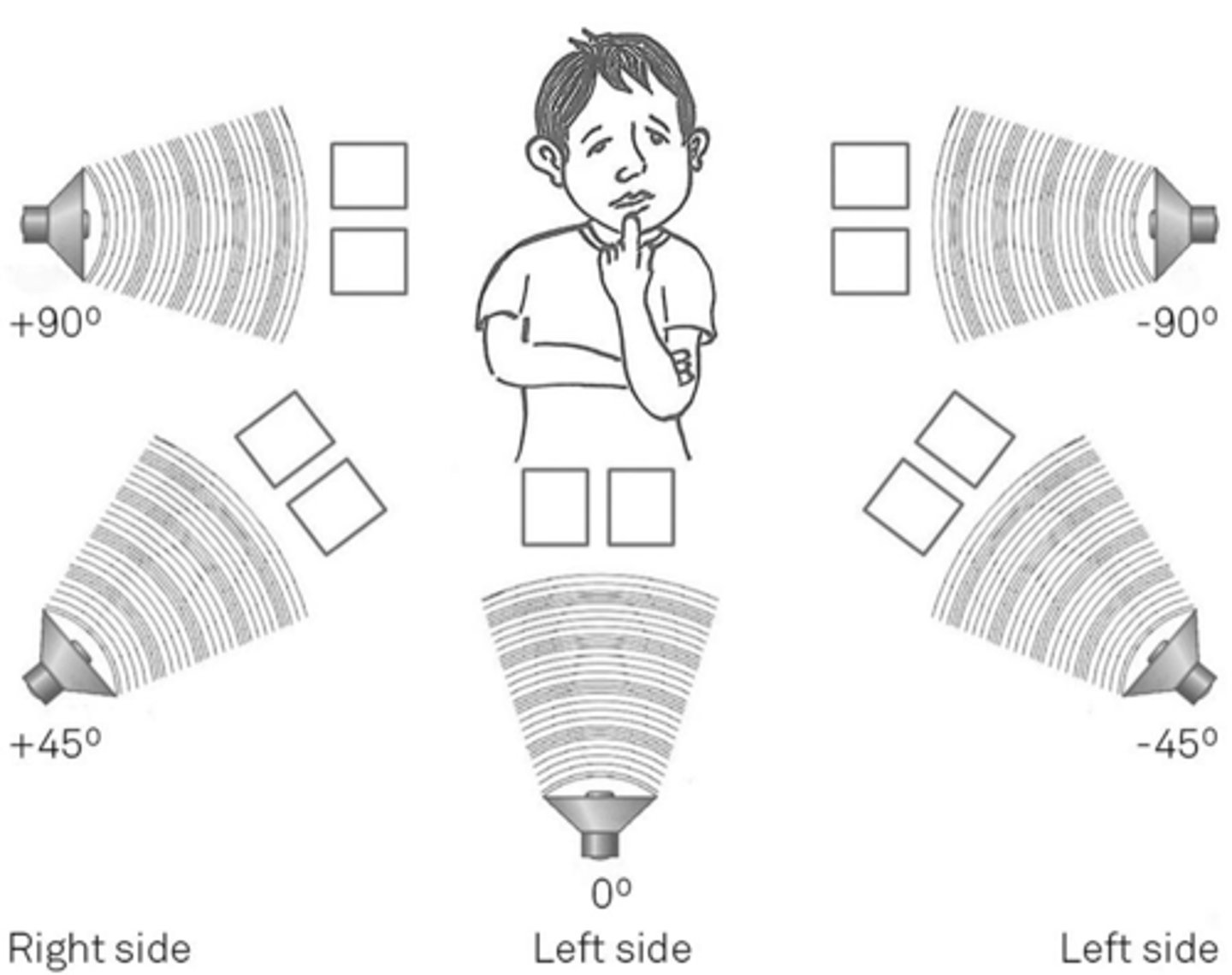
Conduction Deafness
Hearing impairment caused by problems with the outer or middle ear, such as damage to the ear canal, eardrum, or middle ear bones.
It typically results in difficulty hearing soft sounds and can often be treated medically or surgically (temporary).
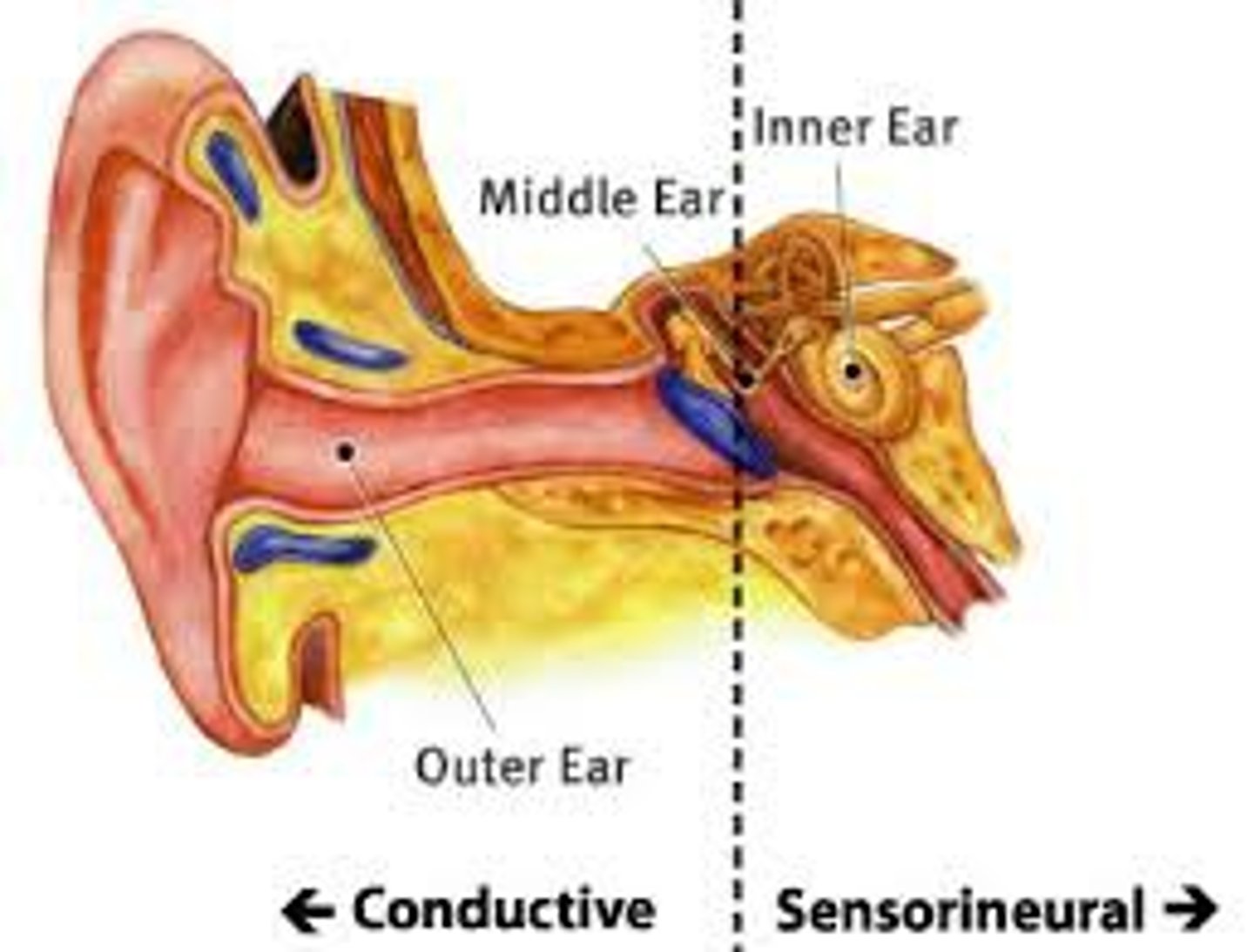
Sensorineural Deafness
Hearing loss caused by damage to the inner ear or auditory nerve. It results in difficulty hearing soft sounds and understanding speech, and is often permanent.
Common causes include aging, exposure to loud noise, and certain medical conditions.
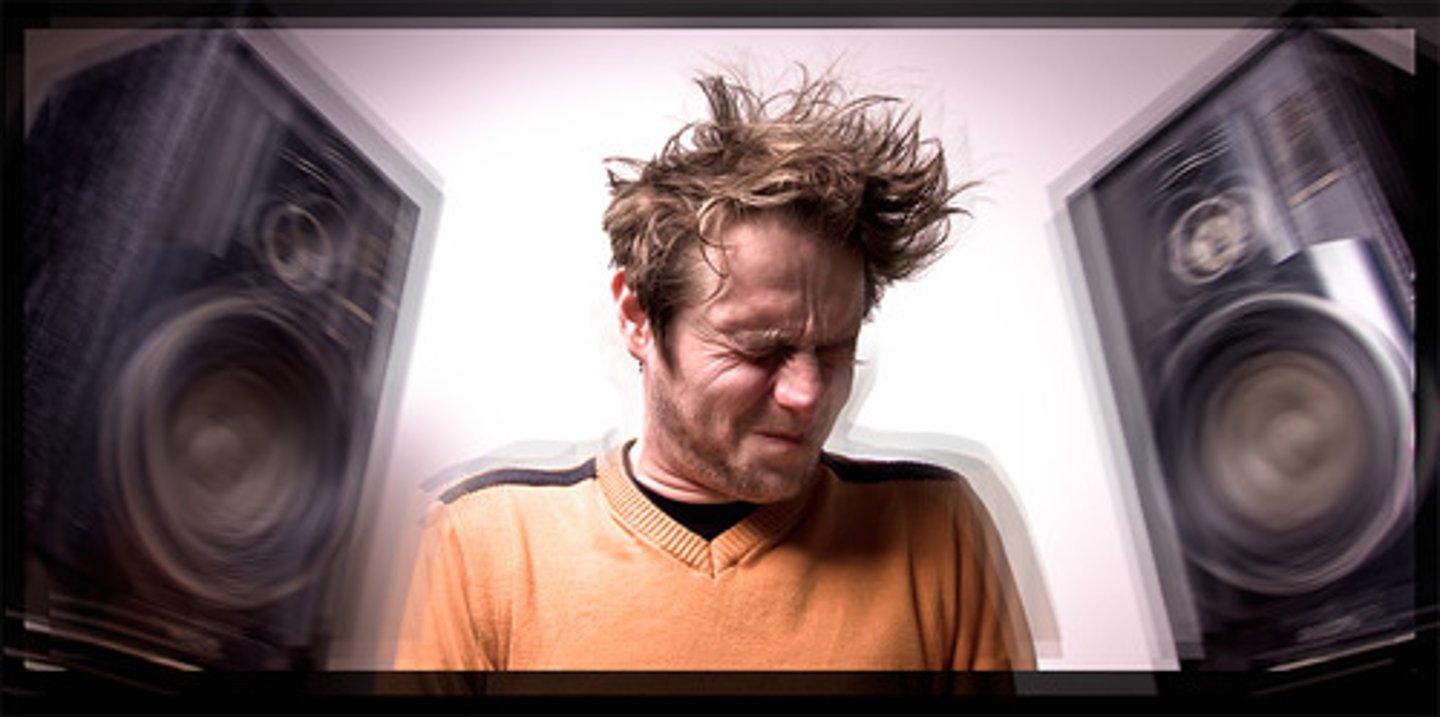
Smell (Olfaction)
Chemical sense - receptors in the nose are activated by molecules wafting through the air
the only sense that bypasses the thalamus

Sensory Interaction
The principle that one sense can influence another, such as when smell affects taste. It demonstrates how our senses work together to create our overall perception of the world.

McGurk effect
when visual and auditory information clash, we end up perceiving a totally different sound from what we actually hear

Olfactory Systems
Responsible for smell. Special receptors in the nose detect smells and send signals to the brain via the olfactory nerve. The thalamus helps process this information, allowing us to identify different odors.
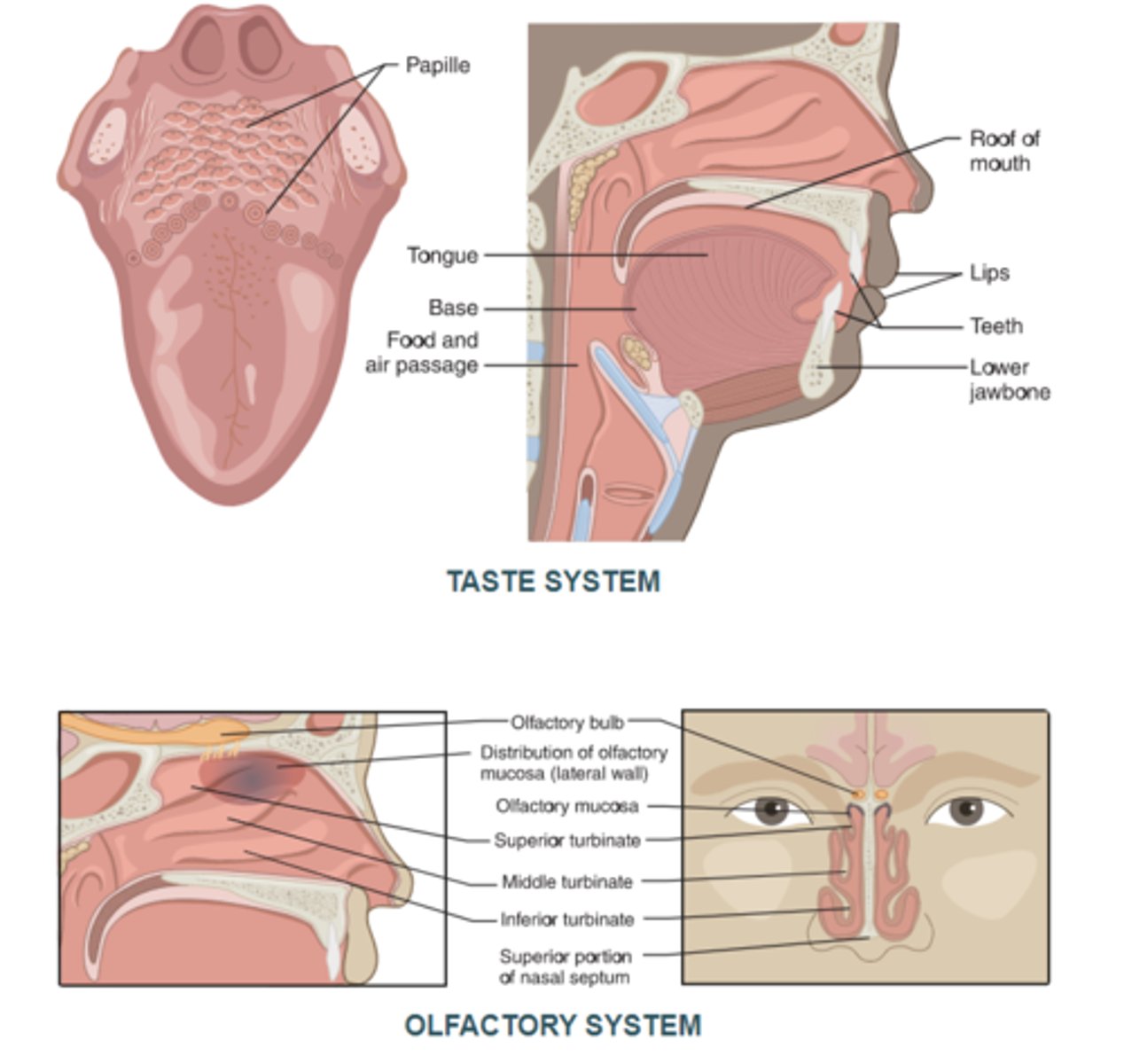
Pheromones
Chemical substances released by animals, including humans, that trigger social or behavioral responses in others of the same species. They play a role in communication, mating, and territorial marking.
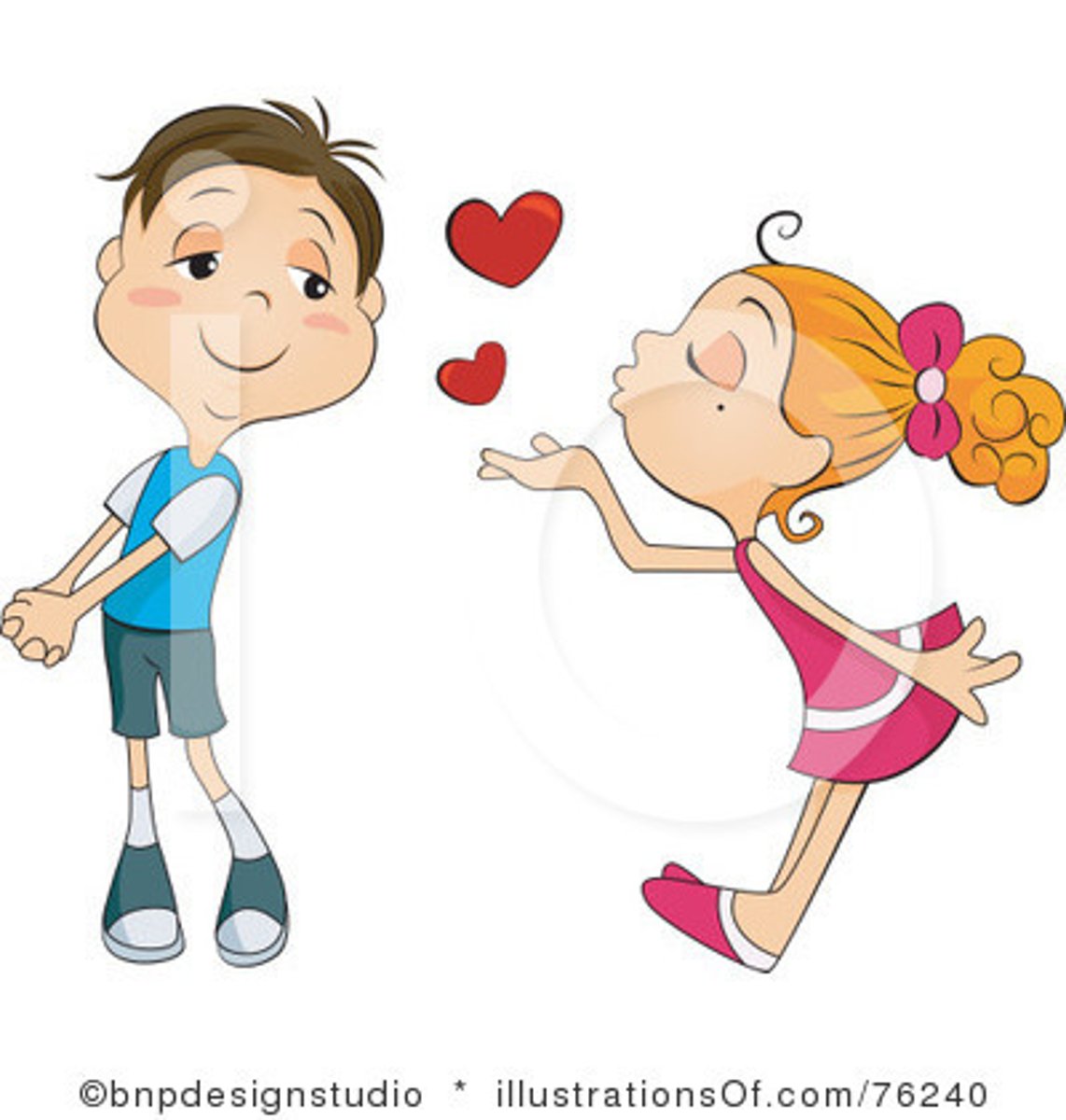
Gustation
The sense of taste, involving receptors on the tongue that detect different flavors.
Chemical sense - different receptors on your tongue respond to the molecular structure of your food
Five types of taste: sweet, sour, salty, bitter, umami
Receptors for each taste are distributed throughout the tongue

Taste Receptors
Specialized cells located on the tongue and in the mouth that detect different tastes.
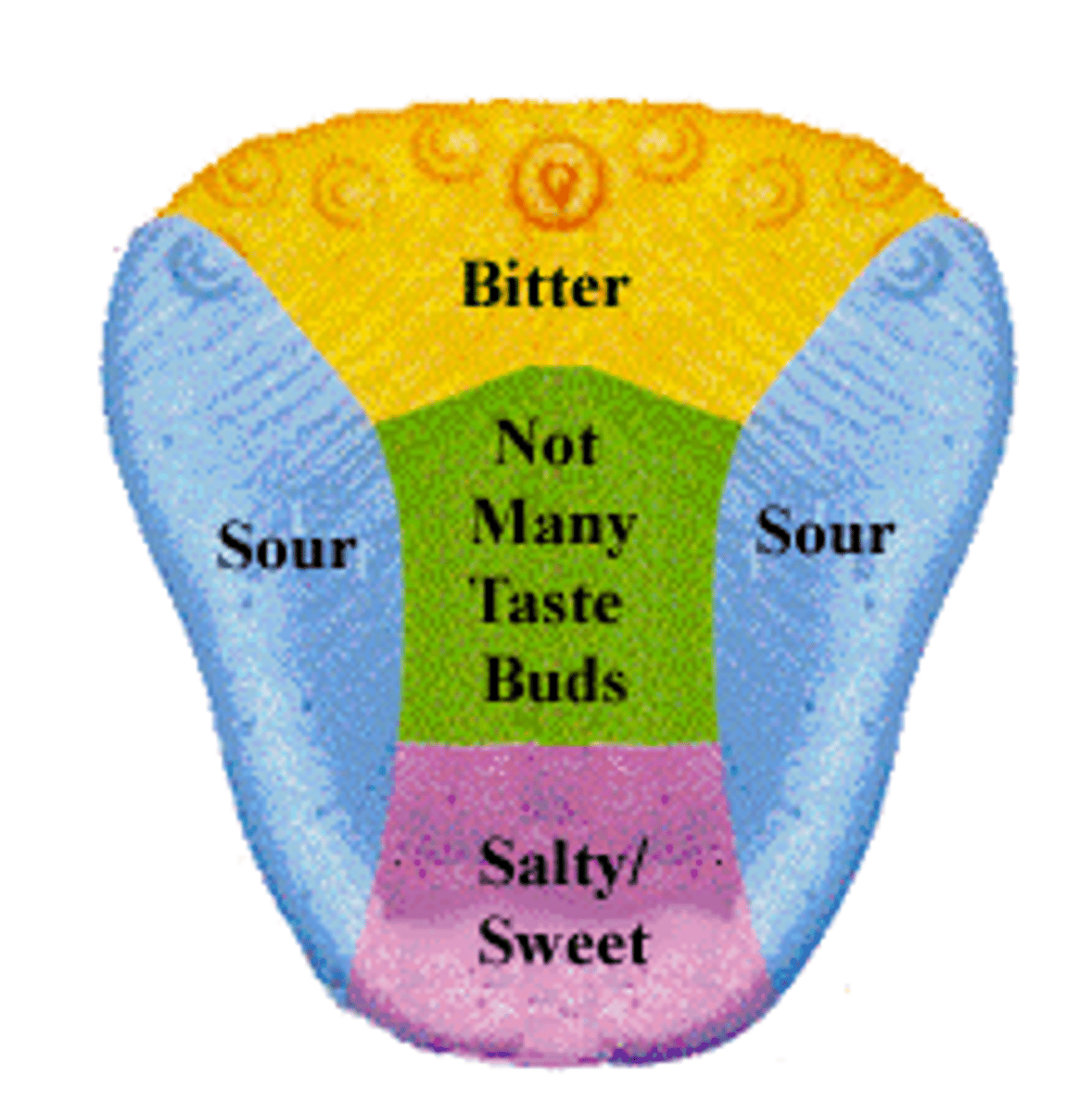
Supertasters
Highly sensitive to taste, experiencing flavors more intensely, especially bitterness.

Medium Tasters
Have an average sensitivity to taste, experiencing flavors moderately.
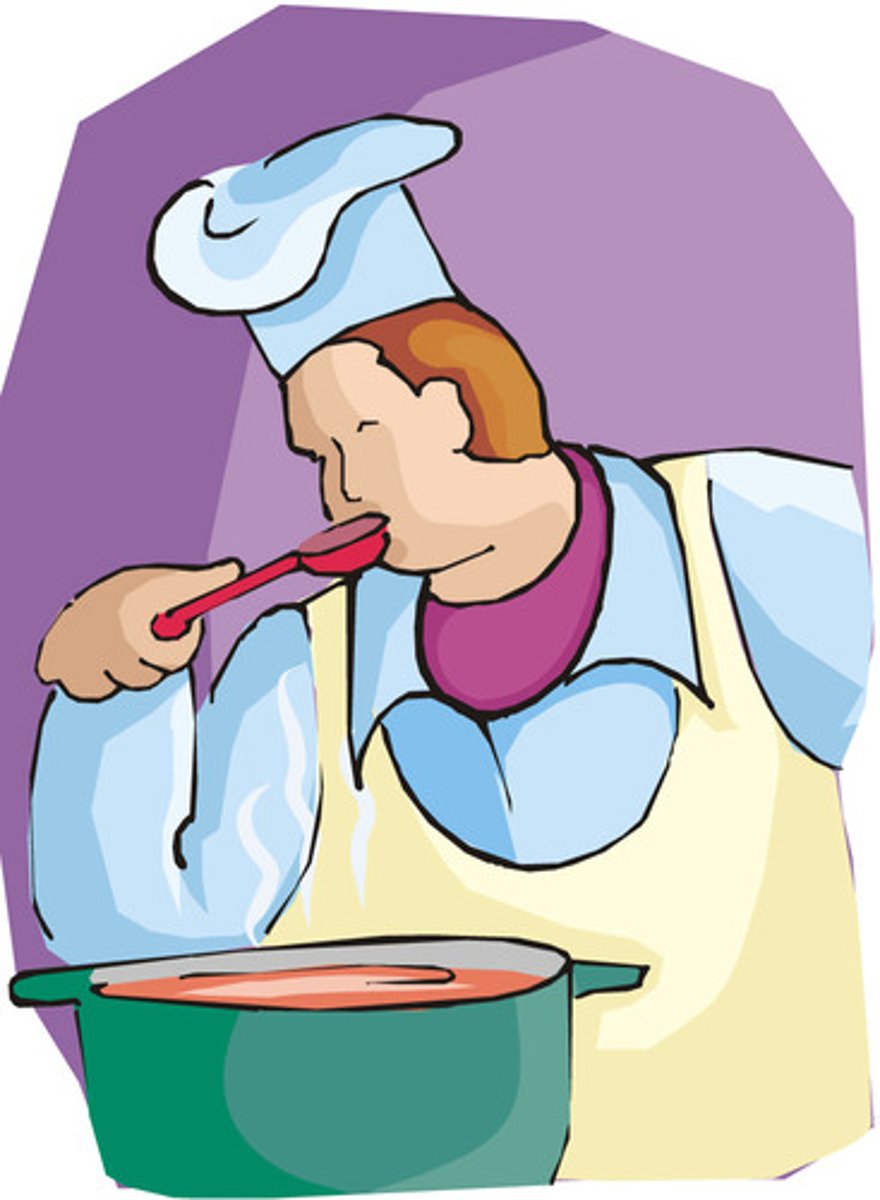
Nontasters
Less sensitive to taste, experiencing flavors less intensely than others.

Touch
Receptors in your skin respond to three types of stimulation: temperature, pain, pressure; sensations are all combinations of these three.
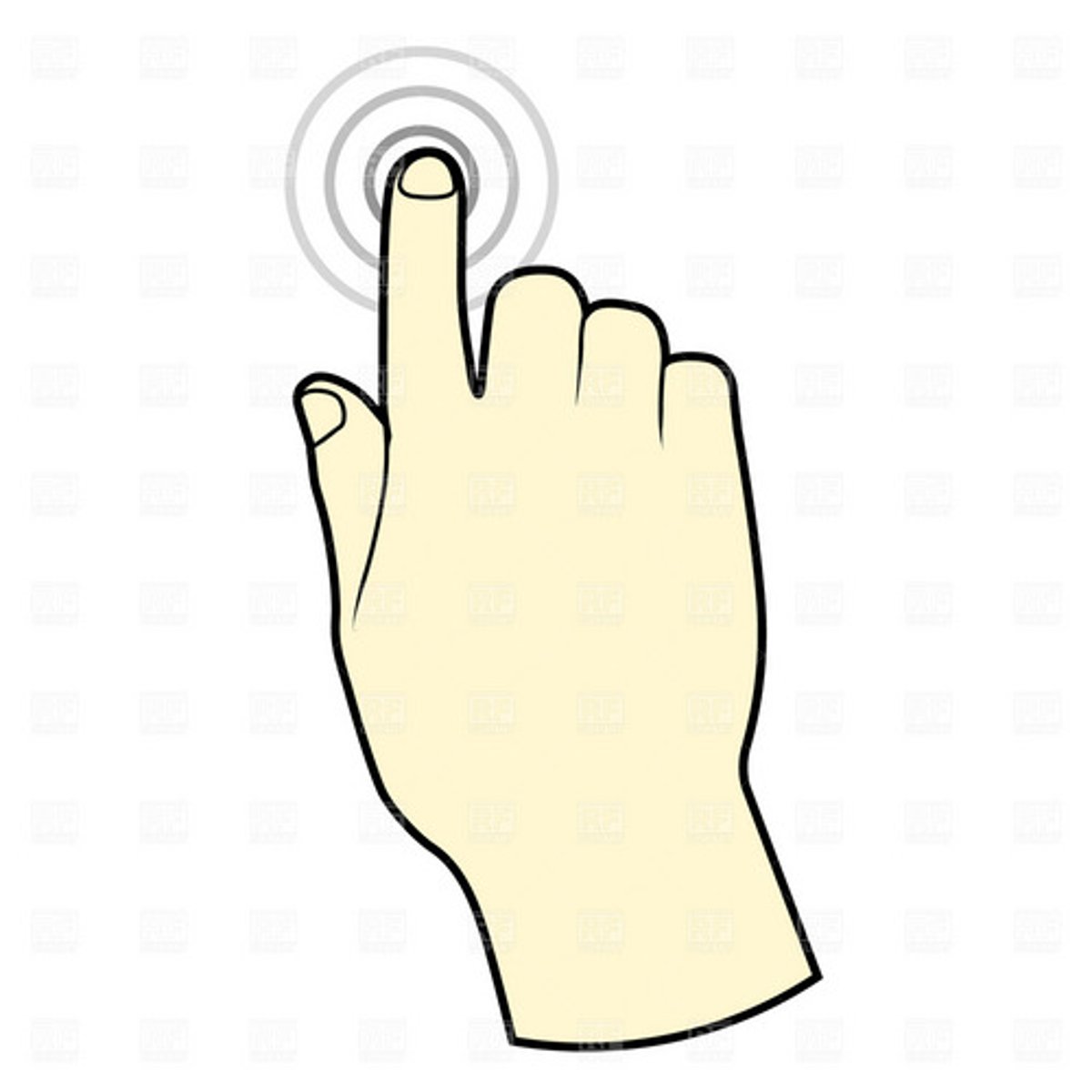
Warm/Cold Receptors
Specialized sensory neurons in the skin that detect changes in temperature. Warm receptors respond to increases in temperature, while cold receptors respond to decreases. They help us perceive and regulate our body's temperature.
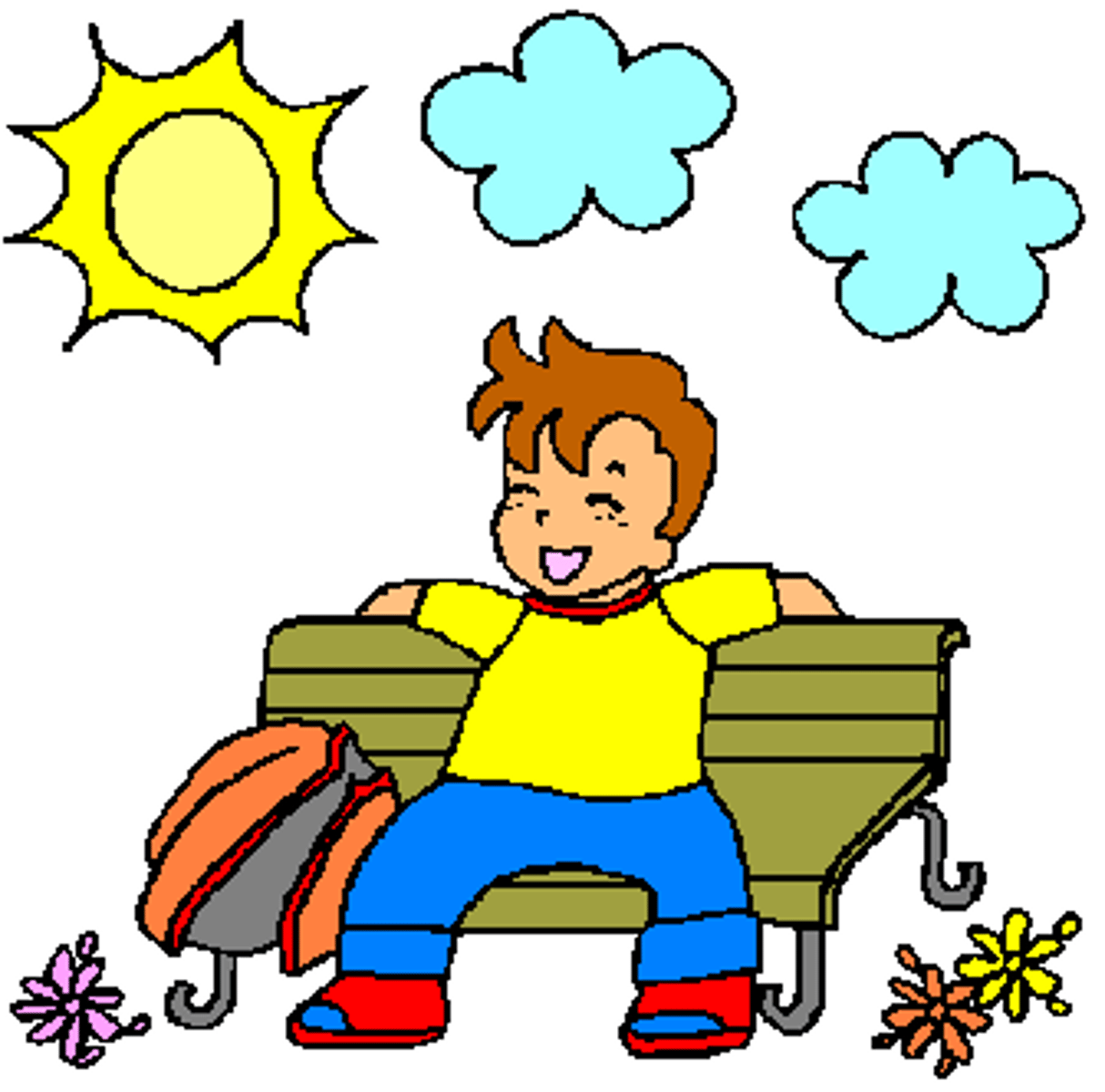
Nociceptors
Pain receptors; they detect harmful levels of pressure, temperatures, or substances
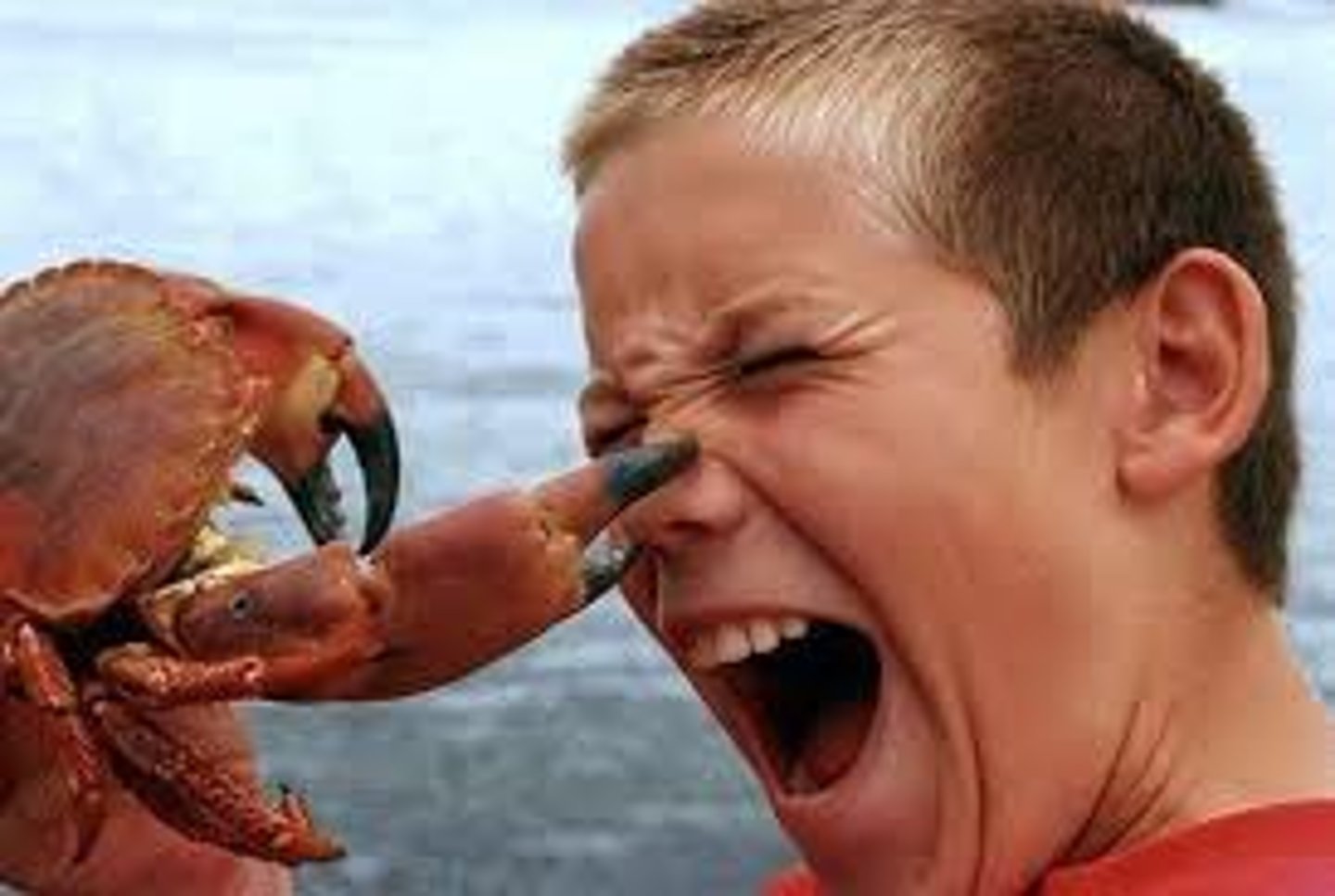
Gate Control Theory
A theory proposing that the experience of pain is modulated by a neural "gate" in the spinal cord. This gate can open to allow pain signals to be transmitted to the brain or close to block them.
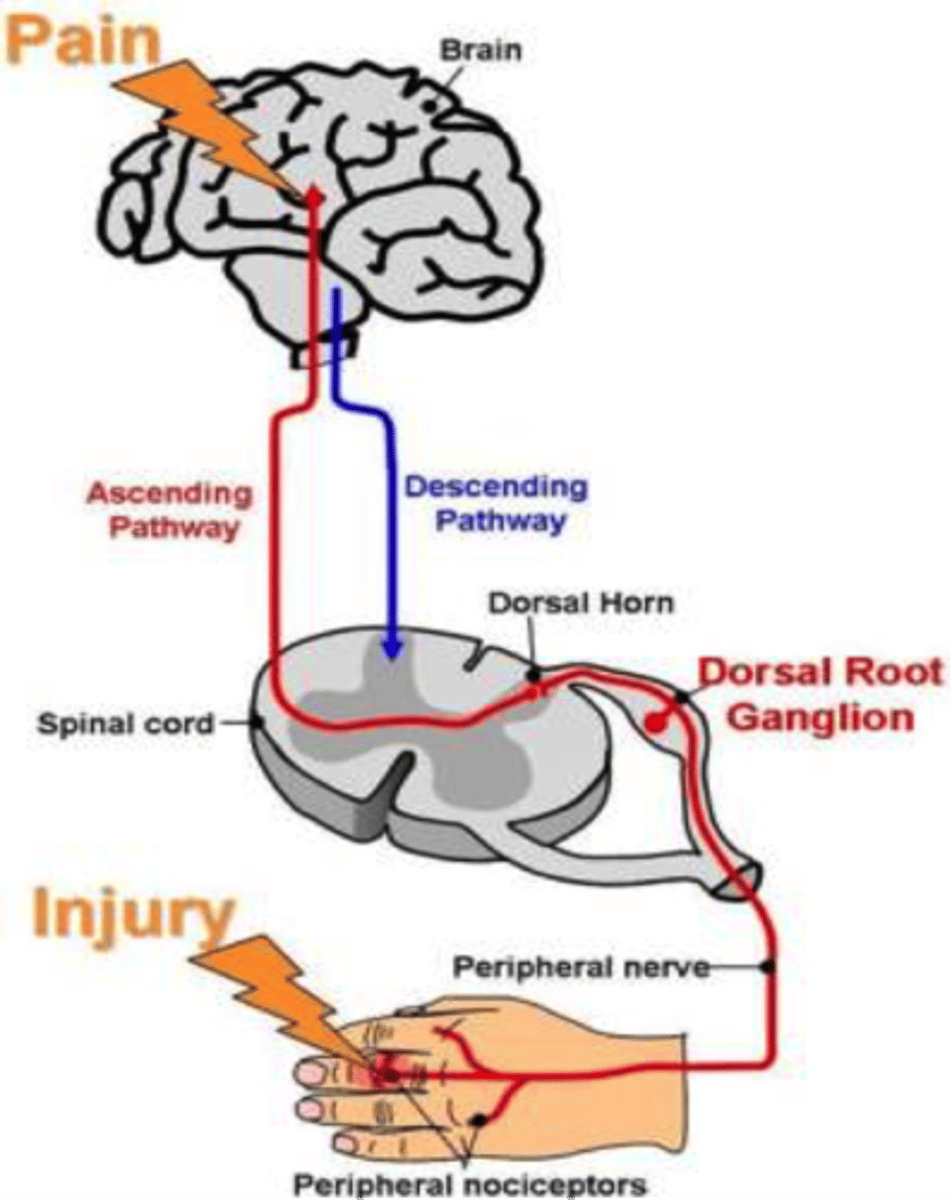
Phantom Limb
Sensation of pain or other feelings in a missing limb. It occurs due to the brain's continued perception of the limb, even though it's no longer there.
Phantom limb sensations can range from tingling to intense pain and are thought to result from the process of plasticity in the somatosensory cortex following amputation.
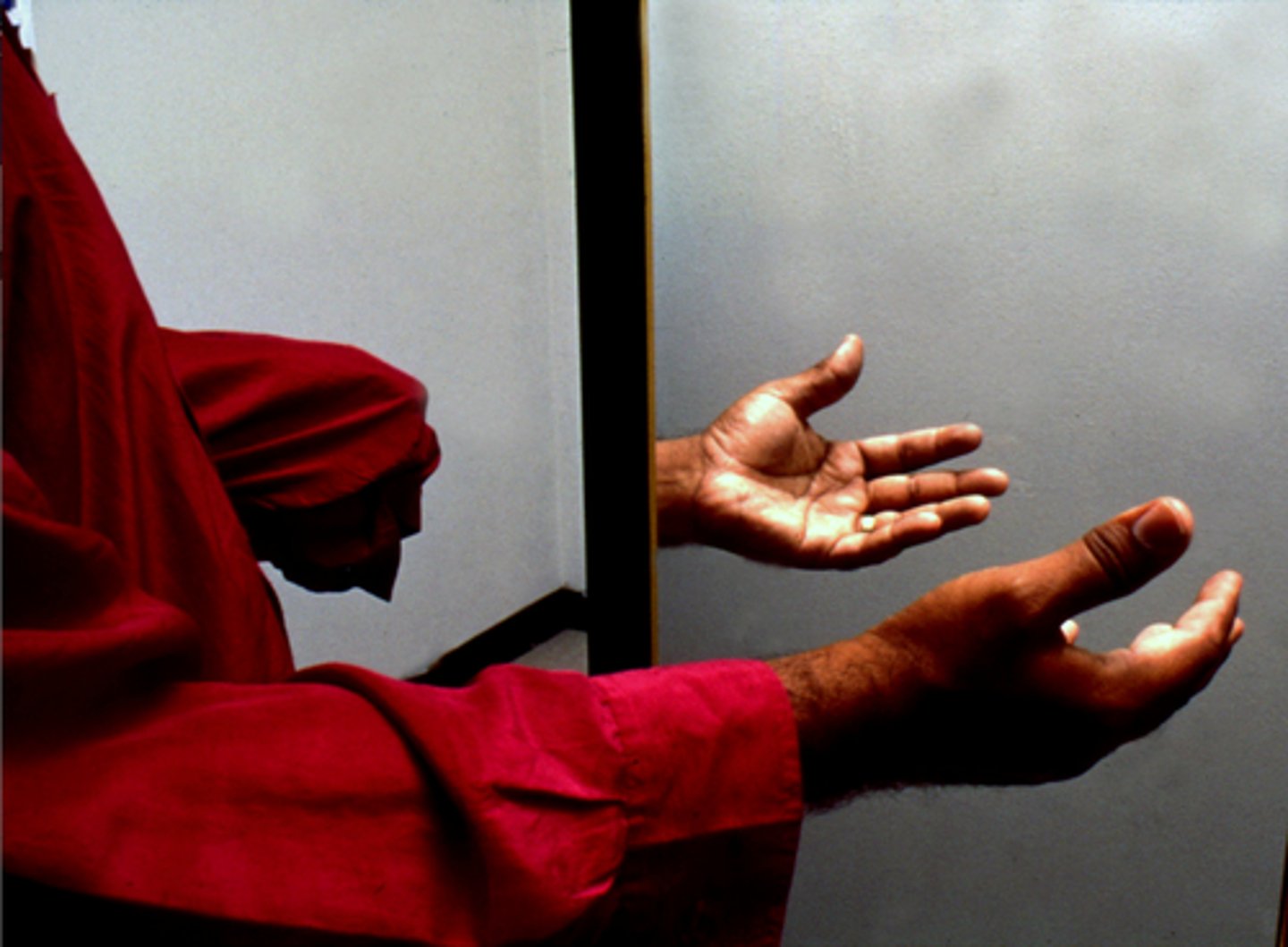
Vestibular Sense
The sense of body orientation and movement, including balance and spatial awareness. It relies on receptors in the inner ear that detect changes in head position and movement, helping to maintain stability and coordinate bodily movements.
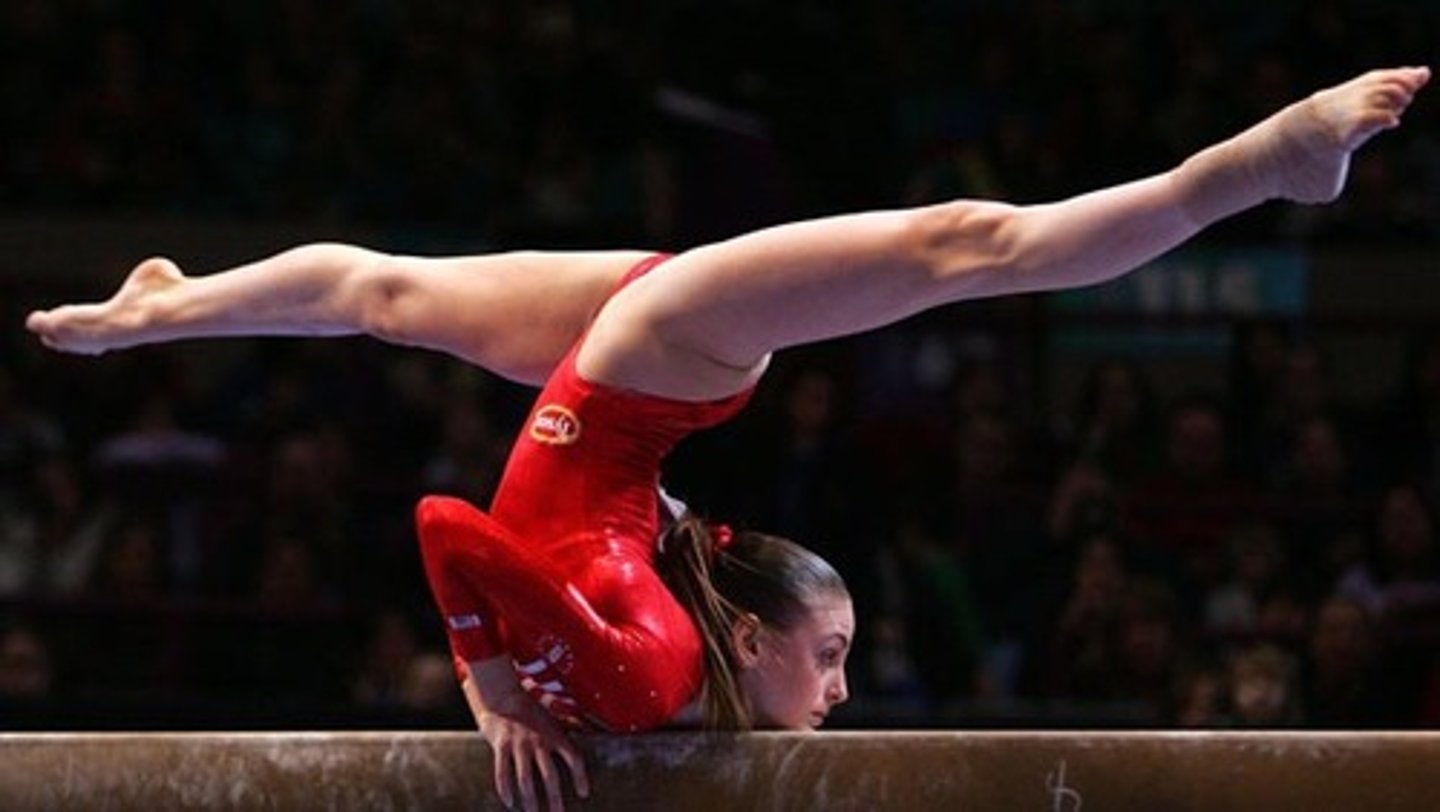
Semicircular Canals
Fluid-filled structures in the inner ear that detect rotational movements of the head. They play a crucial role in the vestibular sense, helping to maintain balance and coordination by sending signals to the brain about changes in head position and movement.
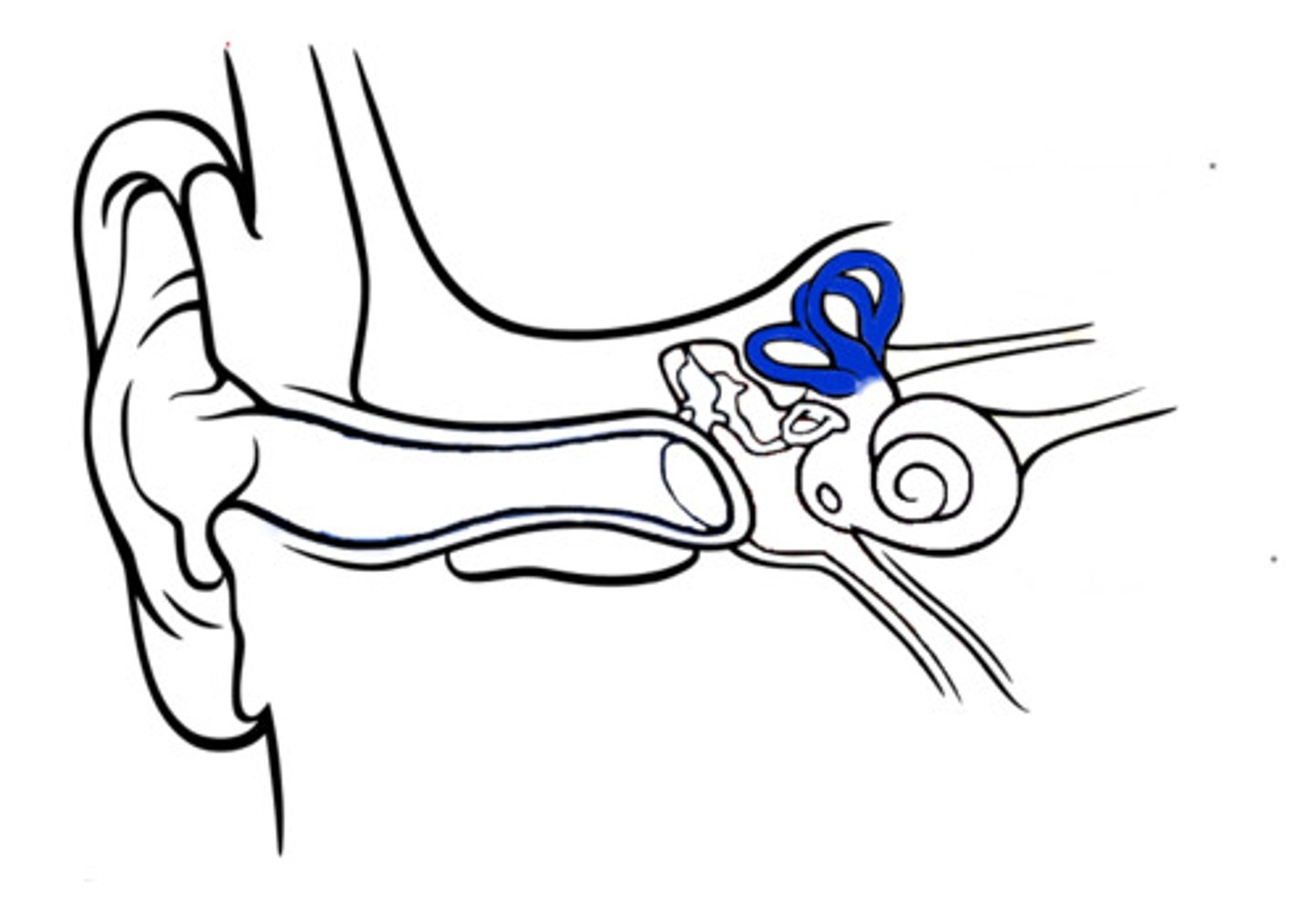
Kinesthesis
The sense of body movement and position, including the awareness of muscle and joint sensations. It allows us to perceive and control our body's movements, providing feedback to the brain about the position and orientation of body parts.
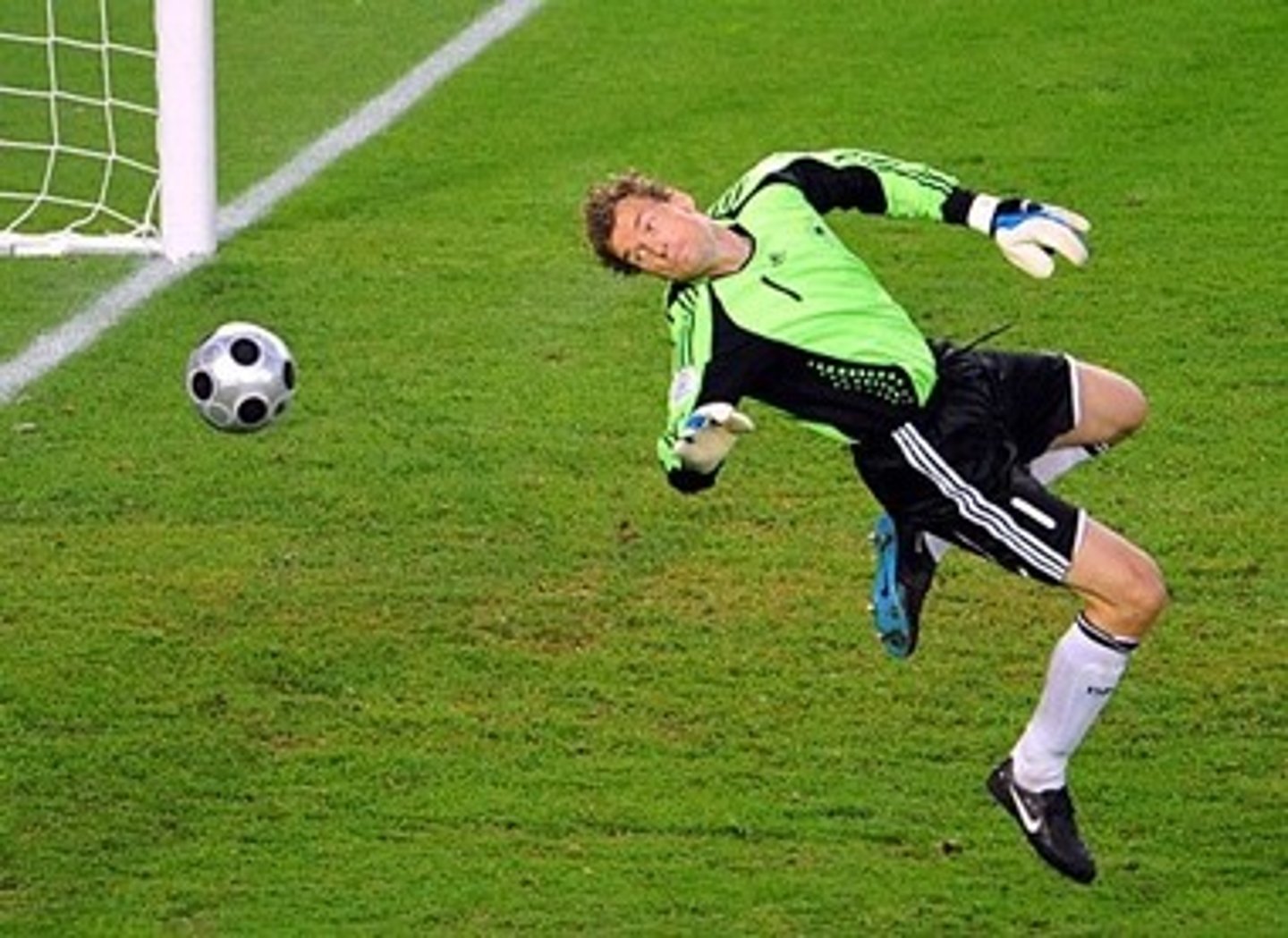
Synesthesia
A condition in which stimulation of one sensory pathway leads to automatic, involuntary experiences in another sensory pathway.

Perceptual set
a tendency to perceive or notice some aspects of the available sensory data and ignore others.
It's influenced by our expectations, experiences, and context, shaping our perception by predisposing us to see what we expect to see.
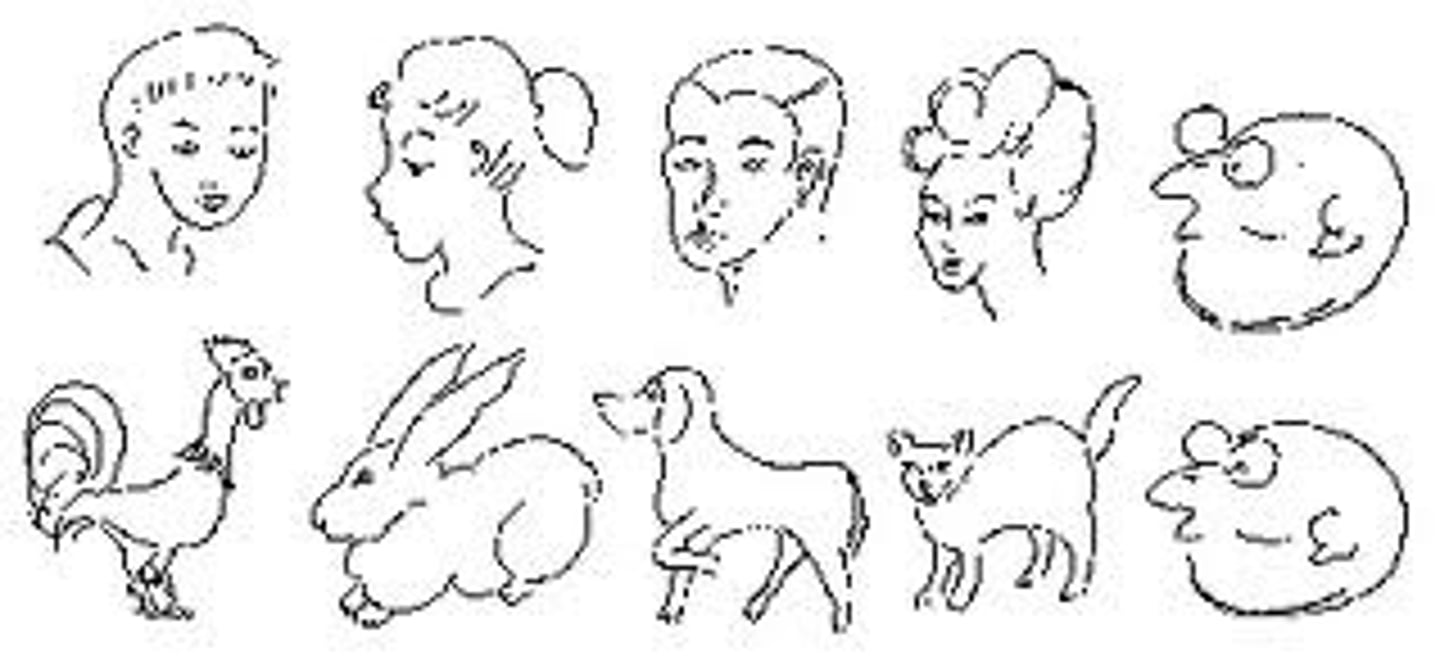
Gestalt psychology
a psychological approach that emphasizes that we often perceive the whole rather than the parts

Figure-ground relationships
the tendency to perceive objects, or figures, as existing on a background (the figure and the surroundings)
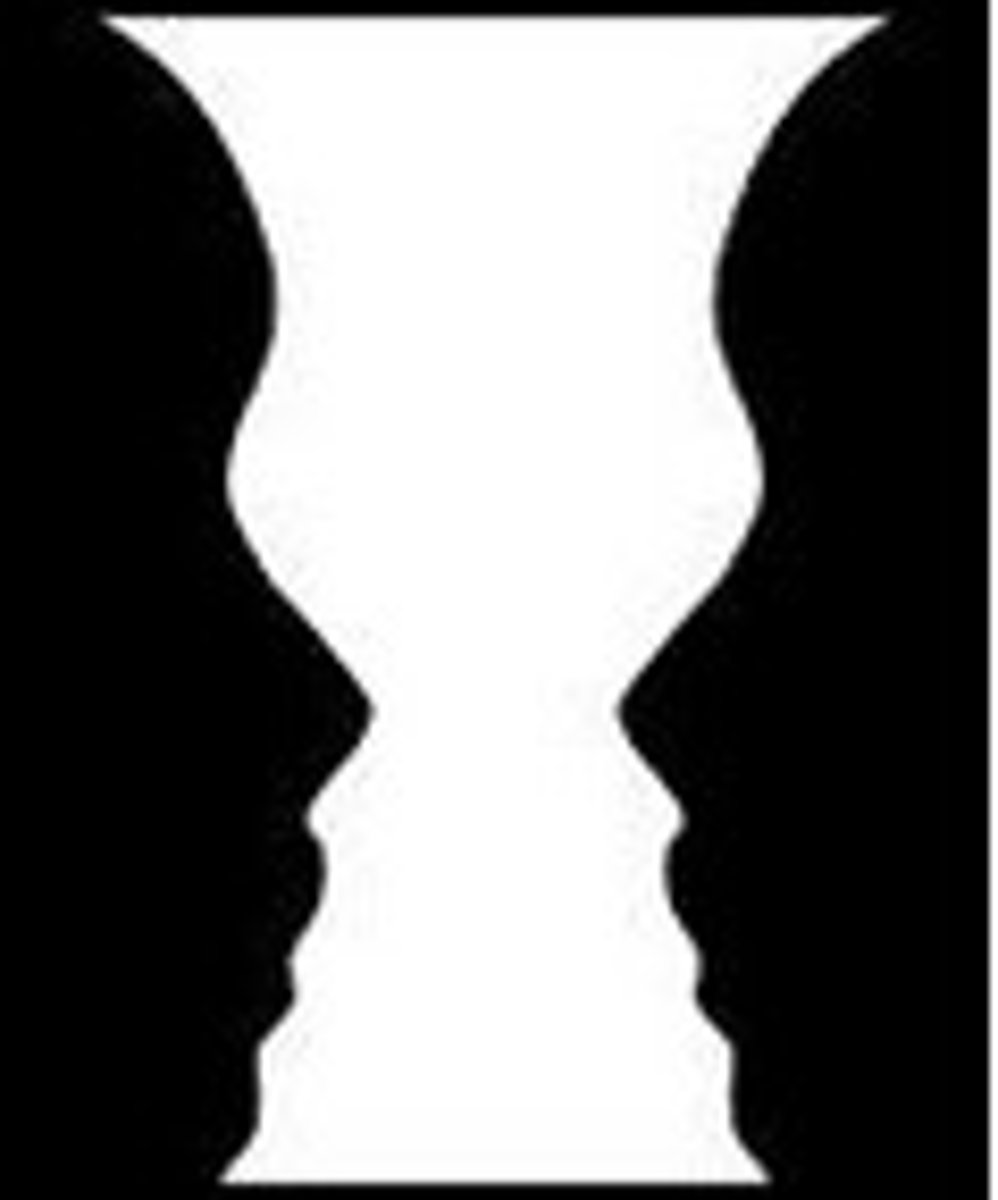
Proximity
Grouping nearby items together

Similarity
grouping figures that are similar
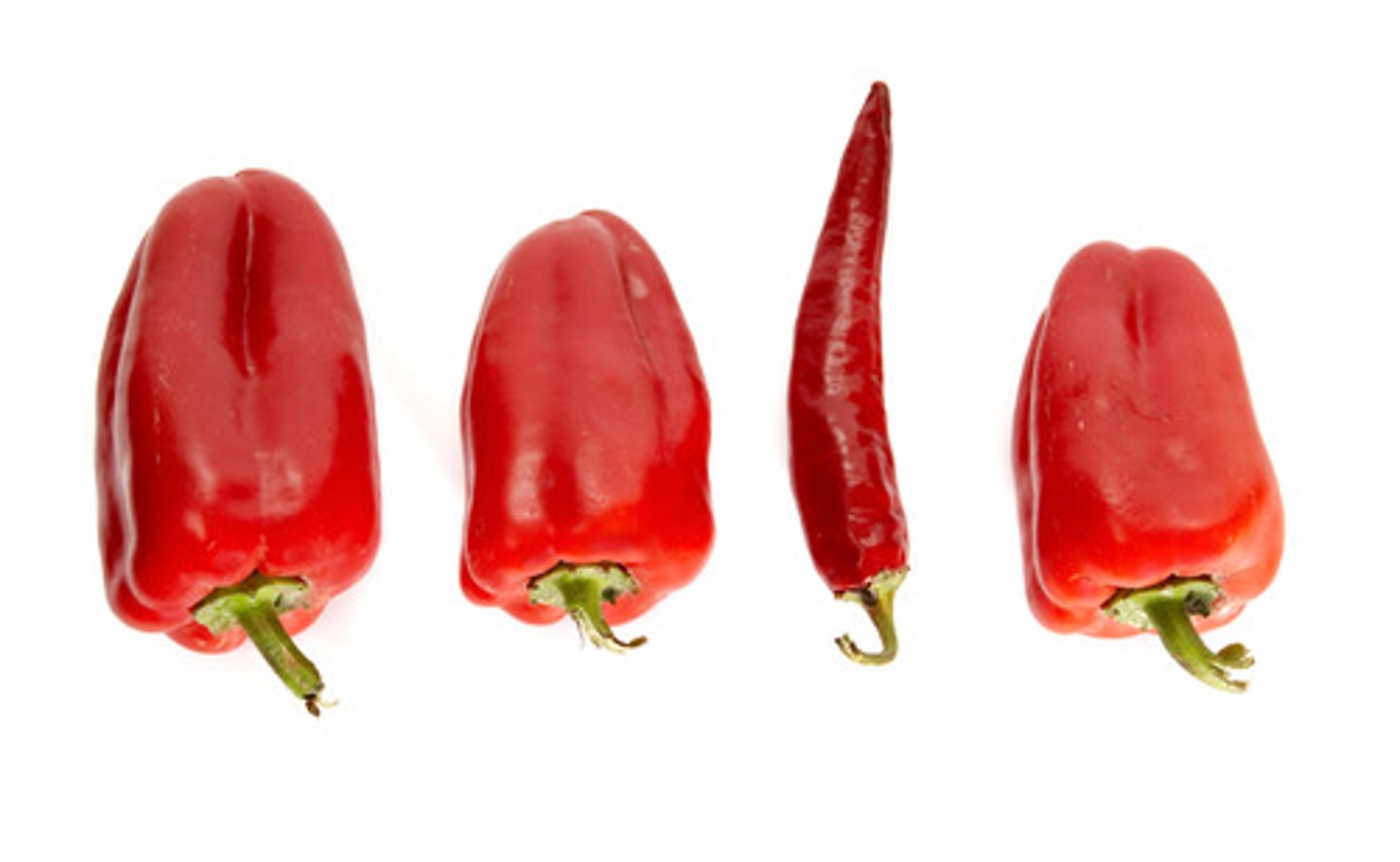
Continuity
Perceiving smooth, continuous patterns rather than discontinuous ones
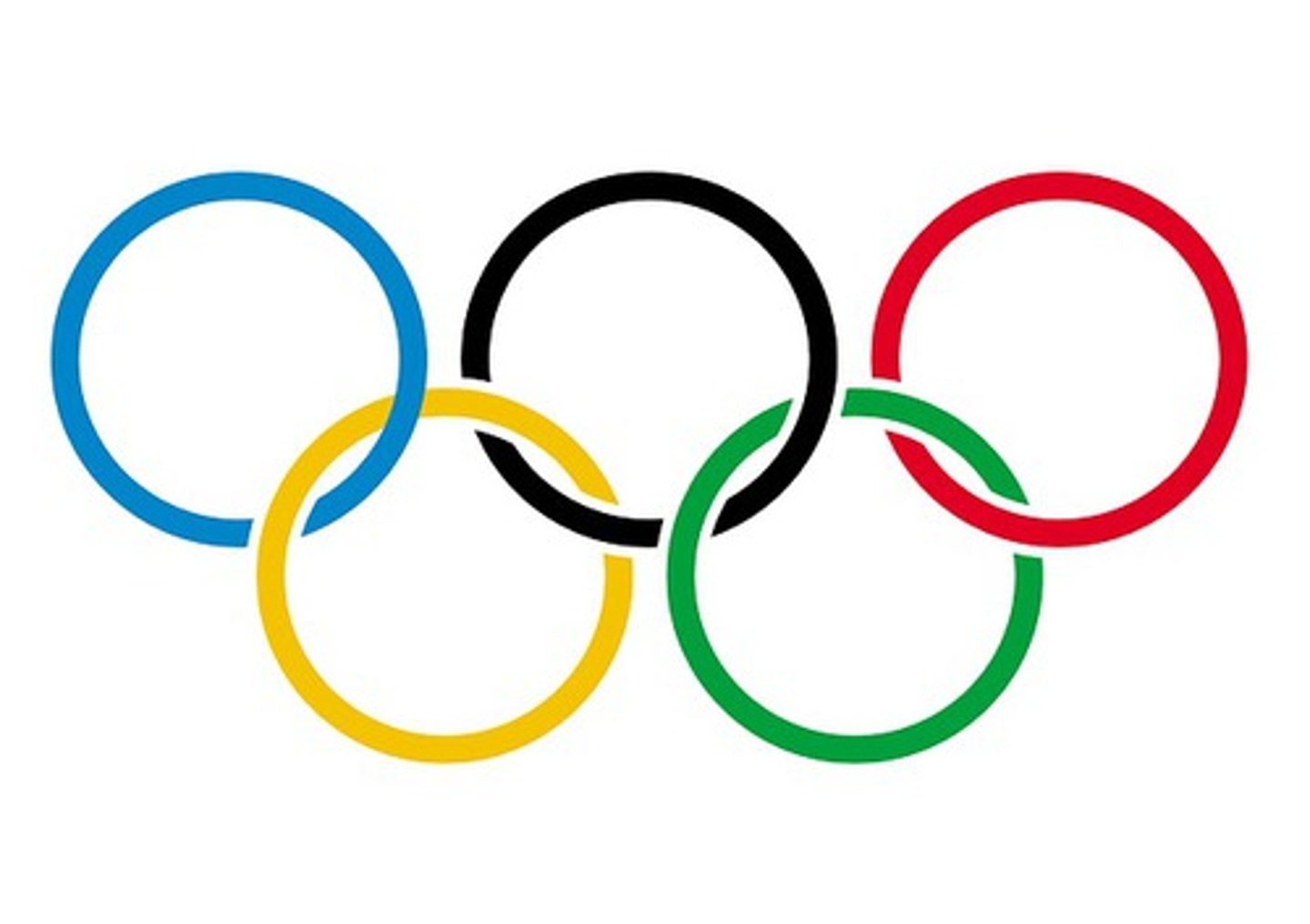
Closure
the tendency to complete figures that are incomplete

Connectedness
the effect of perceiving spots, lines, or areas as a single unit

Binocular Cues
visual information that requires both eyes to perceive depth and distance.
help us perceive the world in three dimensions.
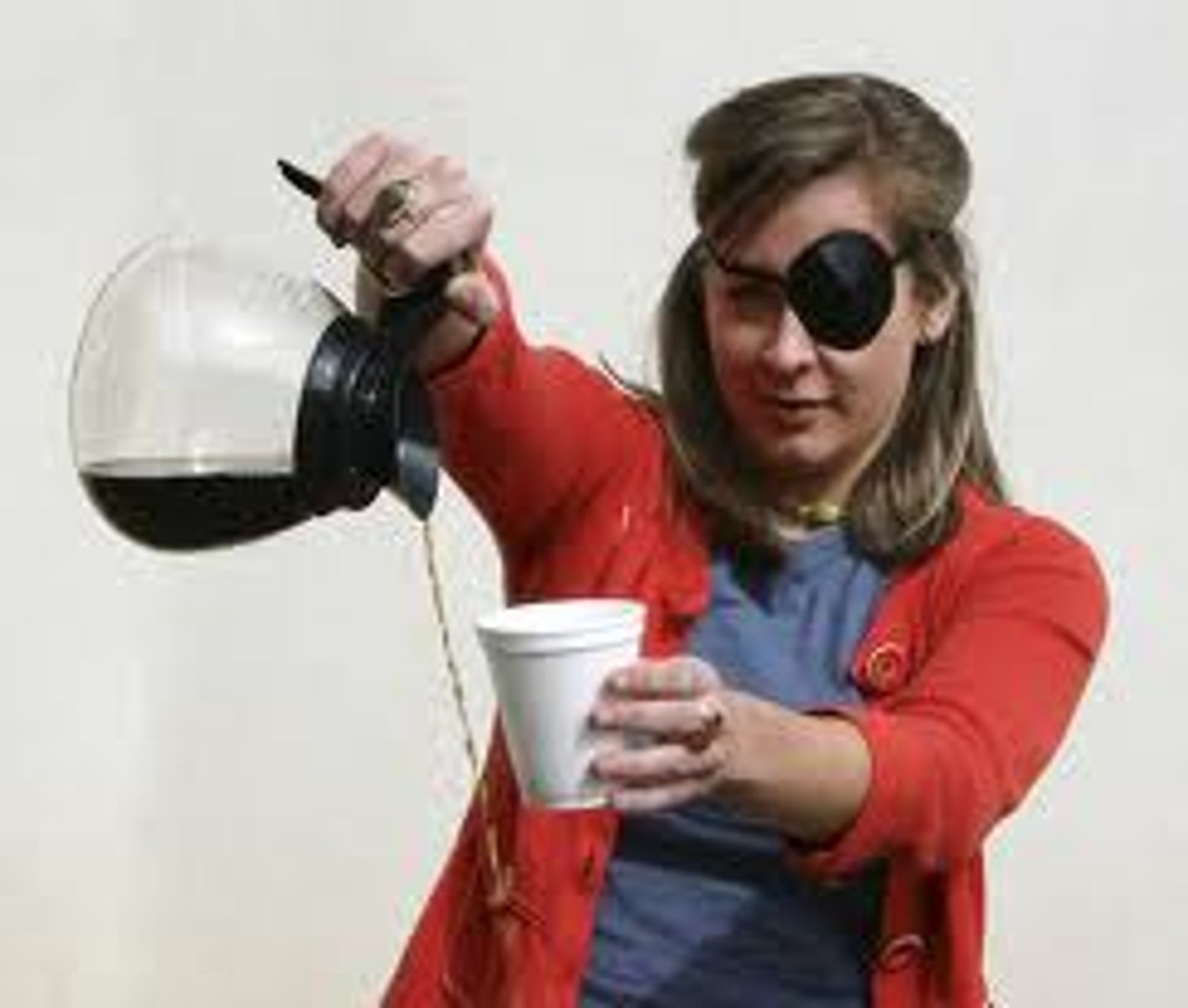
Retinal Disparity
a binocular cue for perceiving depth by comparing images from the retinas in the two eyes, the brain computes distance—the greater the disparity (difference) between the two images, the closer the object.
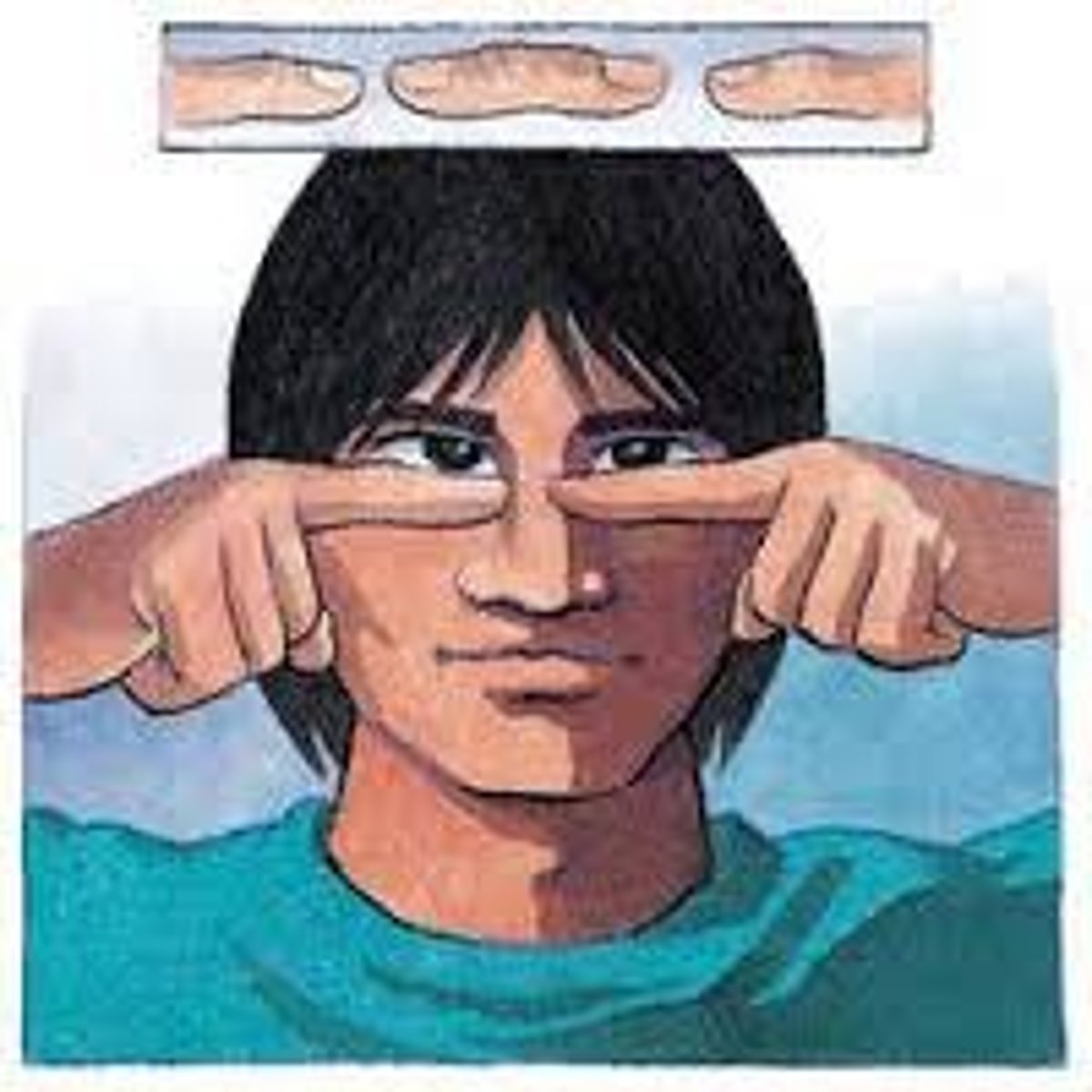
Monocular cues
visual indicators of distance and space that can be perceived using just one eye.

Relative height
we perceive objects higher in our field of vision as farther away

Relative size
Objects that appear smaller seem farther away
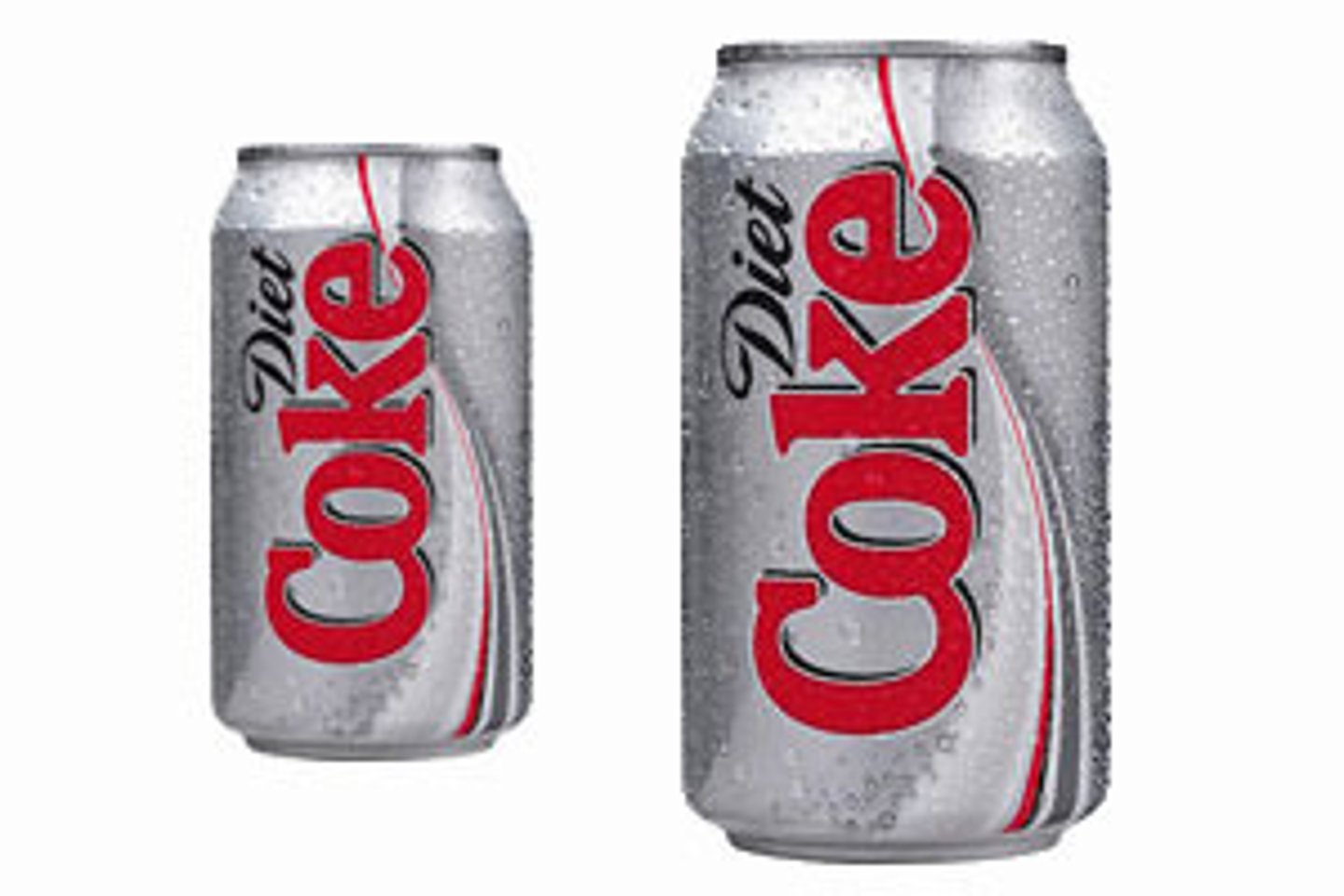
Interposition
if one object partially blocks our view of another, we perceive it as closer
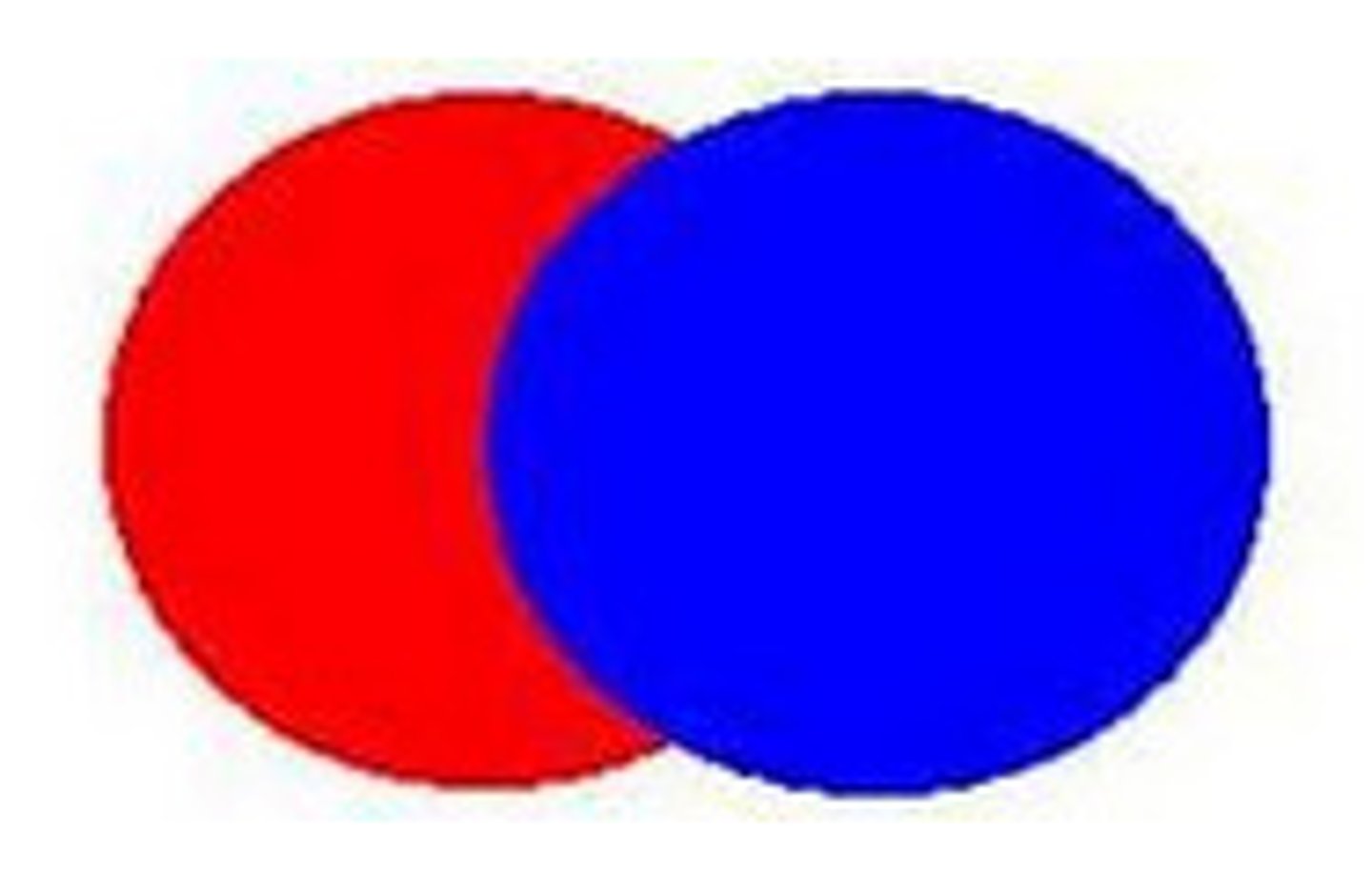
Relative motion
distant objects seem to move slowly with you, while close objects seem to move quickly past

Relative clarity
a depth cue where objects that are clearer and more detailed are perceived as closer, while objects that are hazier or less clear seem farther away.

Light and shadow
shading produces a sense of depth consistent with our assumption that light comes from above
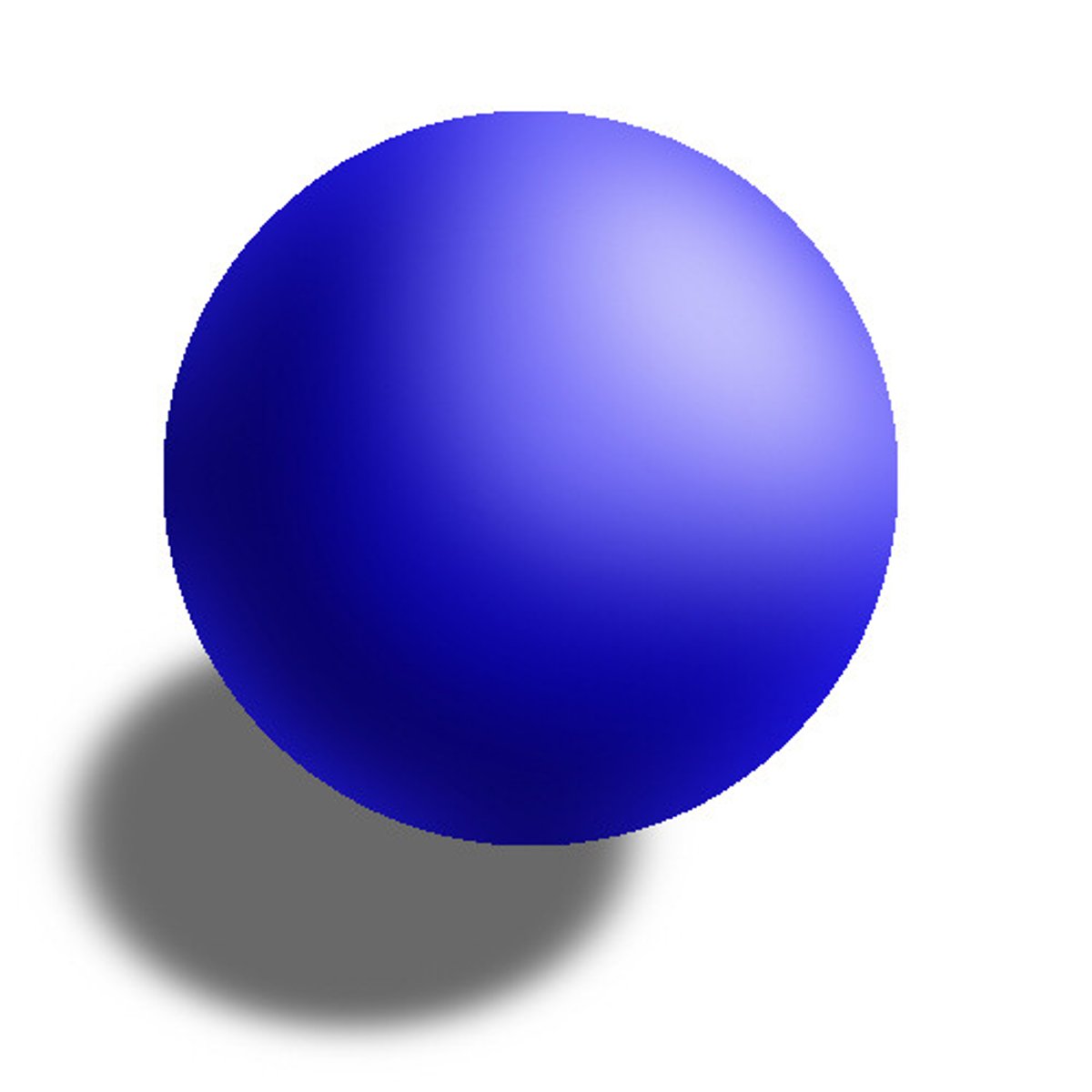
Linear perspective
parallel lines appear to converge with distance
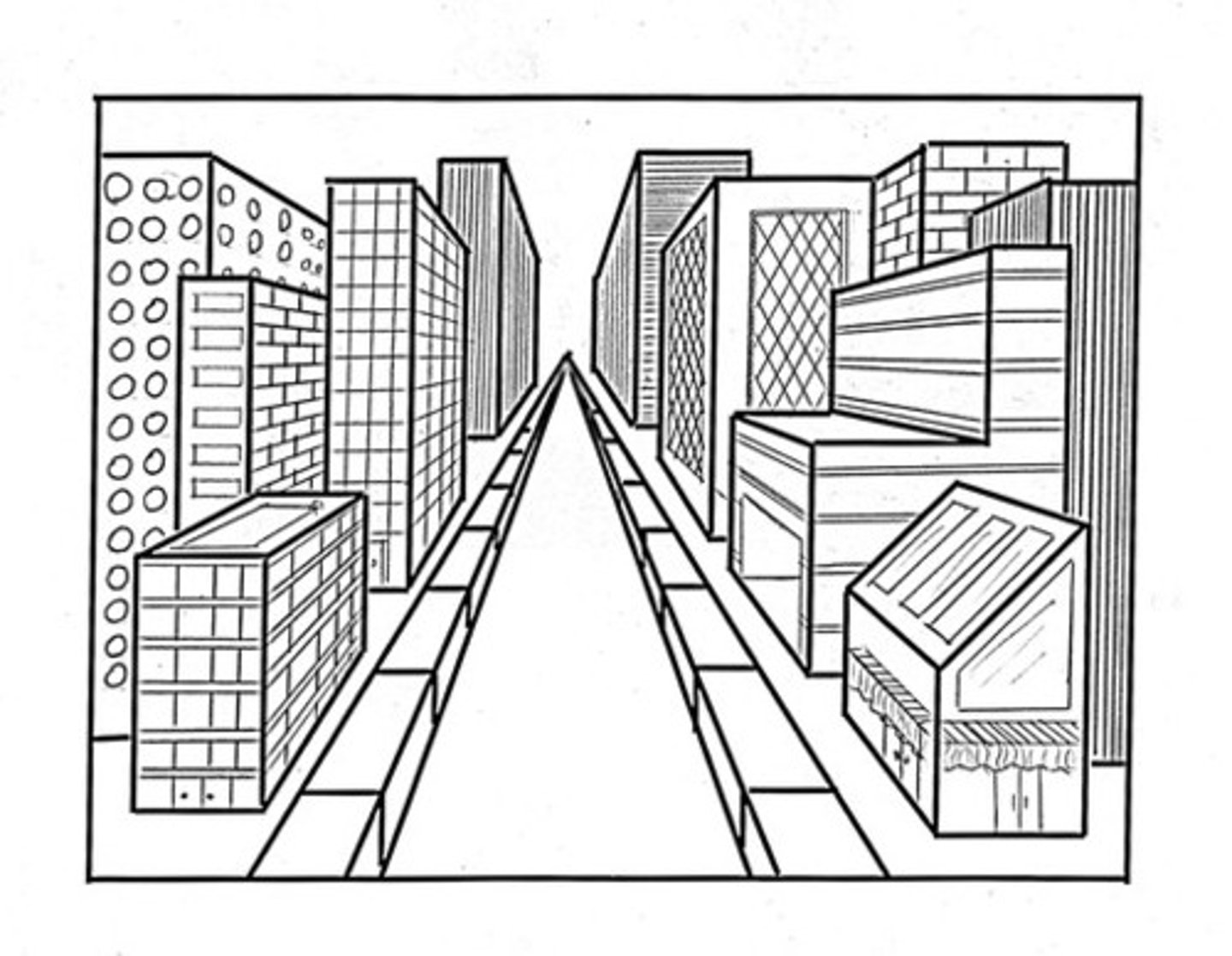
Apparent Movement/Phi phenomenon
the perception of motion when there isn't any actual movement.
An illusion of movement created when two or more adjacent lights blink on and off in quick succession.
Makes stationary objects appear to move.
Perceptual constancy
our brain's ability to see objects as unchanging, even when the image on our retina (like size, shape, or color) changes.
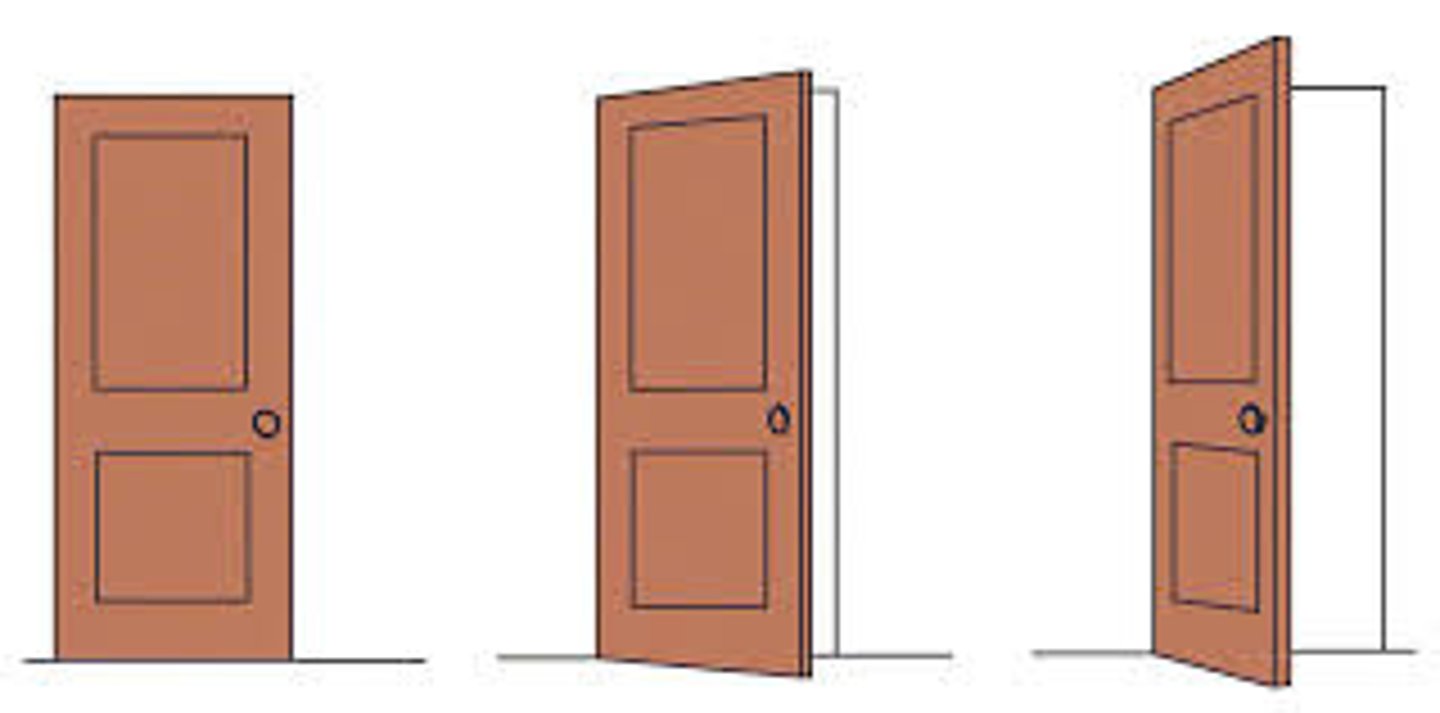
Cornea
The clear tissue that covers the front of the eye
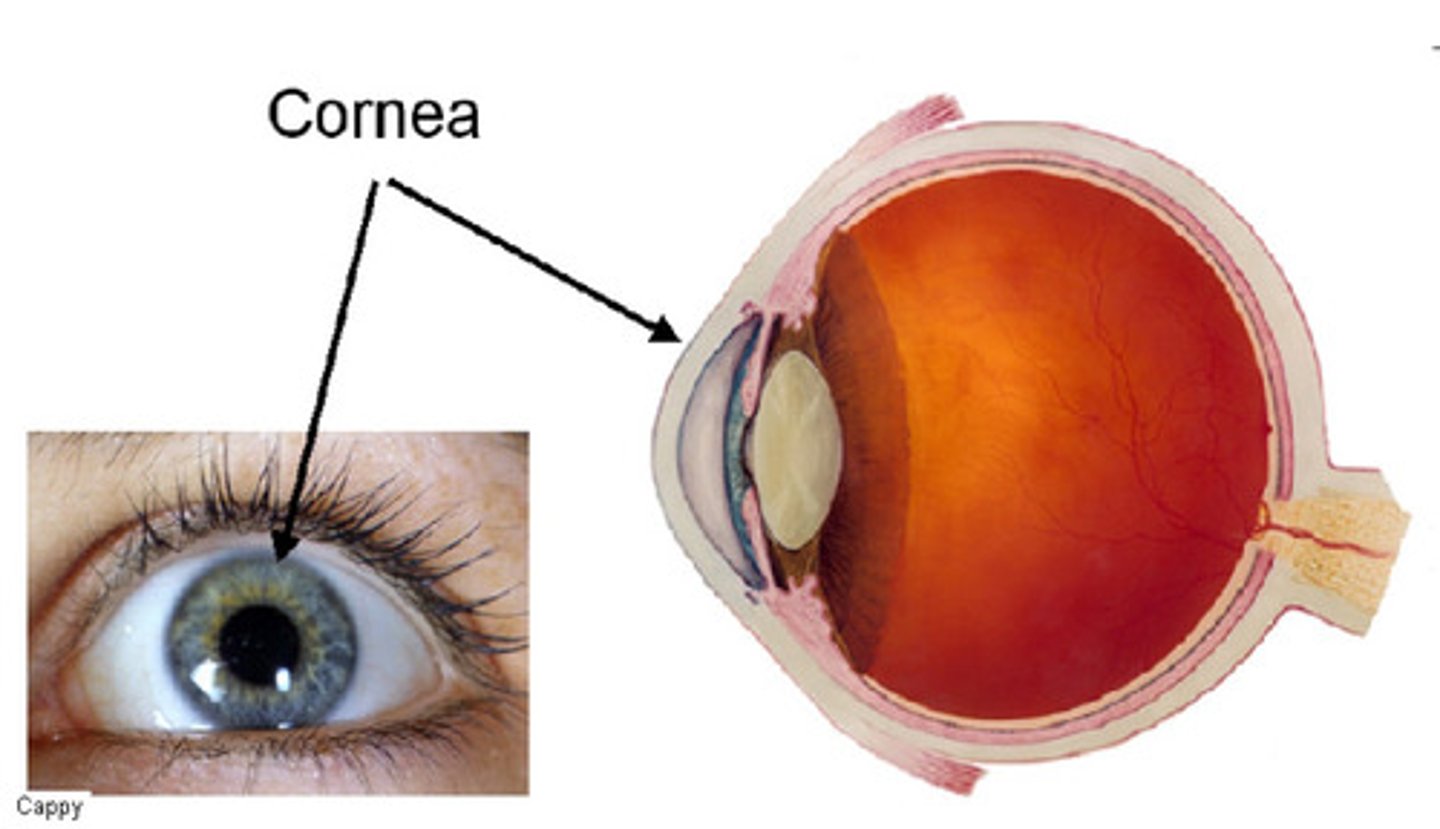
Pupil
the adjustable opening in the center of the eye through which light enters
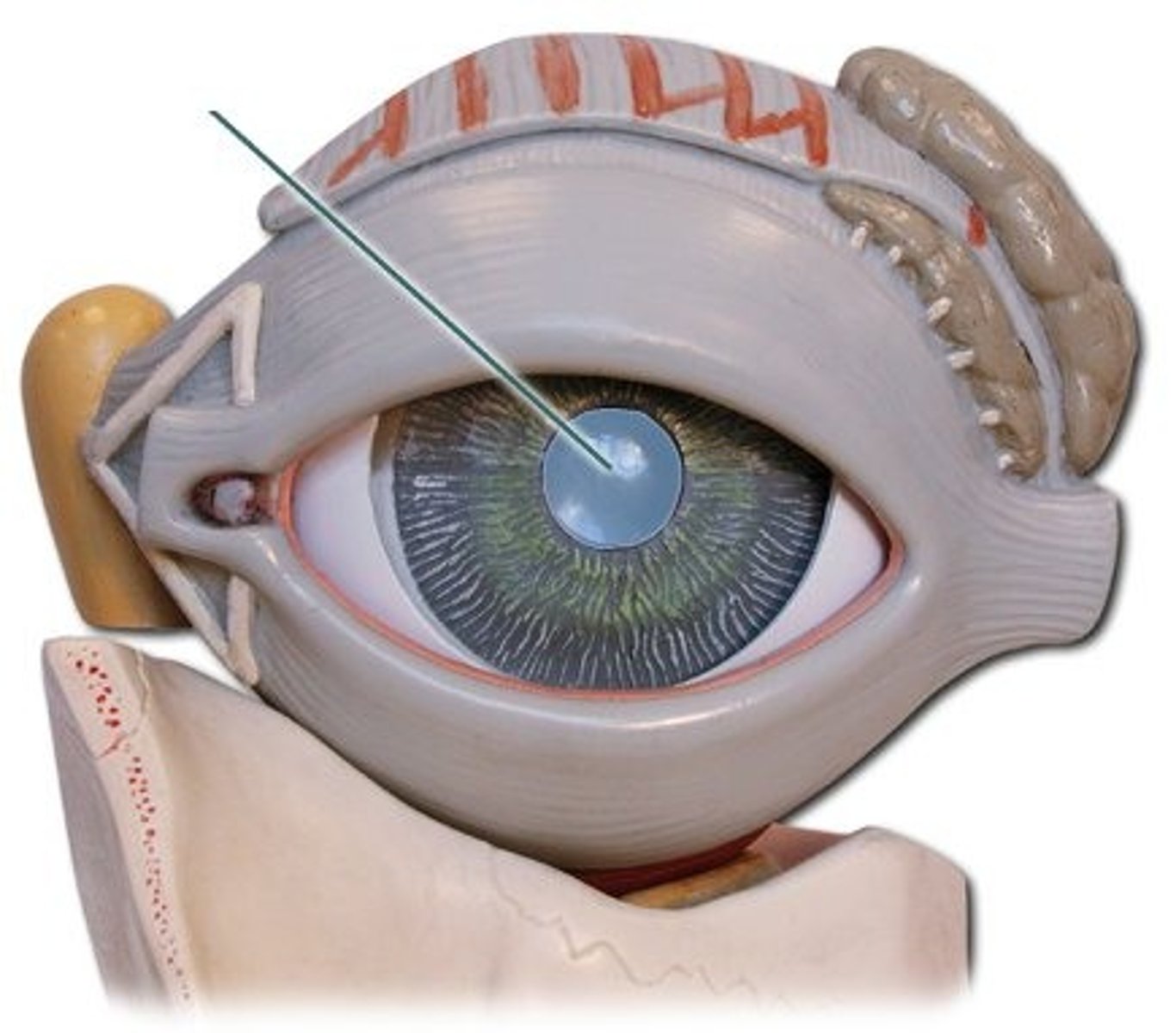
Iris
Colored muscle in the eye that controls the size of the pupil
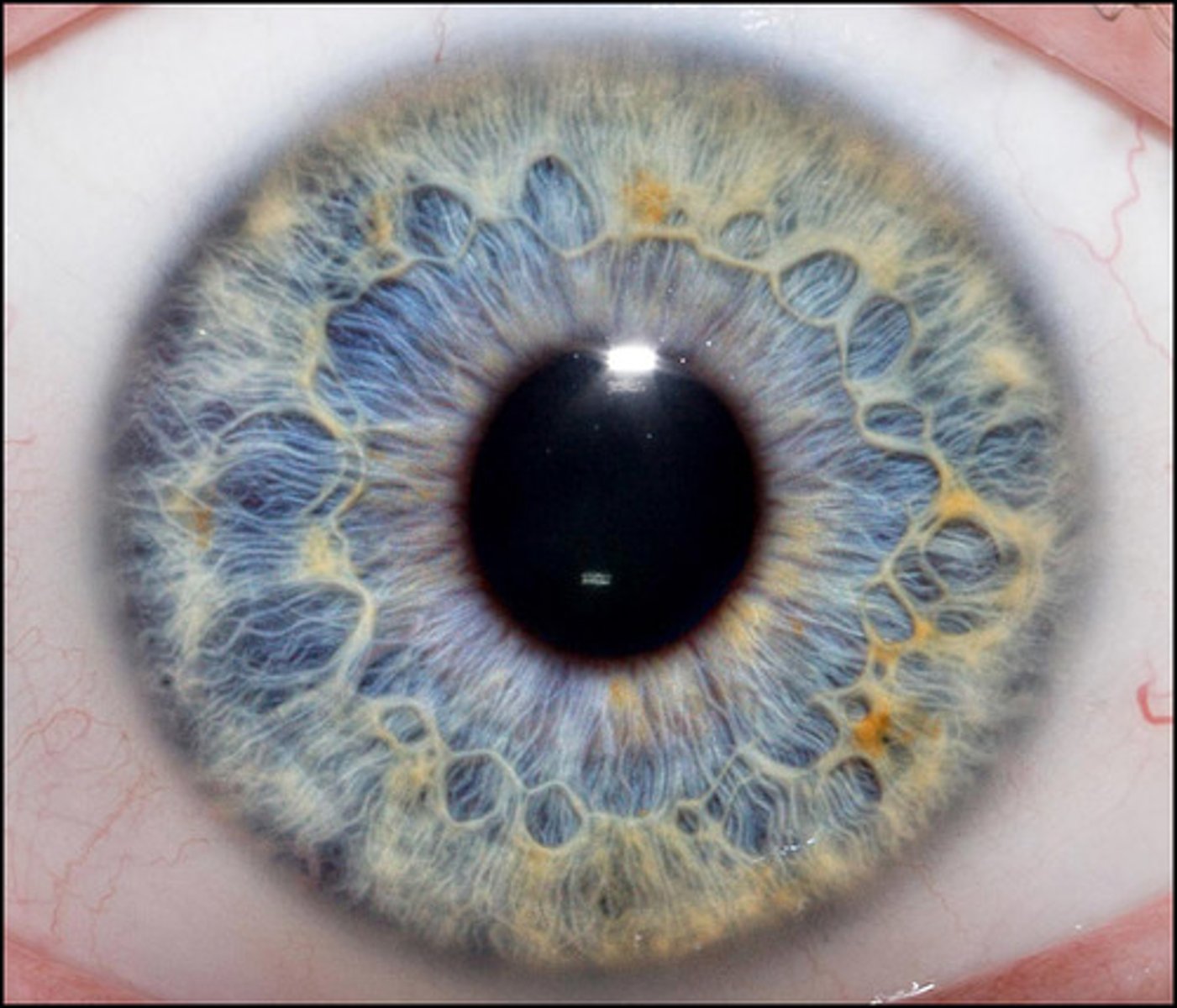
Optic nerve
the nerve that carries neural impulses from the eye to the brain
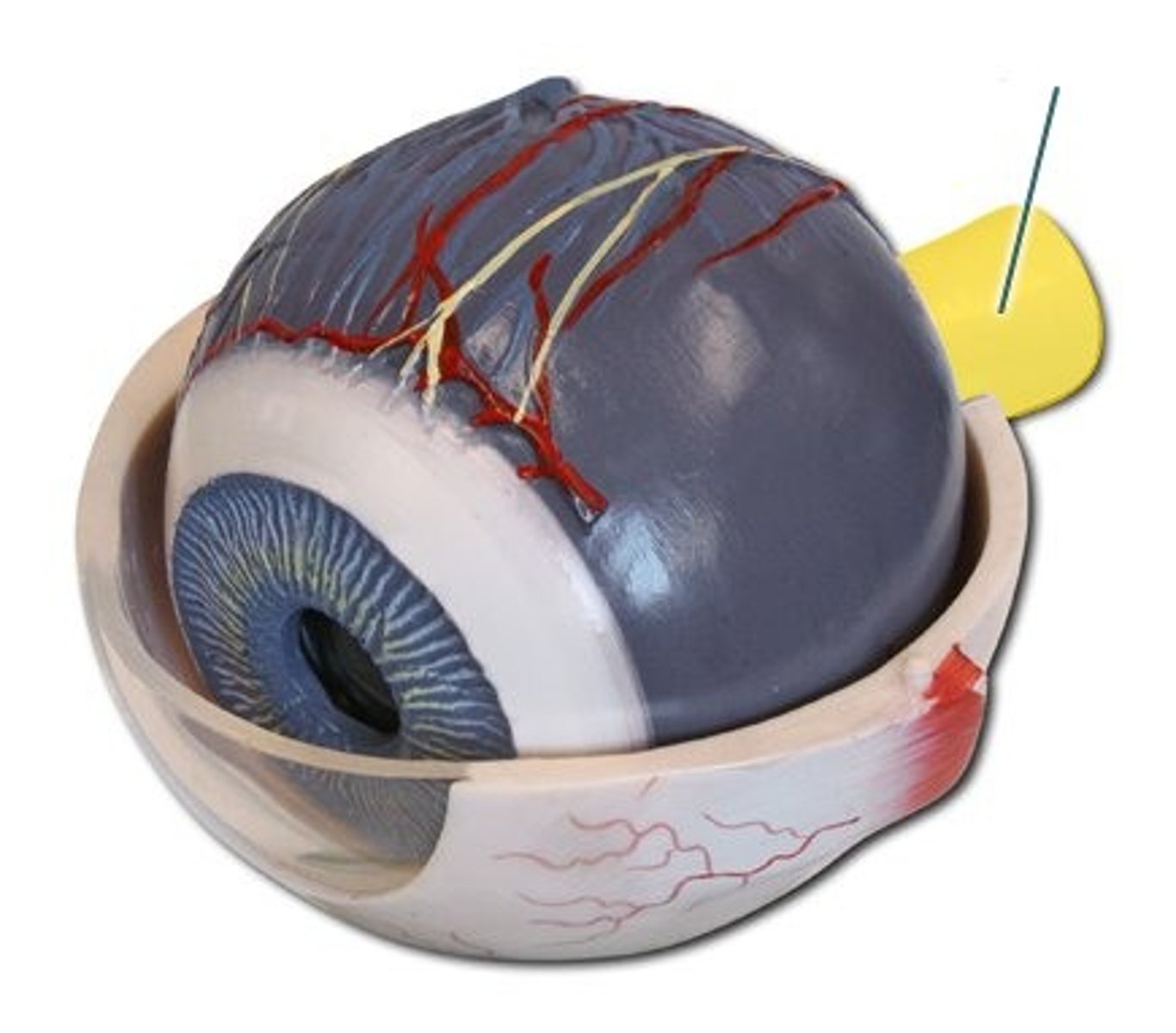
Texture Gradient
the way we perceive texture to become denser and finer as it recedes into the distance.

Convergence
when our eyes move inward toward each other to focus on a close object.
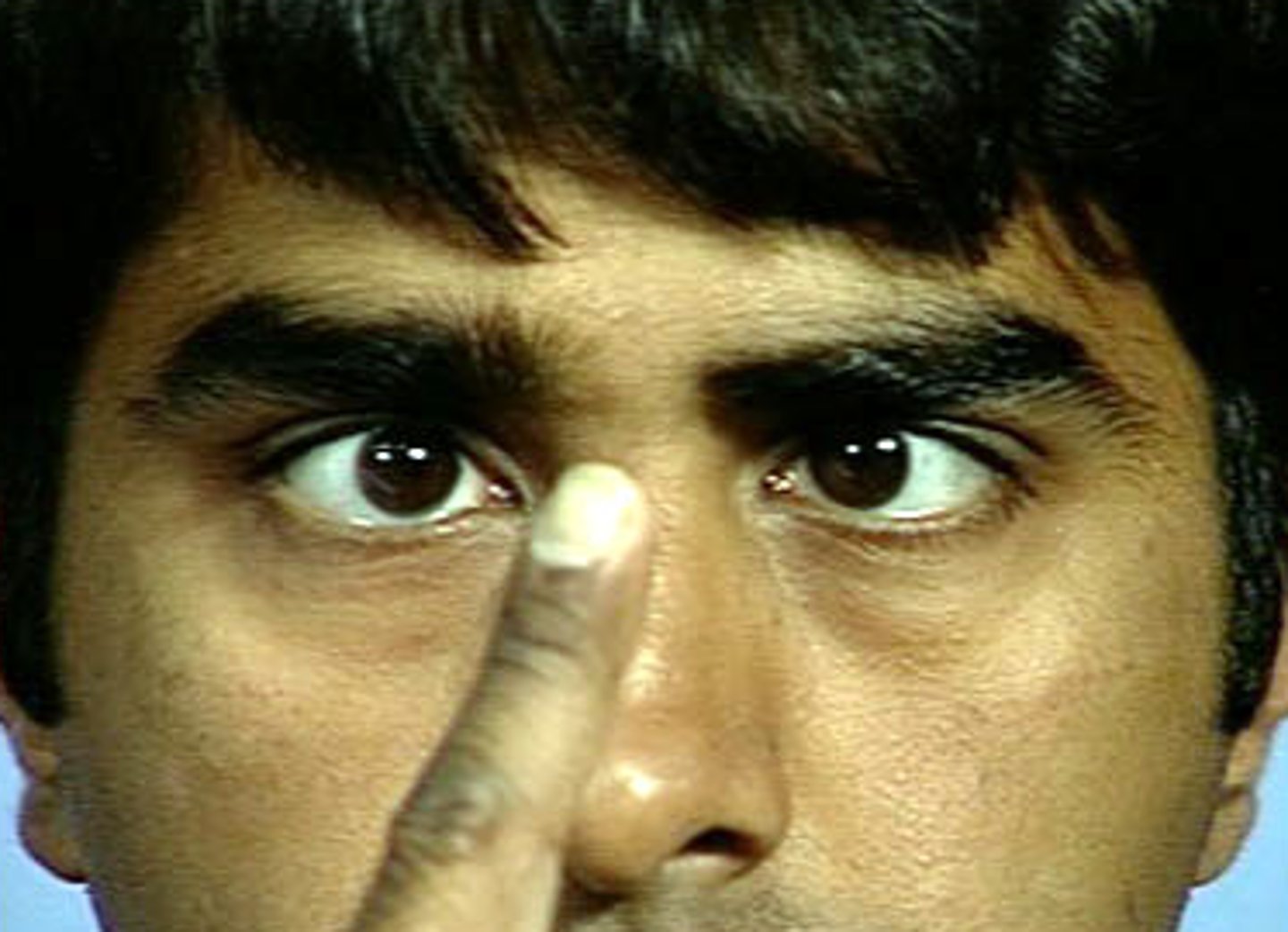
Shape Constancy
our ability to perceive an object as having the same shape, even when our angle of view or the distance from which we see the object changes.
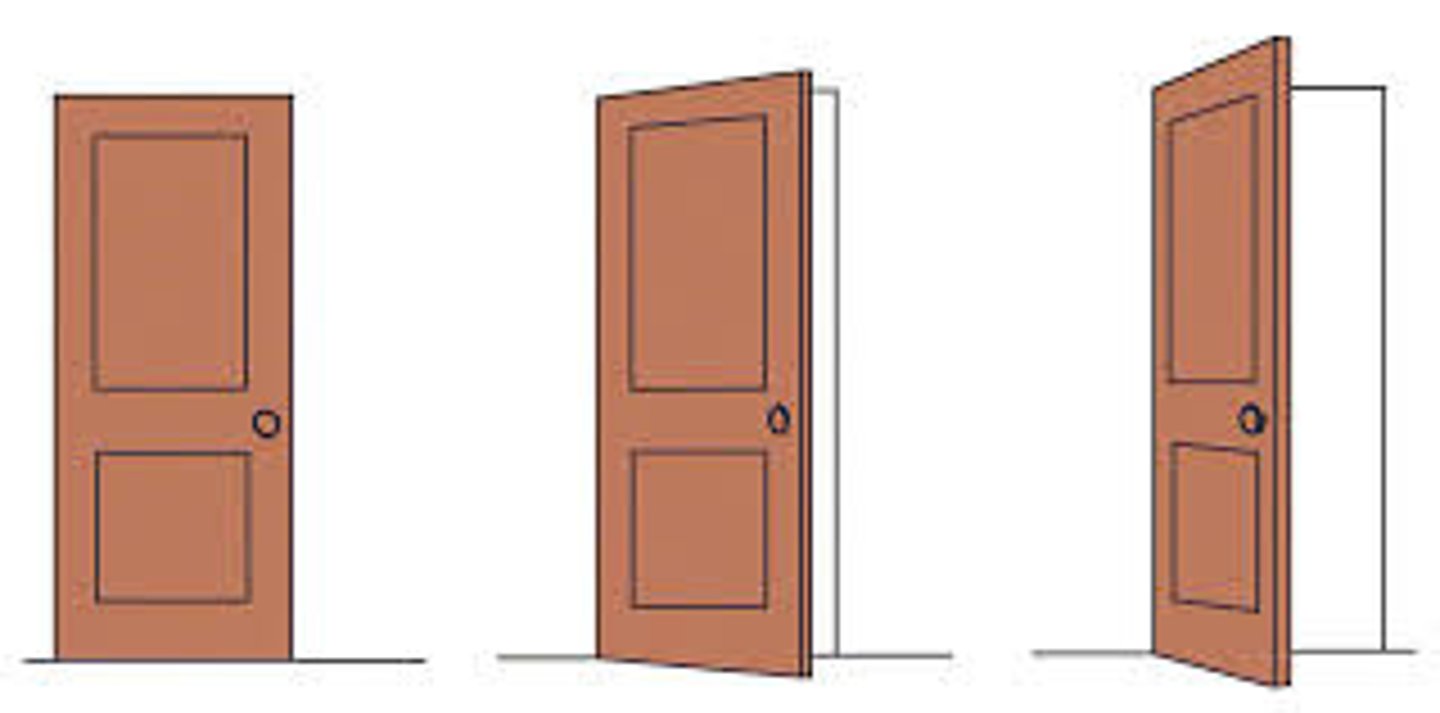
Size Constancy
our perception that an object remains the same size, even when its distance from us changes, causing the image on our retina to grow or shrink.

Color Constancy
ability to perceive colors of objects as stable under varying lighting conditions.
